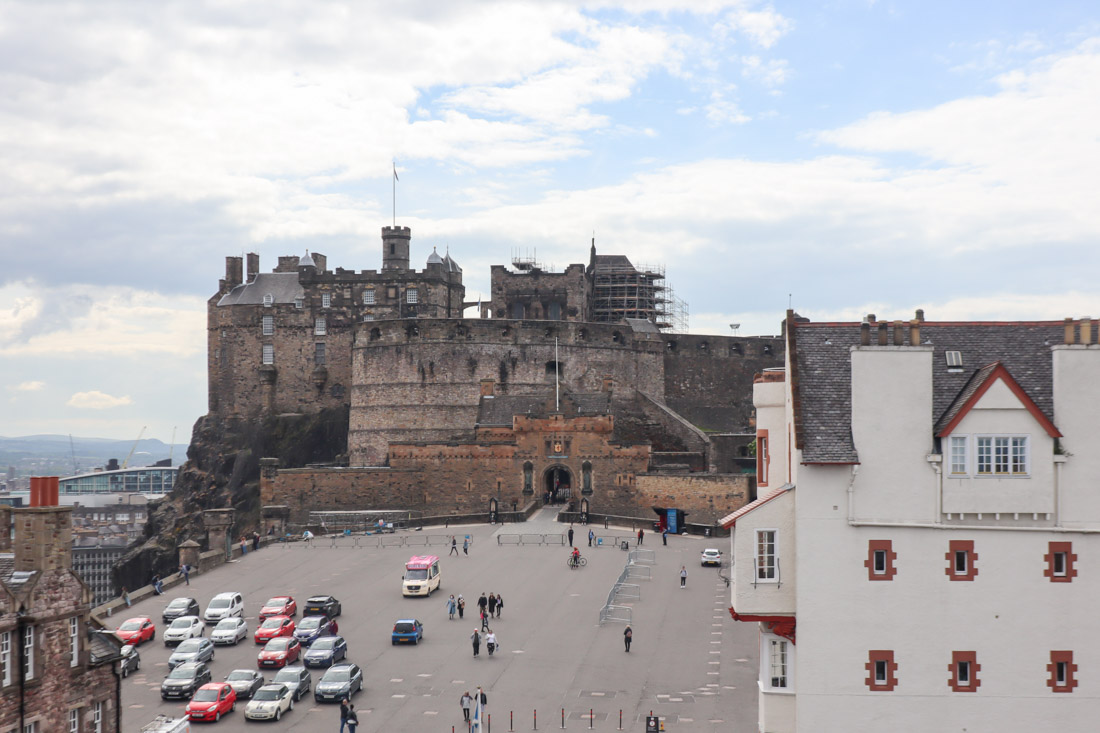This article has links to products and services we love, which we may make commission from.
Planning a trip to Edinburgh? This very detailed guide goes over all of the essential Edinburgh travel information you need to enjoy a stopover, weekend break or an extended trip to Scotland and its capital, Edinburgh.
Each section delves into Scotland travel tips including transport, accommodation, activities, tours, where to dine, what to pack, etiquette, celebrations and the best time to visit.
Since this Scotland travel planner is extensive, you might want to bookmark the URL or save the pin at the bottom of the post so you can refer to it as you move from the inspiration stage through to planning and finally booking your dream trip to Edinburgh and/or Scotland.
If you are planning a trip from the States, check out this article on things every North American should know before visiting Scotland.
Planning a Trip to Edinburgh in Scotland
Practical Edinburgh Information
Where is Edinburgh
Edinburgh is the capital of Scotland which is part of the United Kingdom of Great Britain and Northern Ireland.
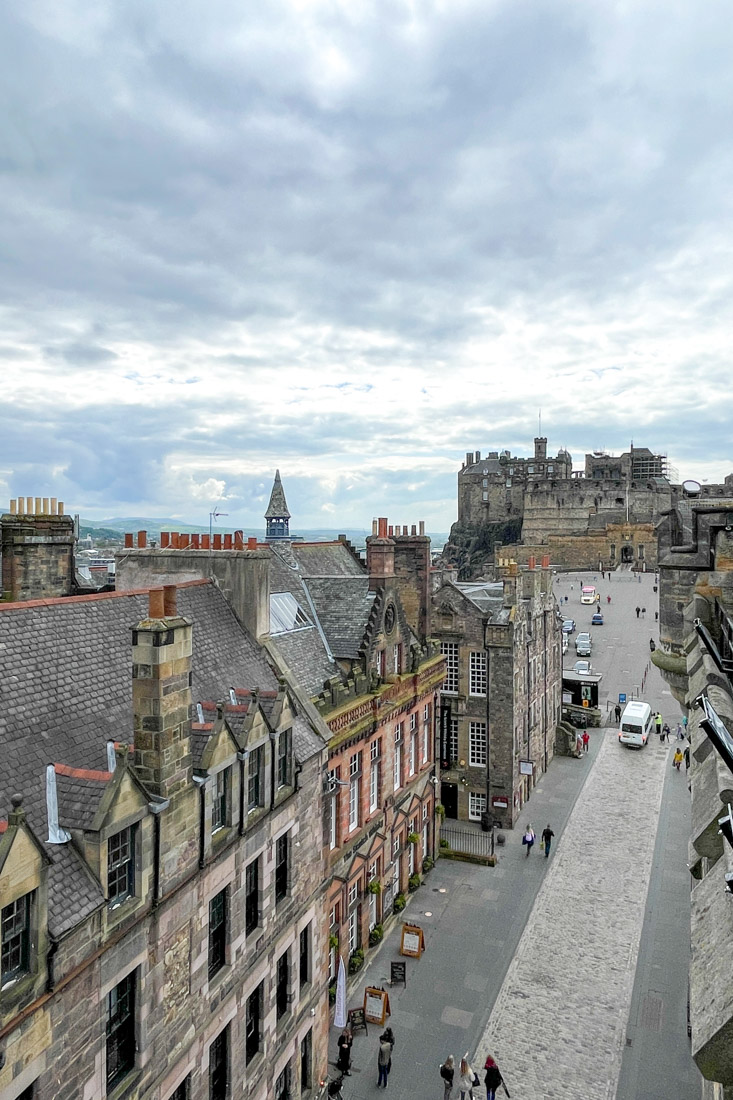
Governance in Scotland
Scotland is a part of Europe but not the European Union.
It has its own devolved Parliament located at Holyrood in Edinburgh.
Reserved matters (immigration, war, taxation) are the responsibility of the UK Government at Westminster in London, England.
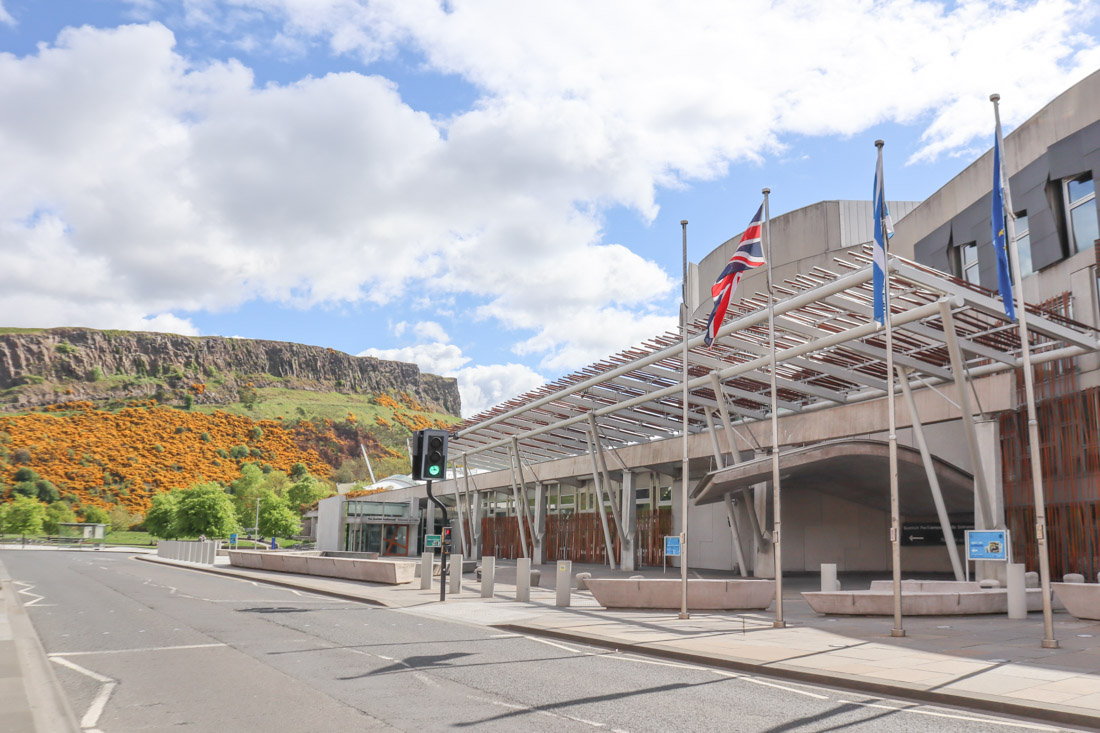
The King is the Head of State, and Edinburgh has outstanding royal-related attractions such as the Royal Yacht Britannia and Holyrood Palace.
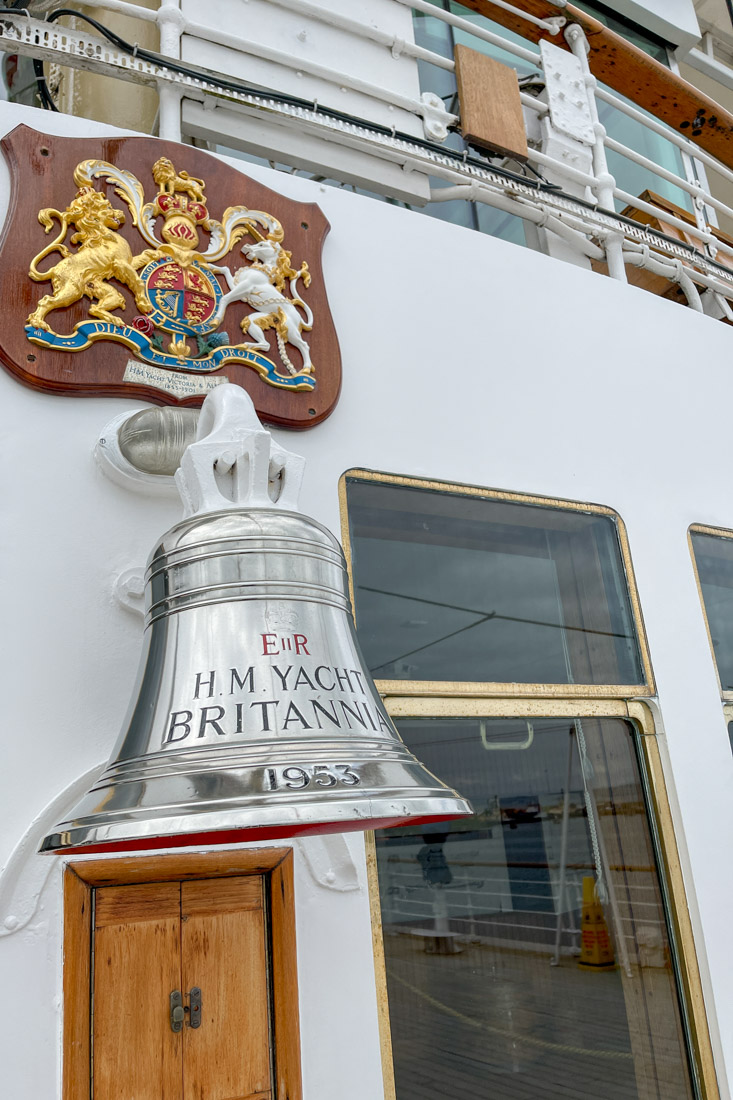
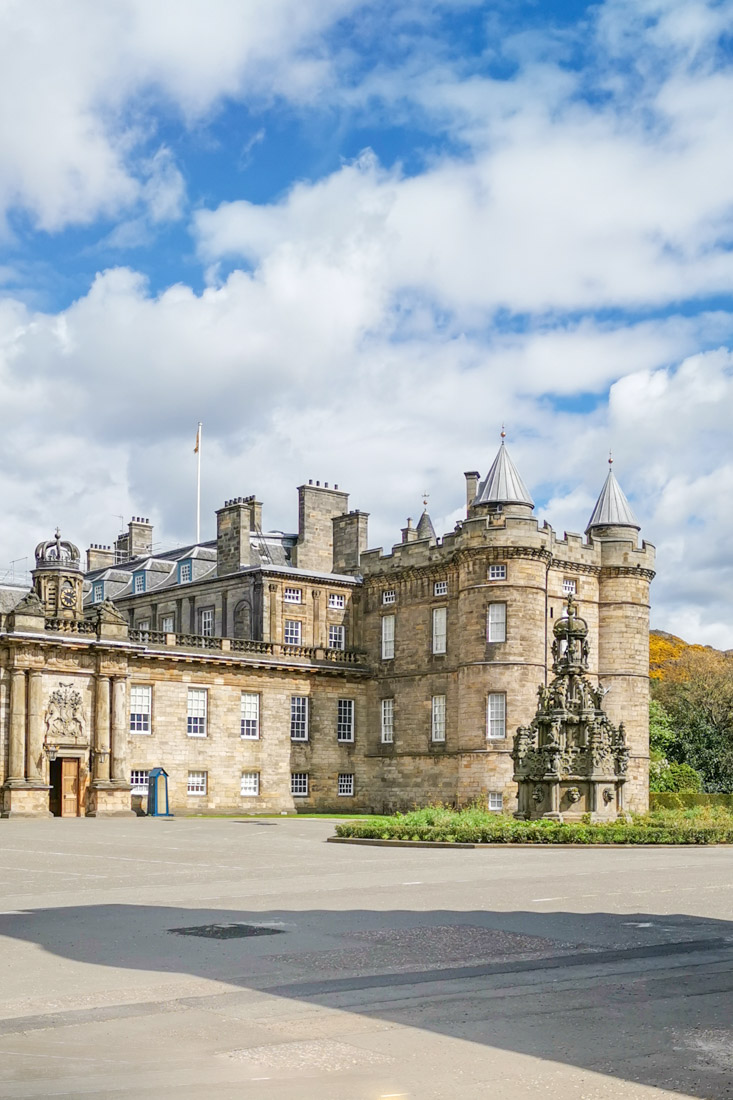
Travel To Edinburgh
There are several ways to get to Edinburgh, depending on how you plan to arrive.
Edinburgh Airport
Edinburgh Airport is 8 miles from the city center.
From Arrivals, you can board the Airlink bus to the center, this is the cheapest option and the journey takes around 40 minutes.
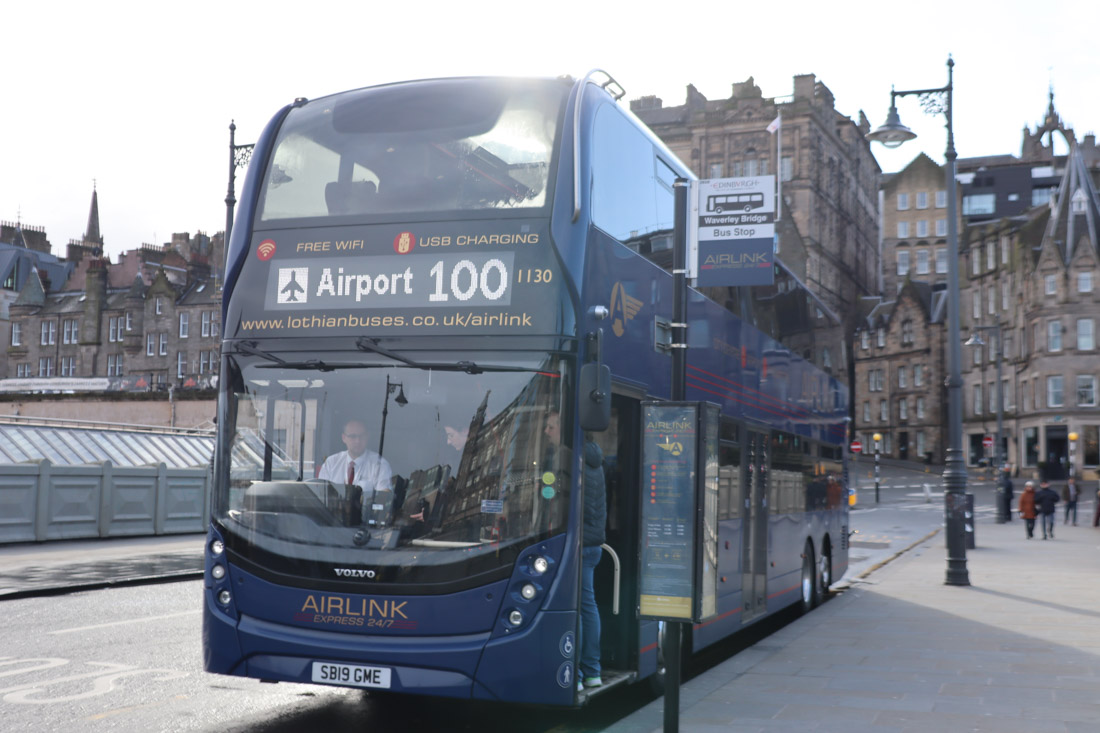
Edinburgh Airport is serviced by trams that stop at Princes Street and St Andrew Square in the very heart of the city.
They also stop at Edinburgh Gateway, Edinburgh Park Station, and Haymarket, which is handy if you have onward train travel planned.
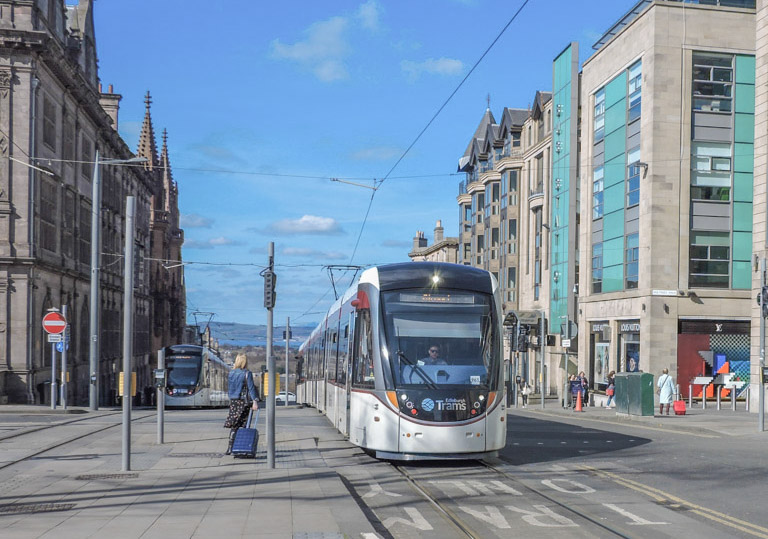
There is no train service between the airport and the city.
Taxi pick-ups are also possible, as are private collections.
You can read about the best ways to get from Edinburgh Airport to the city in our detailed guide.
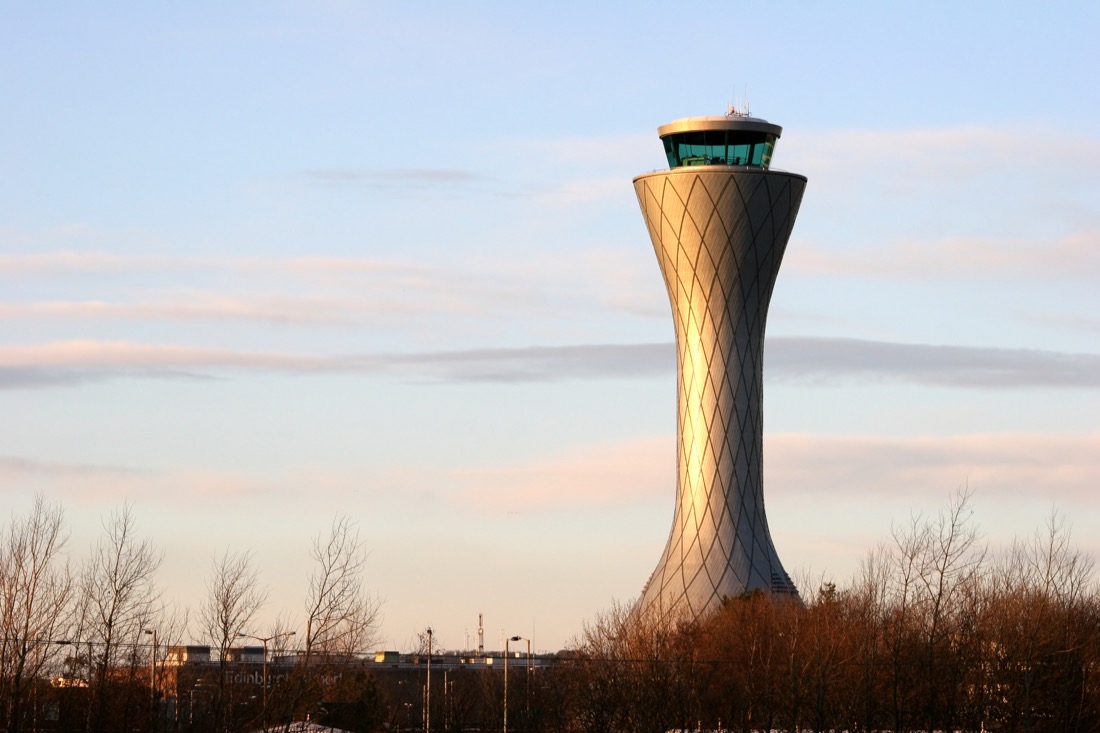
Edinburgh Airport Hotels
There are a handful of airport hotels in Edinburgh.
- Moxy is my go-to for early departures
- Holiday Inn with free shuttle
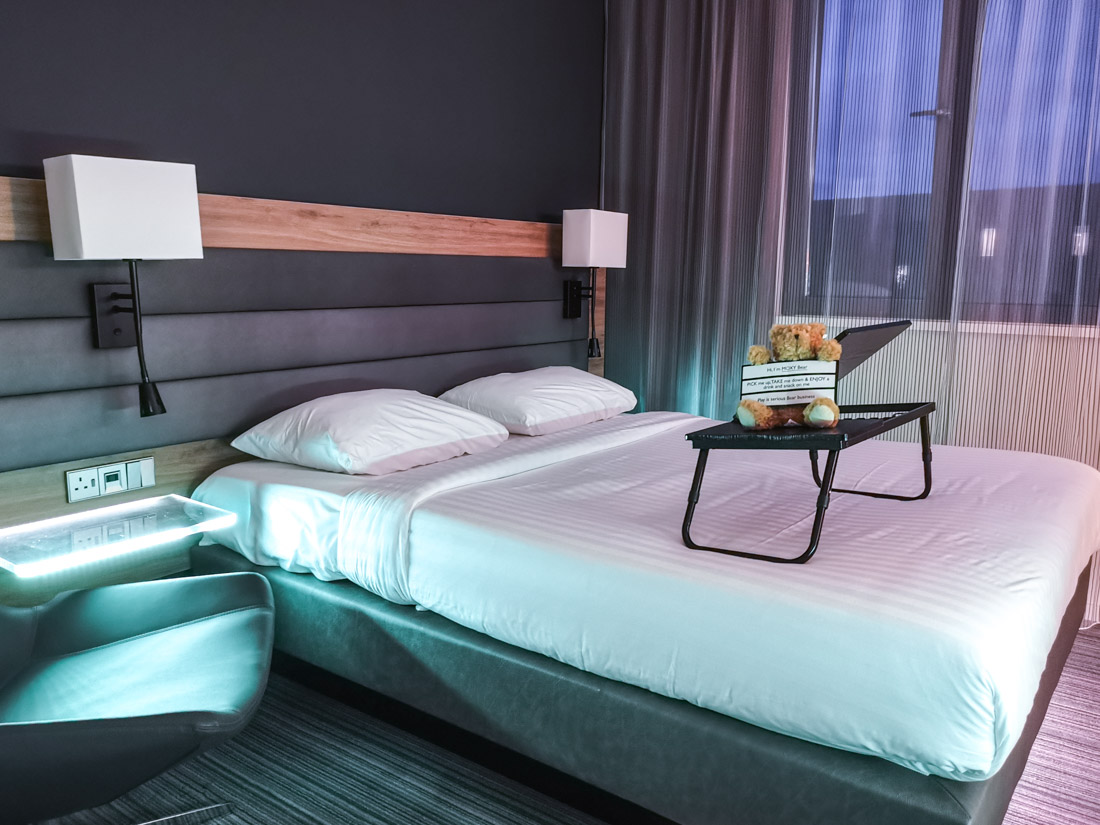
Edinburgh Airport Car Rental
You will find all of the popular car rental companies at Edinburgh Airport.
Avis, Hertz, and Europcar have check-in desks at the Car Rental Centre and drop-off points close to the terminal with free bus shuttles.
You will need a driver’s license to rent a car.
Most rental companies only rent to drivers over the age of 25 years old.
Parking at Edinburgh Airport
Parking at Edinburgh Airport is expensive and should be avoided if you plan to keep costs down.
There are affordable Park and Fly options close to the airport, which offers free shuttle bus services.
If you plan to use this service, pre-arrange before you arrive.
Alternatively, you can use Edinburgh’s Park and Ride stations, where you park your vehicle at your own risk and then take the bus to the airport.
You may also like our guide to parking in Edinburgh.
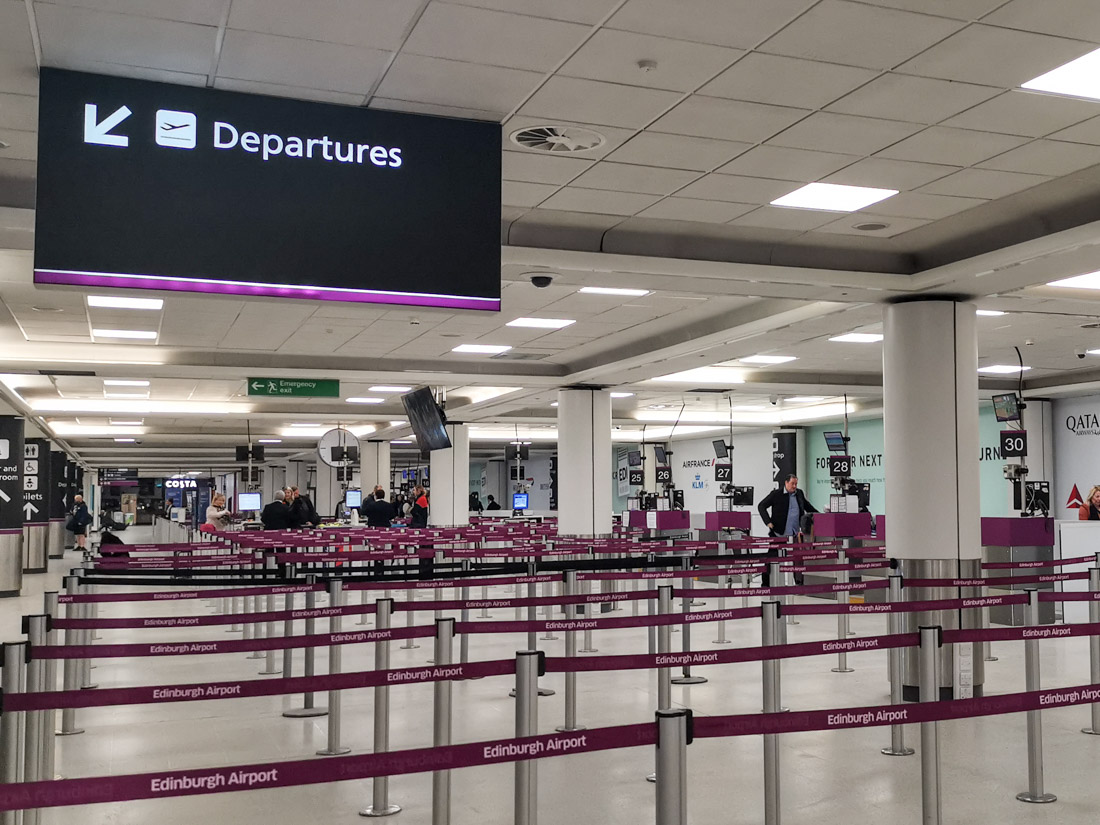
Edinburgh Bus Station
Edinburgh Bus Station is located at St Andrew Square, George Street, and St James Quarter.
You can take the bus to Edinburgh from all major cities such as Glasgow and Aberdeen and most towns in Scotland.
Buses tend to be cheaper than trains but journeys can be longer.
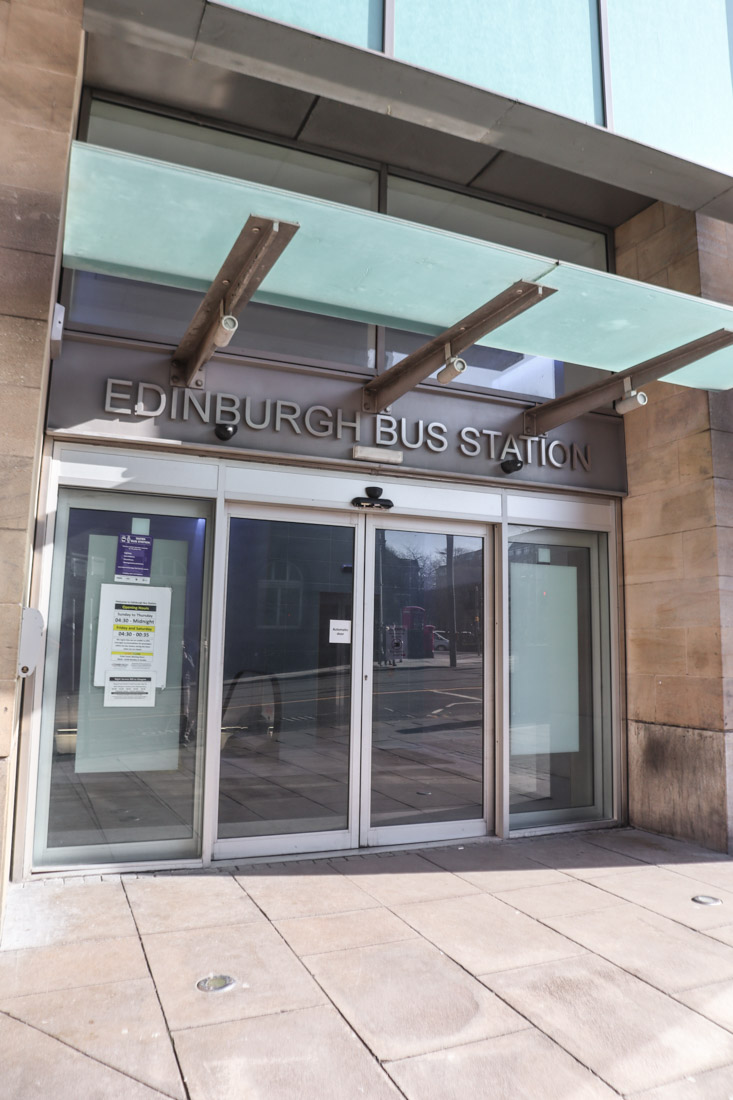
For some destinations, the bus is the only option as there is no central train station, for example, St Andrews in Fife.
If you plan to take any day trips from Edinburgh, our guide to day trips by bus will help you plan your itinerary.
Scotland has many coastal towns and rural visits worth visiting by bus!
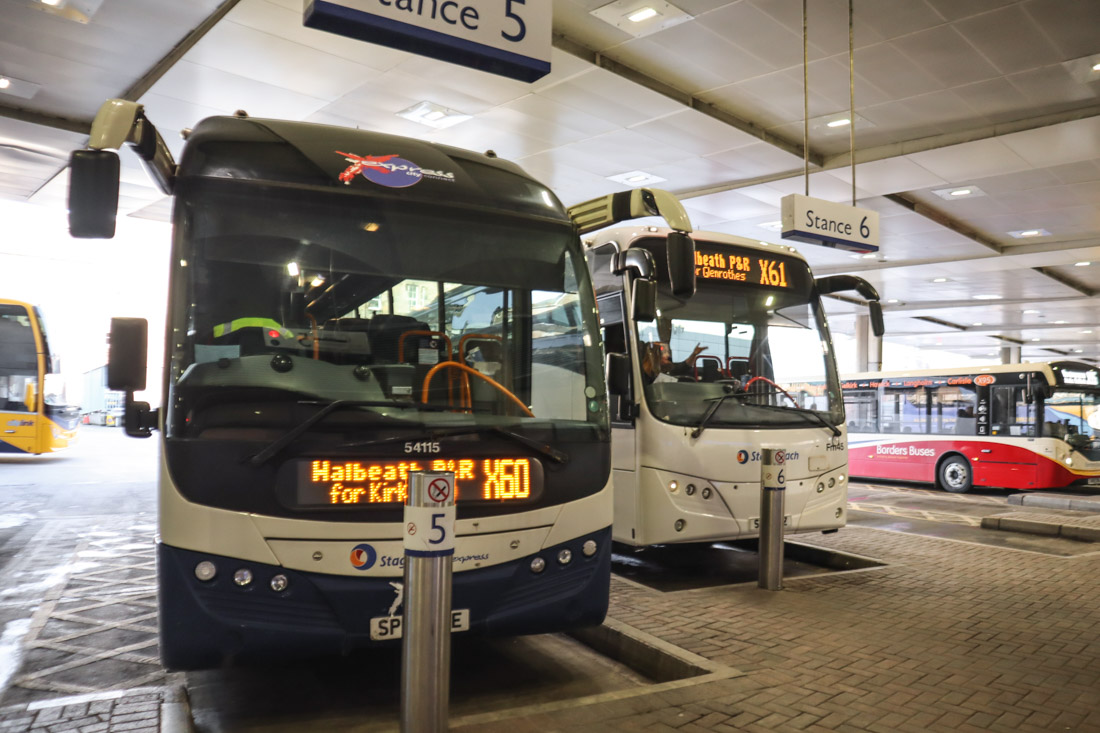
Edinburgh Train Stations
Edinburgh has two central train stations: Waverley Train Station and Haymarket Train Station in the West End.
Many, but not all, trains that start at Waverley, the bigger of the two stations, then stop at Haymarket.
Use apps such as Google Maps or Trainline to help plan your journey.
Train services do not run all night.
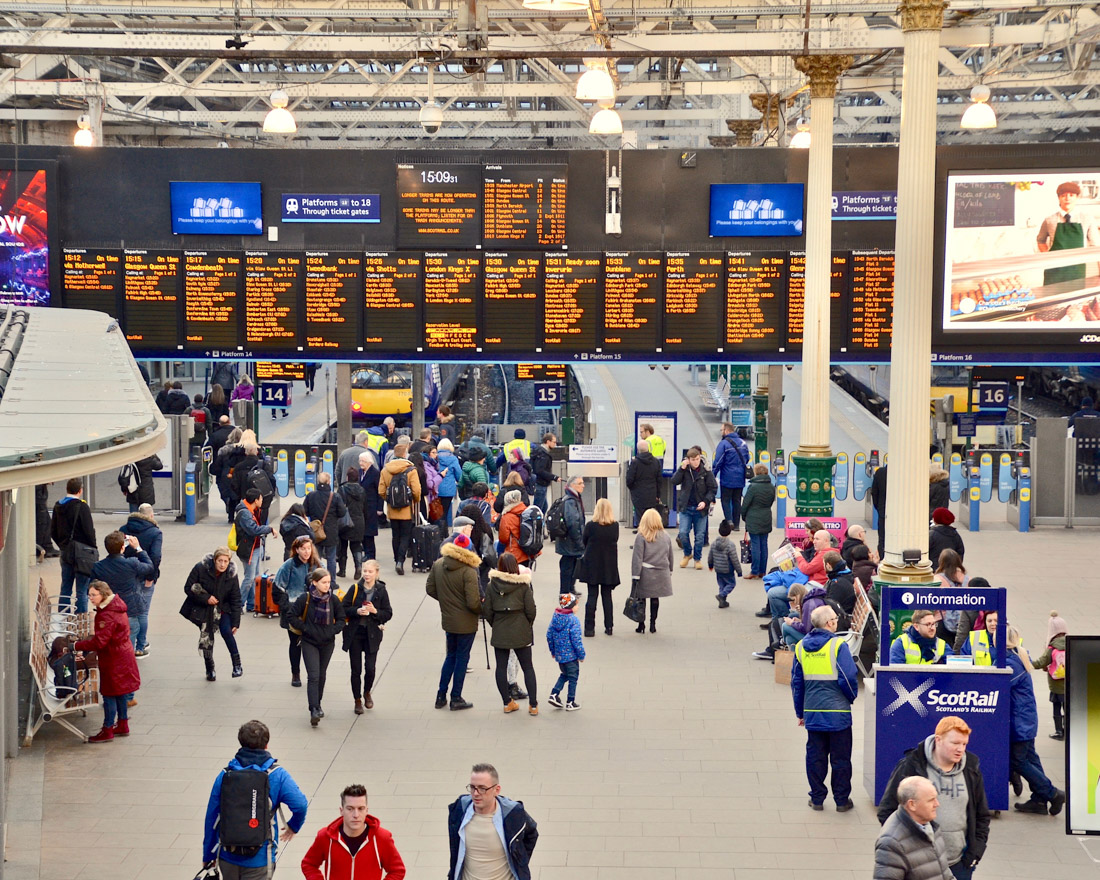
Both stations have elevators, coffee shops and toilets.
Waverley also has a pub and Burger King.
Tickets for longer journeys should be booked in advance to avoid disappointment, and so you can access the lowest prices.
You must have your ticket when entering and exiting the train at both stations as there are barriers.
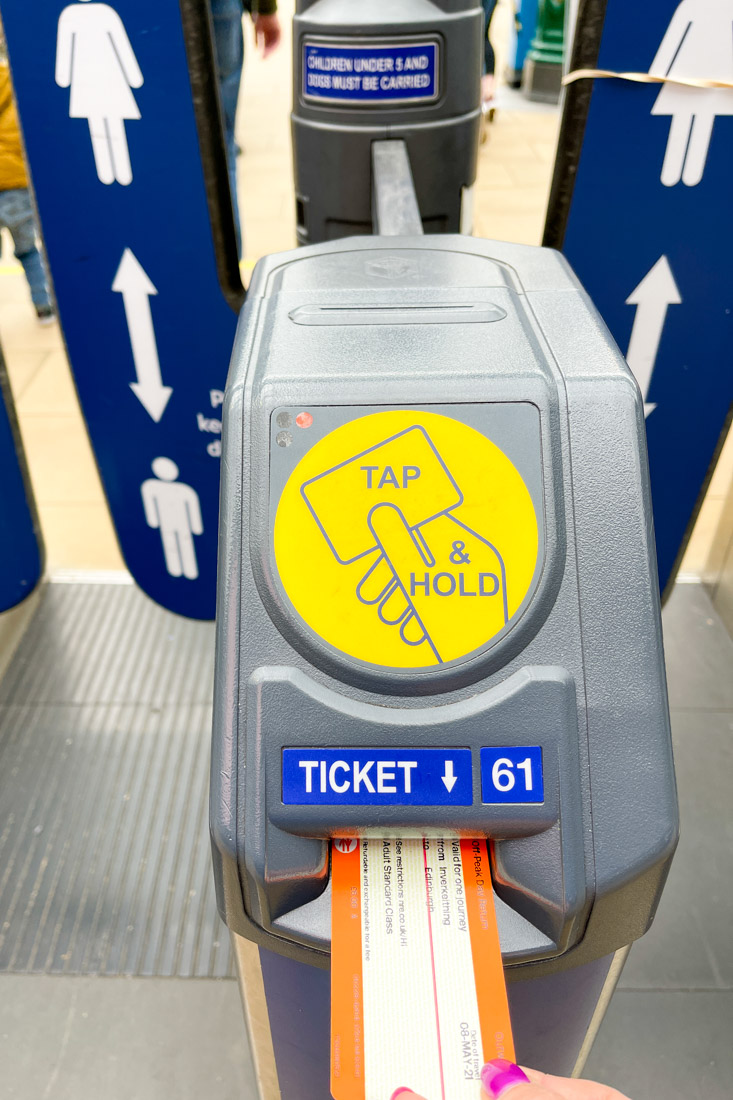
If you arrive without a ticket, you can buy one at the ticket office; however, expect long lines.
Trains have toilets on board for your comfort.
Most trains have tables and luggage storage.
To enter and exit the train, wait for the button to flash, then press it to request the doors to open.
Sometimes, two trains leave from the same platform, so double-check that you are on the correct train before it departs.
Check the big screens at Waverley and Haymarket for train times and platform numbers.
Give yourself at least 10 minutes to get from one side of Waverley to the other, and don’t expect trains always to use the same platform.

There are two main exits at Waverley Train Station.
One takes you to Princes Street in the New Town next to The Balmoral (taxi rank), which is ideal for those with hotels on Princes Street and George Street.
The other exit takes you to Market Street, which is the closest exit to the Old Town.
There is a taxi rank at both exits.
Many fun places can be visited by trains, such as Dunbar, North Berwick, South Queensferry, Dunfermline (image), the Kelpies at Falkirk, and big cities like Glasgow, Dundee, Aberdeen, and Inverness.
Find out more in our post on Edinburgh day trips by train.
The city has two stations on the outskirts that link to the airport tram service, Edinburgh Park and Edinburgh Gateway, as well as a number of local train stations such as South Gyle (shopping center) and Dalmeny (South Queensferry).
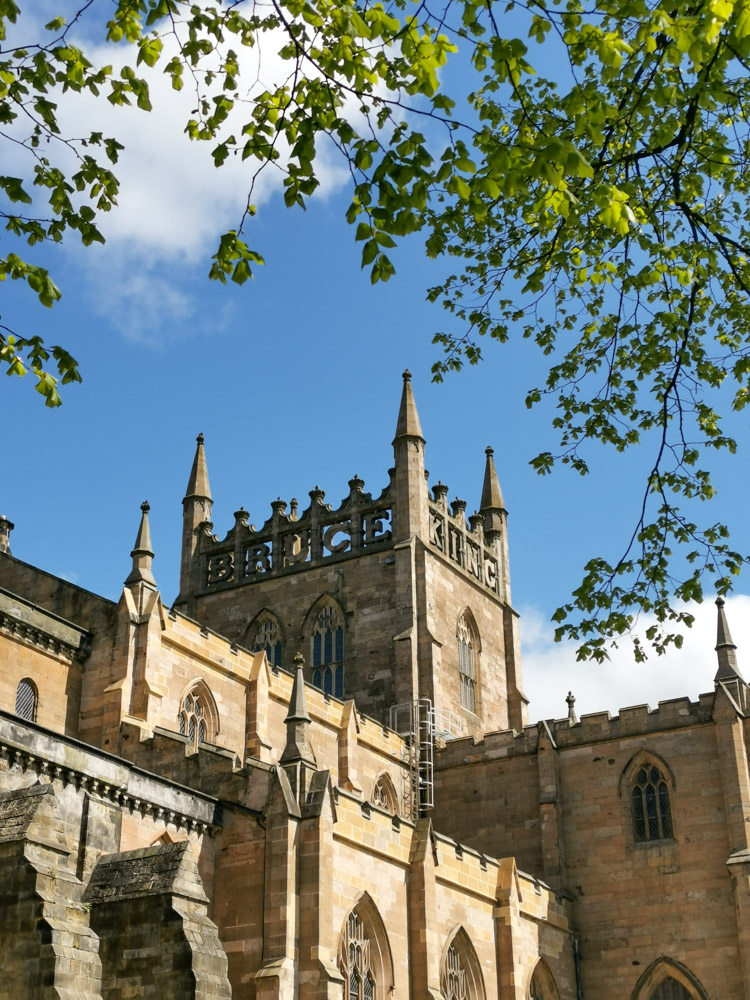
Lockers in Edinburgh
If you’d like to store your luggage you can ask your hotel or apartment if they allow this, hotels normally offer a free left luggage service on the day you check out.
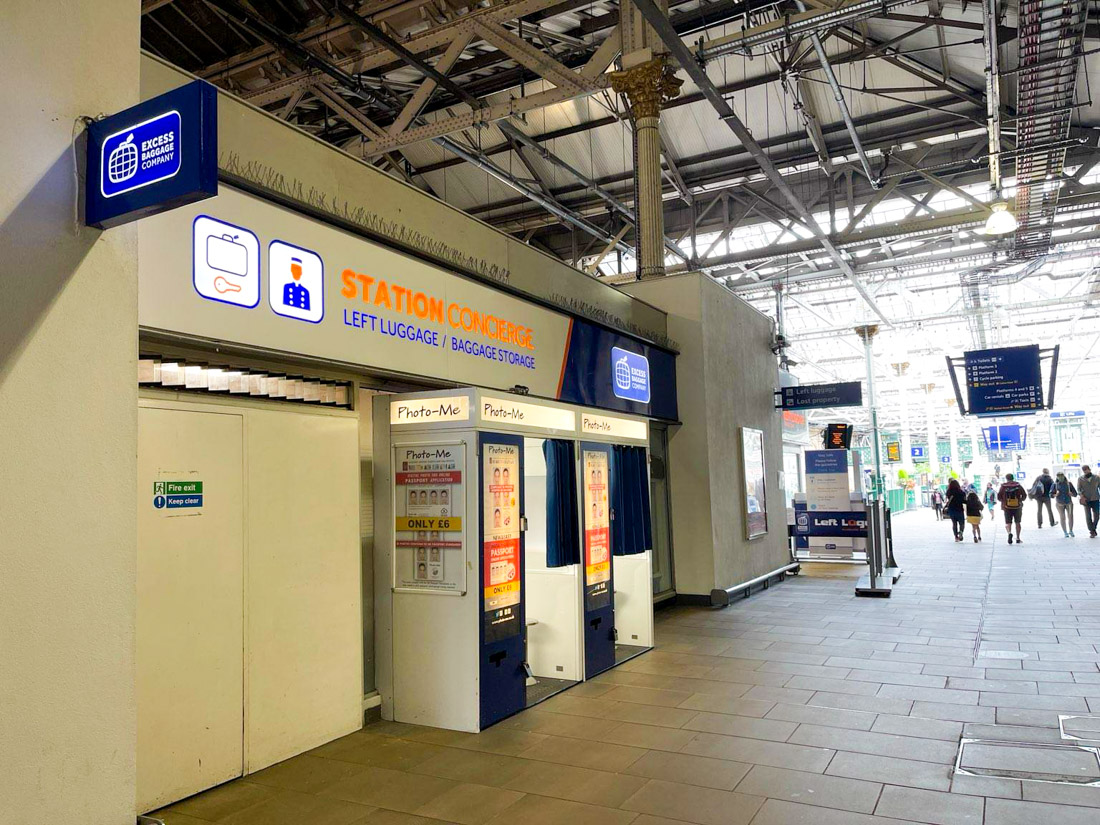
If you need to leave your luggage for longer or during a day trip, there are luggage services at Edinburgh Bus Station and Waverley Train Station.
Showering in Edinburgh
If you’ve arrived on an overnight train or bus and need to shower before you start your day, check out the showers at Waverley Train Station or Edinburgh’s leisure centers with swimming pools, such as the Commonwealth or Leith Victoria.
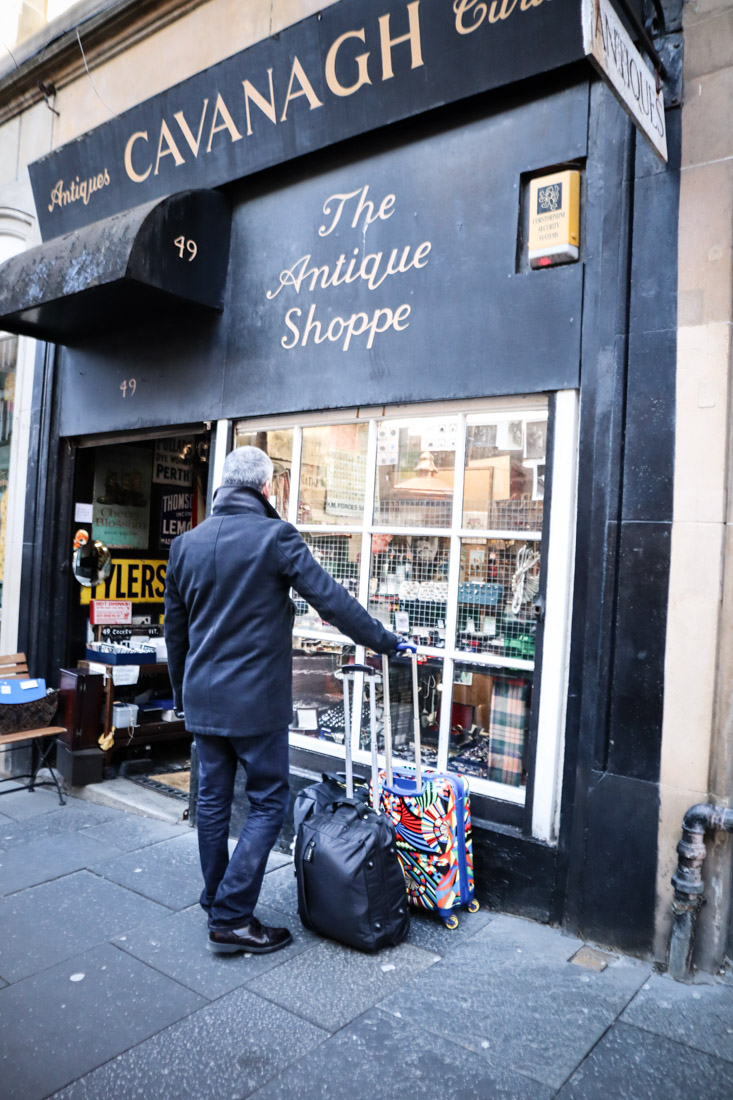
Getting Around Edinburgh
The main way to get around Edinburgh is by foot!
Since Edinburgh’s main attractions are mainly located in the Old Town, you can wander around at your own pace.
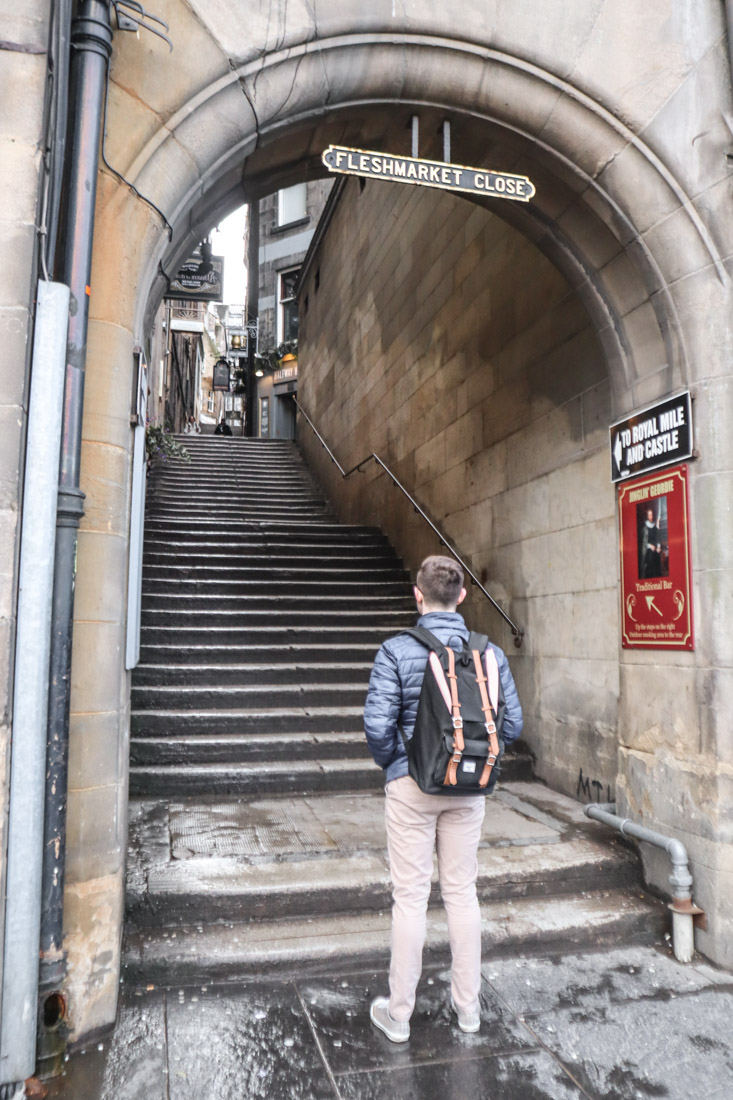
For New Town neighborhoods such as Leith and Stockbridge, there is a lovely path called the Waters of Leith that you can join from the West End, leading to the very pretty Dean Village.
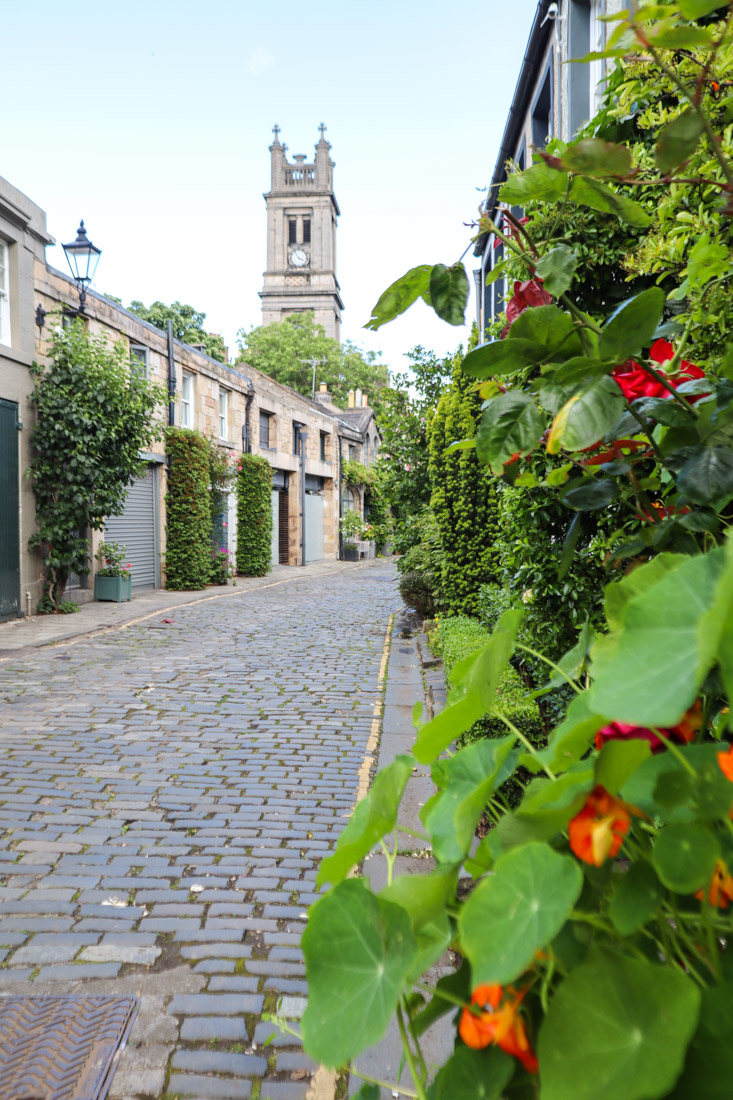
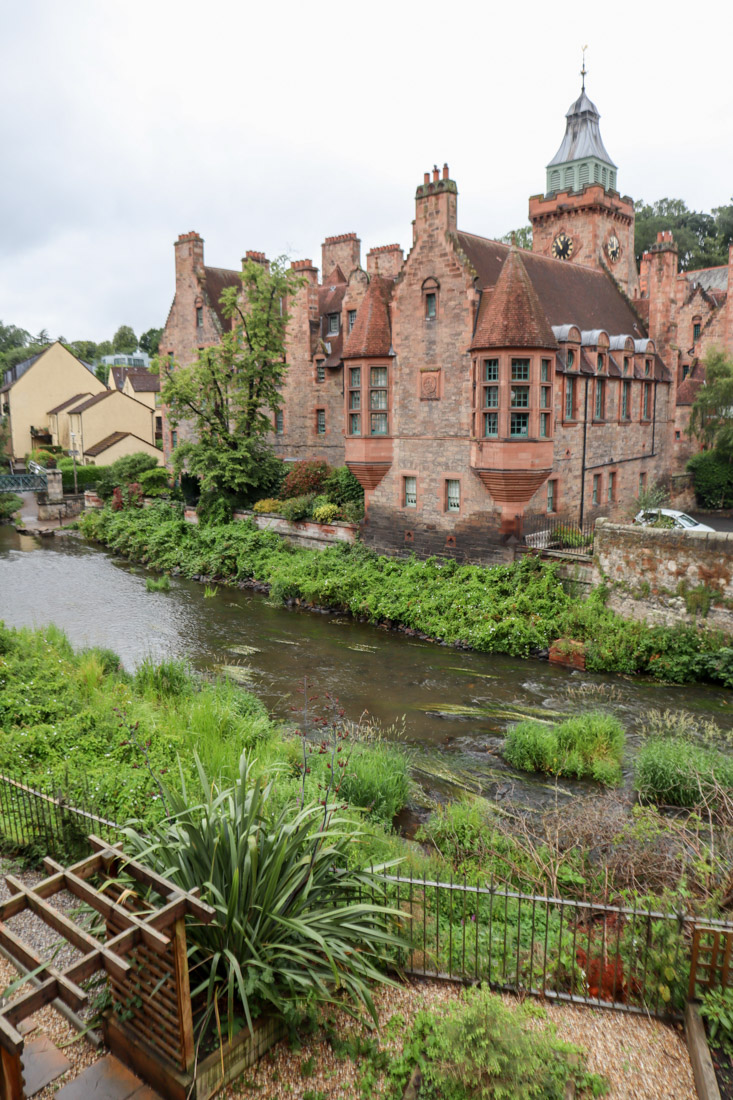
If you’d like to save your feet at times, there is a city bus service, and lots of bus stops around the center.
Lothian Buses has a free app and live tracker to help plan your journey.
You can pay for your fare (ticket) on the bus using most UK debit and international credit cards.
You are never far from a taxi rank in the city center, and Uber operates but can be just as expensive as ‘black hack’ taxis.
You can flag a black cab if it has its light on.
The meter inside the cab shows the price of the journey.
Fare can be settled in cash or by card.
Edinburgh Hop-On/Off Bus
If you are short on time or want a guided tour, check out the Edinburgh Hop-on/Off Bus.
Routes go as far as Leith, which is ideal for the Royal Yacht Britannia.
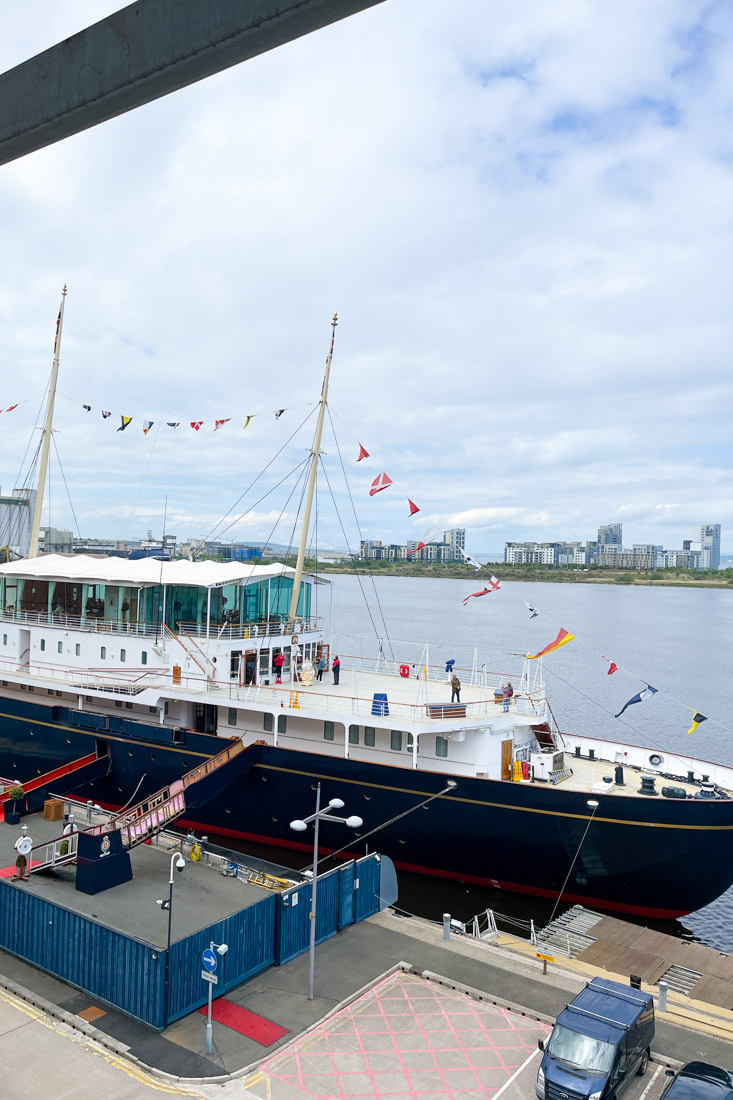
Car Rental in Edinburgh
Edinburgh car rental services are found at the airport, in the city center, and on the outskirts.
- Hertz: 10 Picardy Pl Edinburgh EH1 3JT
- Avis: 24 E London St, Edinburgh EH7 4BQ
- Enterprise: 12 Annandale St, Edinburgh EH7 4AN
- Arnold Clark: 1 Seafield St, Edinburgh EH6 7LG
Planning a bigger Scotland trip? Here’s our extensive 7-day Scotland itinerary. We’re very proud of it!
Driving in Edinburgh
Driving in Edinburgh is a nightmare, and that is coming from a local who used to work for Avis.
Cobbled streets, one-ways, tall buildings, tourists, trams, traffic lights, and construction all make driving around this medieval city stressful.
If you can, avoid driving.
If you must drive, remember we drive on the left and give way to the right at roundabouts.
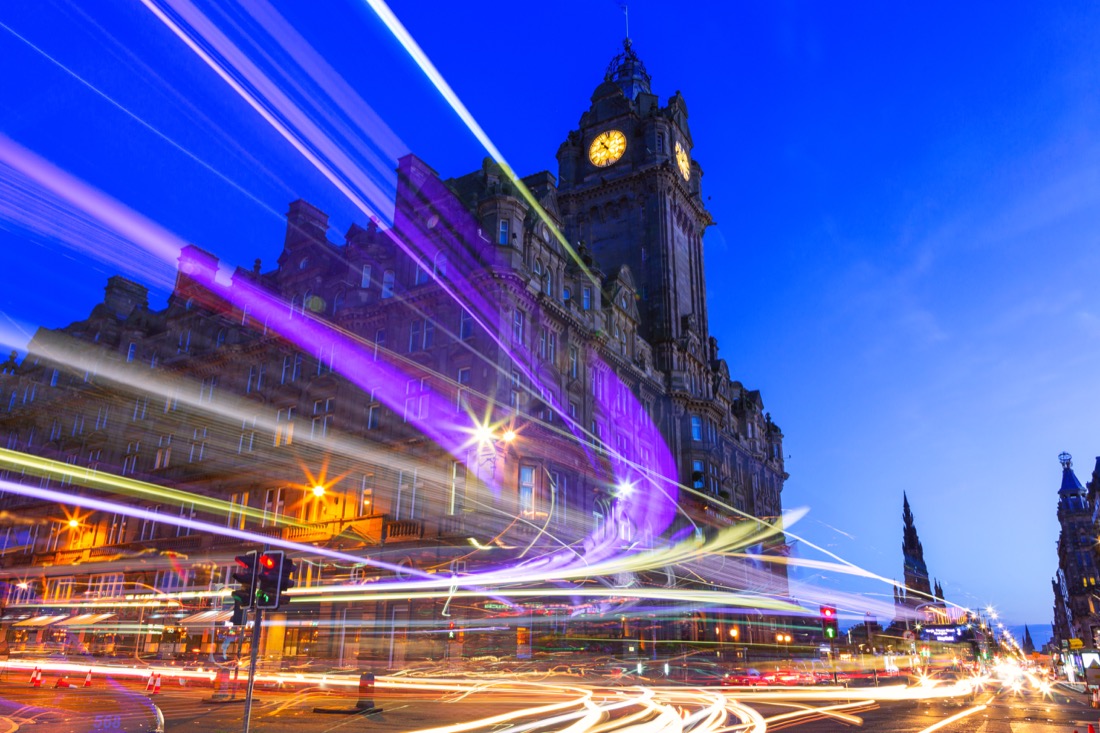
Parking in Edinburgh
There is no free parking in Edinburgh City Centre Monday to Saturday, 8am to 6:30 pm.
Parking is free in the evenings and on Sunday mornings before 12:30pm.
There are NCP car parks just off Lothian Road (Castle Terrace) and Holyrood (near Arthur’s Seat), but expect to pay premium prices.
On-street parking can be paid for with coins or apps such as Ringo.

Avoid permit holder spaces; never park on double yellow lines or in bus lanes. You will be fined.
Disabled drivers have blue badges in Scotland and can park in fee-paying bays for free.
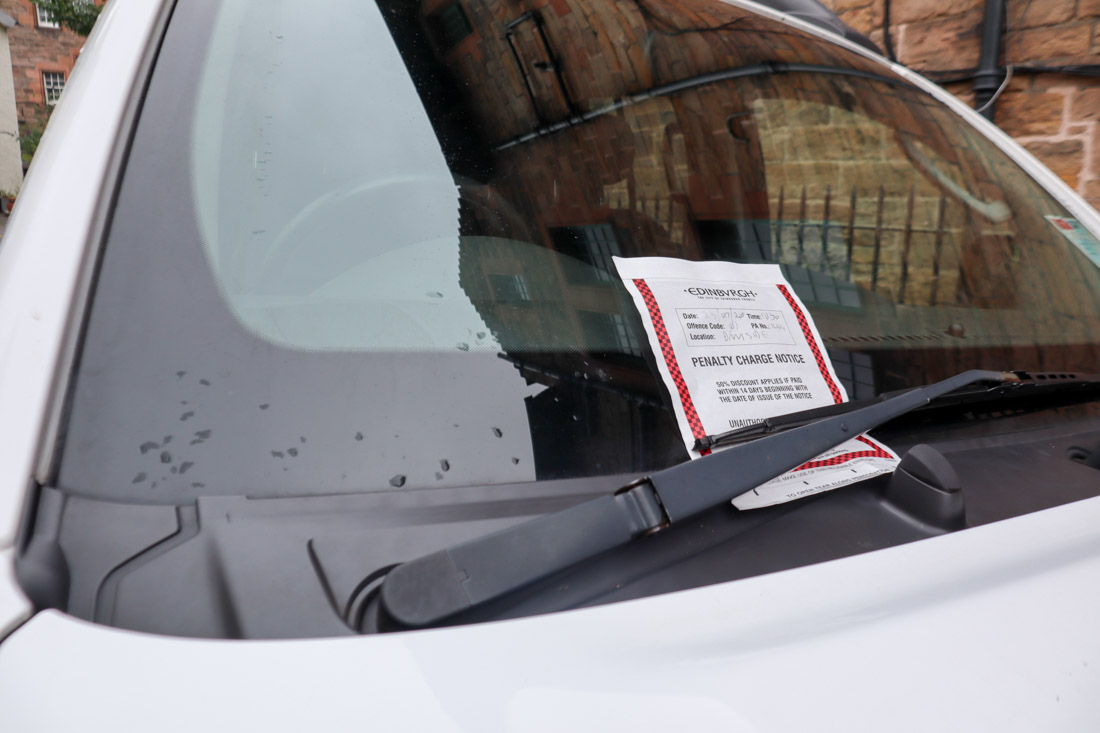
Park and Ride is a great option as you can park just outside of the city and take a stress-free bus journey in.
Full details about parking in Edinburgh can be found in our guide.
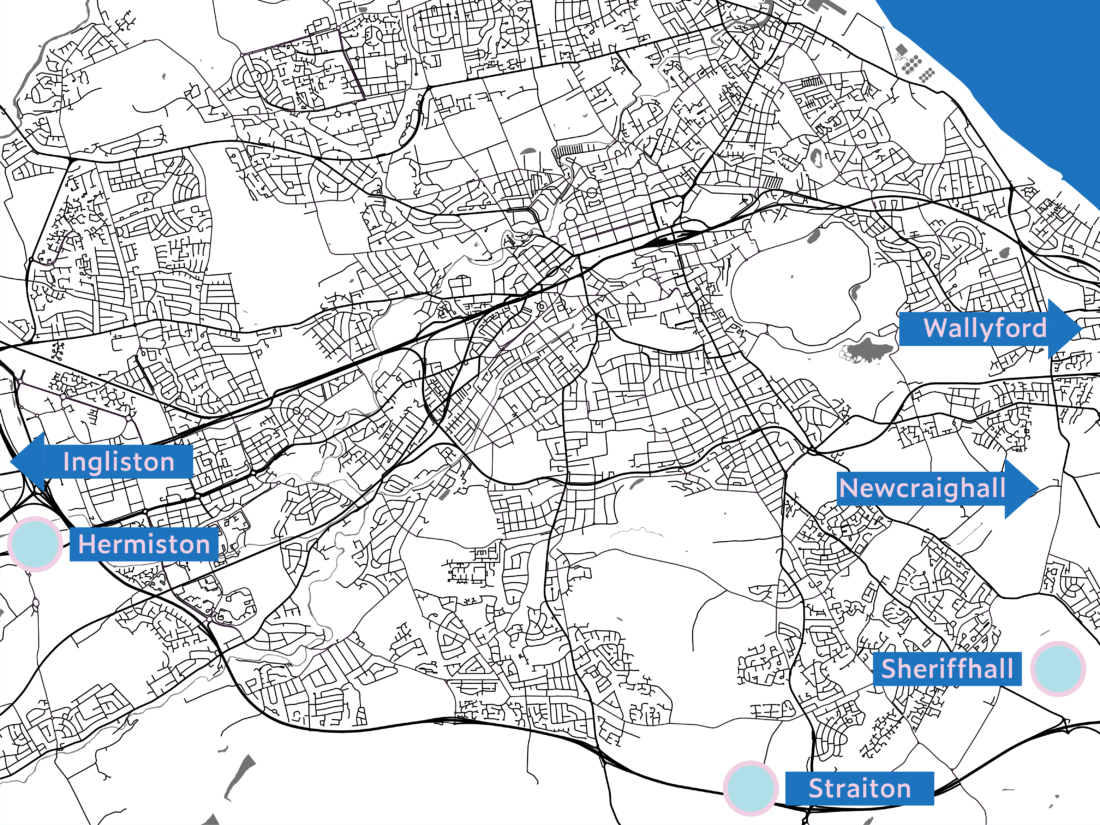
Driving in Scotland
Driving in Scotland can be relatively easy once you are out of the city and comfortable with driving on the left.
Most built-up areas have a speed limit of 30 mph, dual carriageways tend to be 60 mph for cars, and motorways max out at 70 mph.
Speed-checking measures can be found all over Scotland on all types of roads.
Roundabouts help control traffic flow, and drivers give way to traffic on the right.
Like roads in built-up areas, some roundabouts have traffic lights.
Red means stop, amber tells you to get ready to go or stop, and green means go.
If driving in rural areas, you will encounter the Scottish single-track roads and passing places.
‘A’ roads are tight and have designated spaces to the side where drivers pull over to let others pass.
If you plan to visit distilleries in Scotland, it is best to have a designated driver, as we have a very low tolerance for drunk driving.
Most Scots don’t drink and drive at all as it’s hard to know how much 22 microgrammes of alcohol in 100ml of breath (the ‘breath limit’) or 50 milligrams of alcohol in 100ml of blood (the ‘blood limit’) is.
It is illegal to use your phone and drive, so start your maps app and press play on your playlist before you drive off.
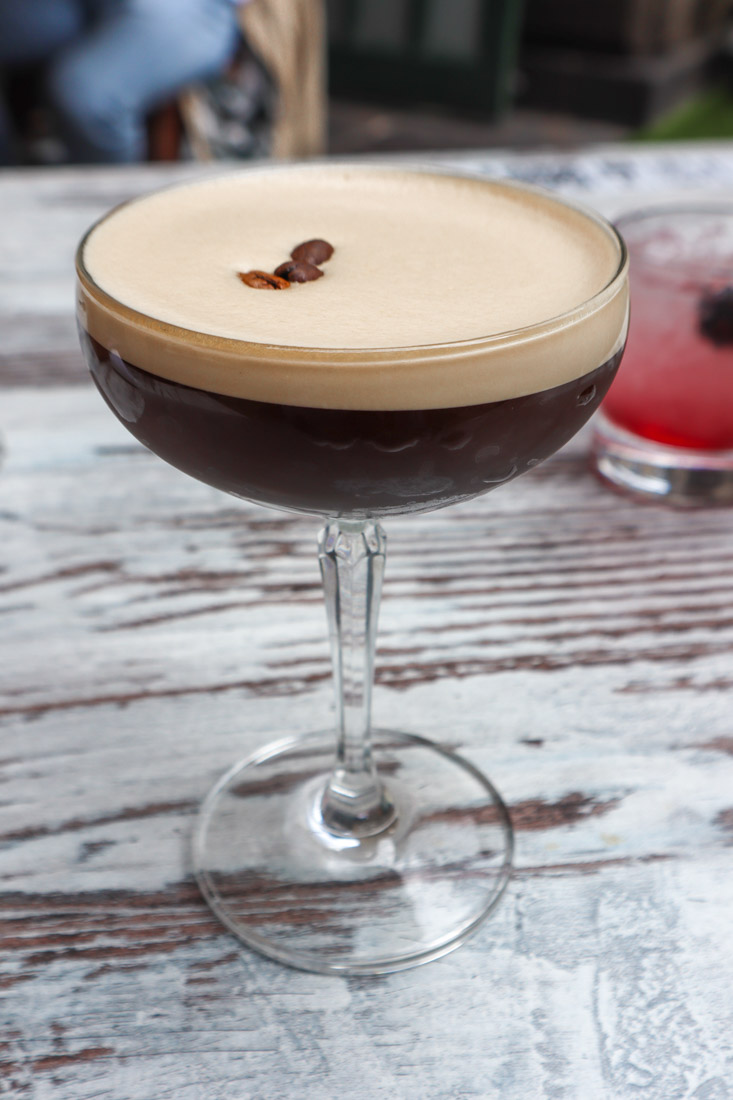
Cycling in Edinburgh
Edinburgh has cycle lanes around the city where cars should not drive in.
There are many cycle networks that are identified by blue signs with bikes on them.
Both of Edinburgh’s beach esplanades are popular with cyclists.
Bike parking is found all over the city, but at the owner’s risk.
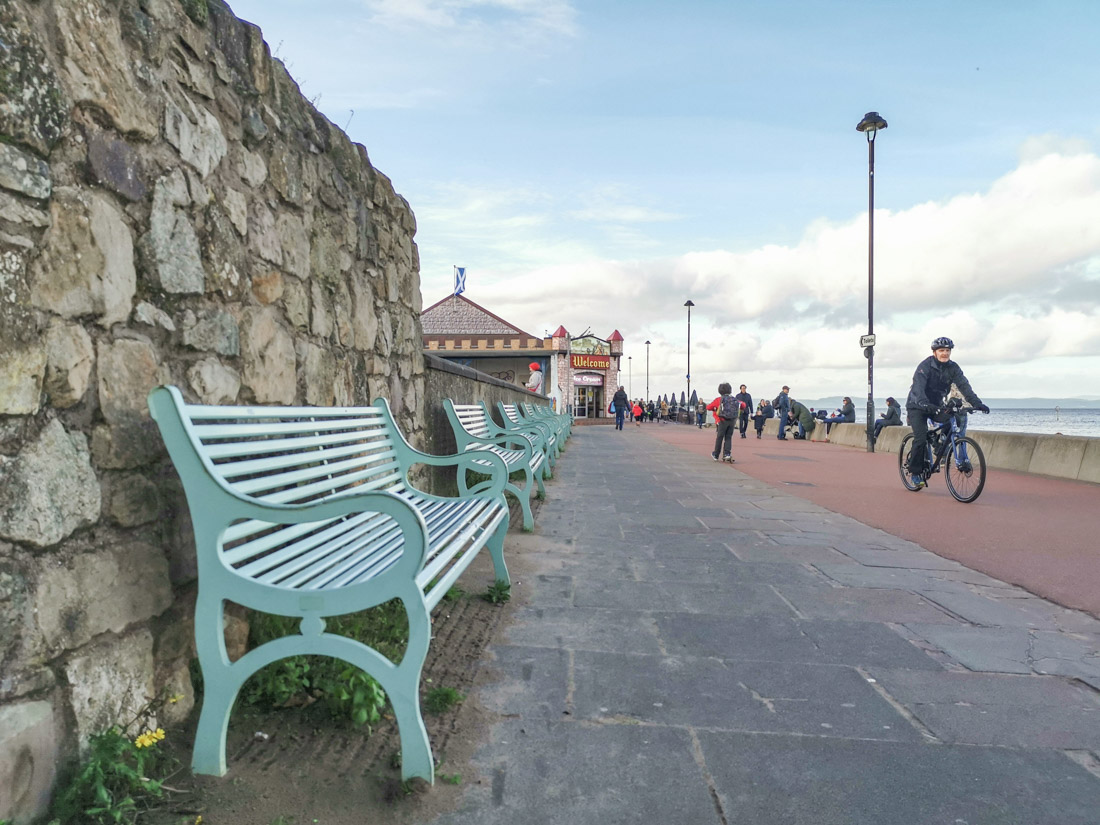
Places, Identity, and Culture
Neighborhoods in Edinburgh
Edinburgh doesn’t tend to refer to its area as neighbourhoods, but it does have distinct areas with its own characteristics.
- Old Town – Heart of history, immersed in attractions
- New Town – Shopping, restaurants and bars around Princes Street and beyond
- City Centre – Old Town and streets off Princes Street
- Stockbridge/Dean Village – Pretty, upmarket
- Leith – Hip, young, bars, food & nice walks by the water
- West End – Shopping and dining
- West Edinburgh – Up and coming, home to Murrayfield
- Southside – Studenty, families, home to The Meadows

Languages in Edinburgh
English is the main language written and spoken in Edinburgh, with a Scottish accent, of course.
Written English differs between the UK and the US.
Some words are spelled differently, for example, travelling (UK) and traveling (US) or neighbourhood (UK) and neighborhood (US).
Some food types and everyday items differ, too.
For example, liquor and alcohol or chips/crisps and fries/chips.

Very few people speak Scots Gaelic in central Scotland—less than 1% in Edinburgh.
The East Coast accent tends to be easier to understand than Glaswegian. Sorry, Glasgow, we still love you!
Check out our popular guide to Scottish slang words and lingo.
Thanks to a huge student and ex-pat community, you will hear many international accents around the city.
Many Australians work in hostels and bars, so don’t be surprised to hear an Aussie twang.
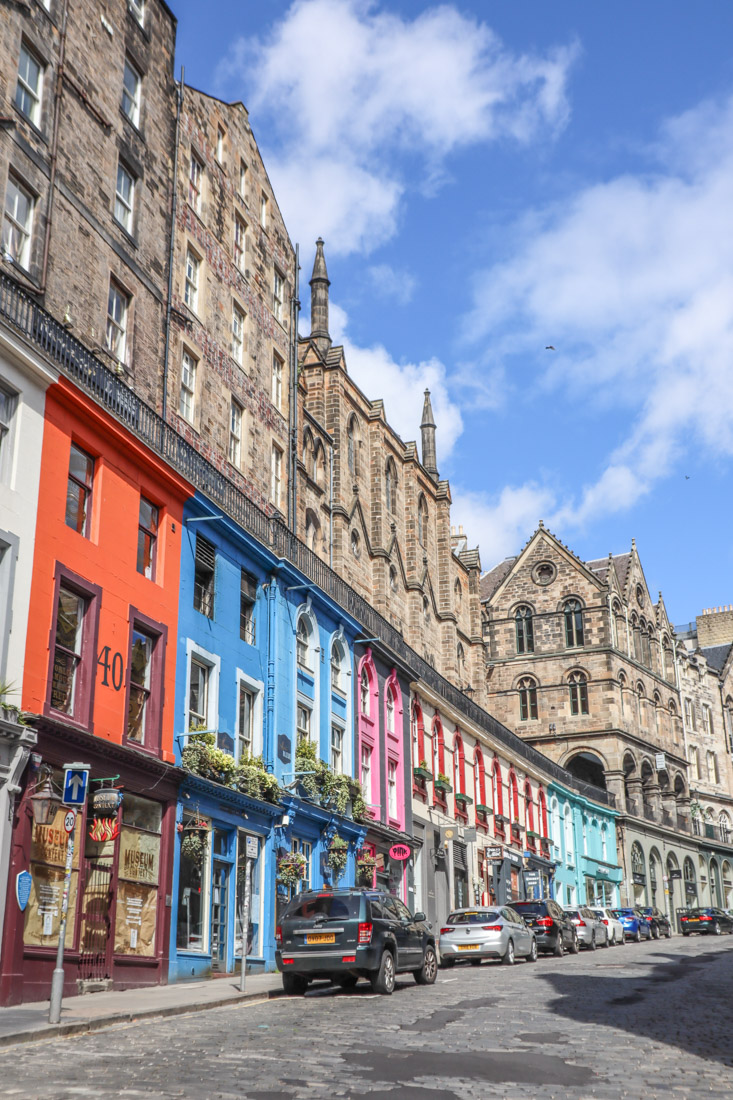
Identity in Edinburgh
The National Records of Scotland estimates the population at 524,930.
According to the last Census in 2011, the ethnic makeup of Edinburgh was:
- White – Scottish 70.3 percent %
- White – Other British 11.8 percent %
- White – Irish 1.8 percent %
- White – Polish 2.7 percent %
- White – Other 5.2 percent %
- Asian, Asian, Scottish or Asian British 5.5 percent % Other ethnic groups 2.8
- Scotland as country of birth: 70.2%
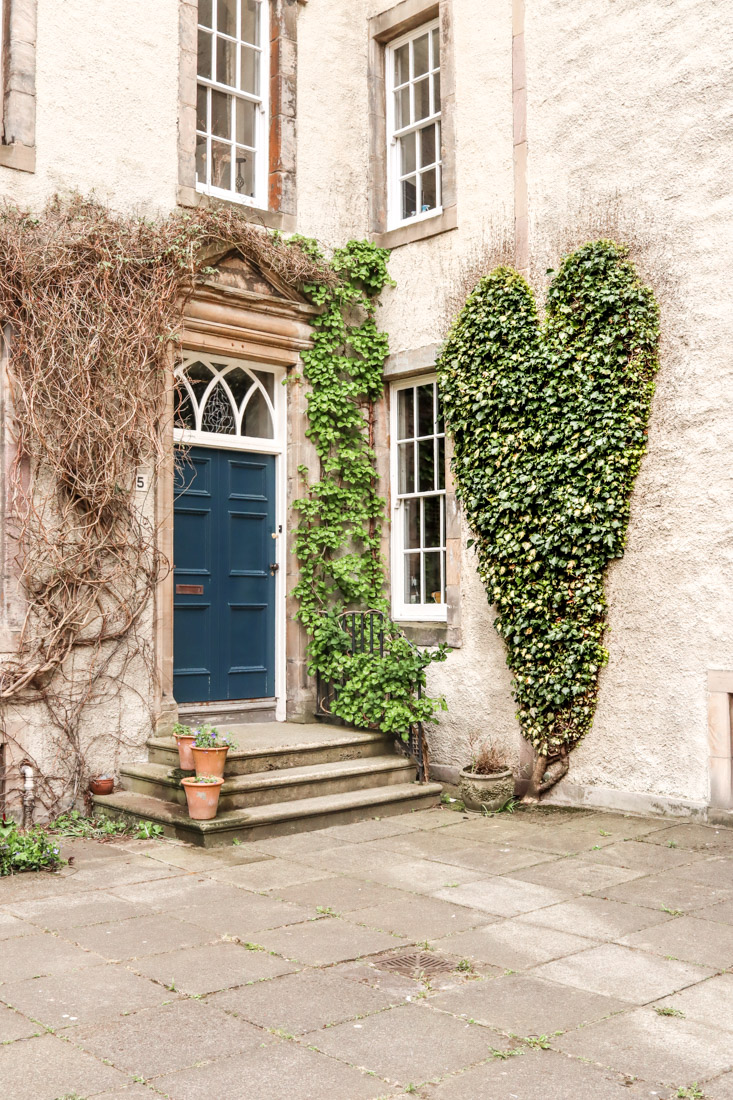
Communication
Most people in Scotland have mobile phones (cell phones).
Phone deals are usually purchased monthly or SIM only.
Packages include mobile data for calls and texts and data for 5/4G and can be bought in phone shops such as Three, EE, or Vodafone on Princes Street or WH Smith at Edinburgh Airport.
While 5G is available, most city areas work on 4G.
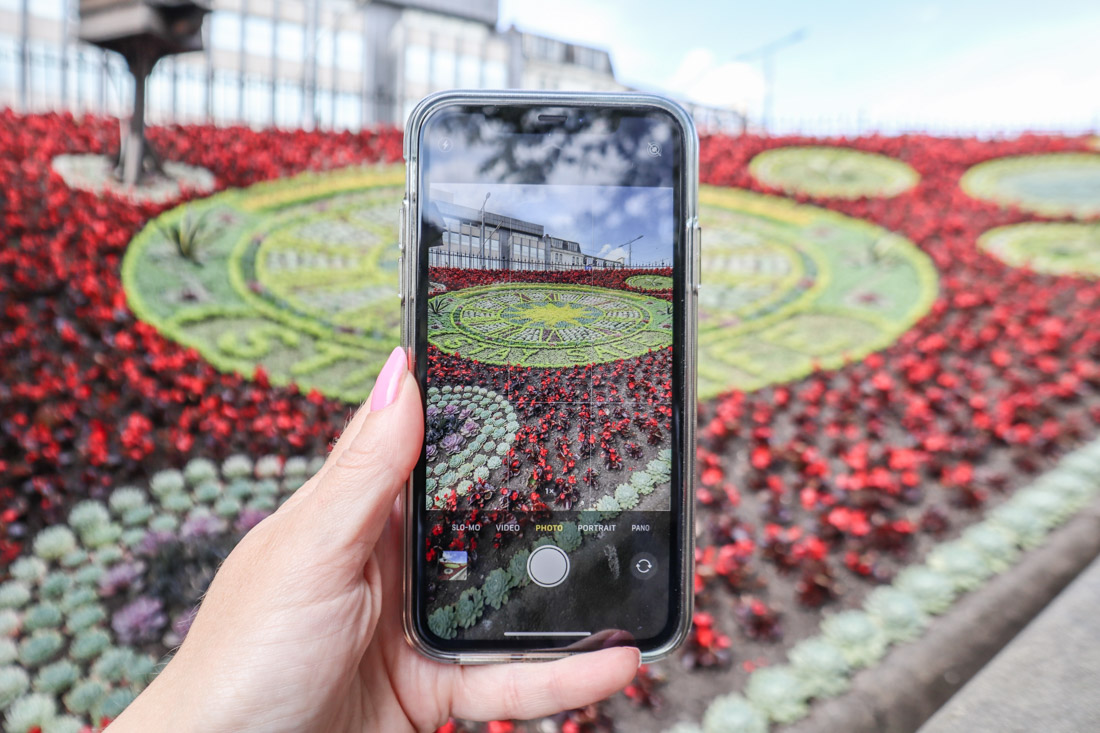
You can access free WiFi at your accommodation and in some restaurants.
Free WiFi is not always reliable, so download important information to avoid getting caught out.
Most people in Edinburgh communicate via apps such as WhatsApp, Facebook and Instagram. The younger generation mostly uses TikTok and Snapchat.
While there are a few traditional red phone boxes on the Royal Mile and also BT phone boxes dotted around the city, no one really uses them, and they might smell of pee!
Phone numbers in Edinburgh start with 0131.
The US country code is 001.
WhatsApp, Zoom, Facebook, or Google Meet are free video calling options.
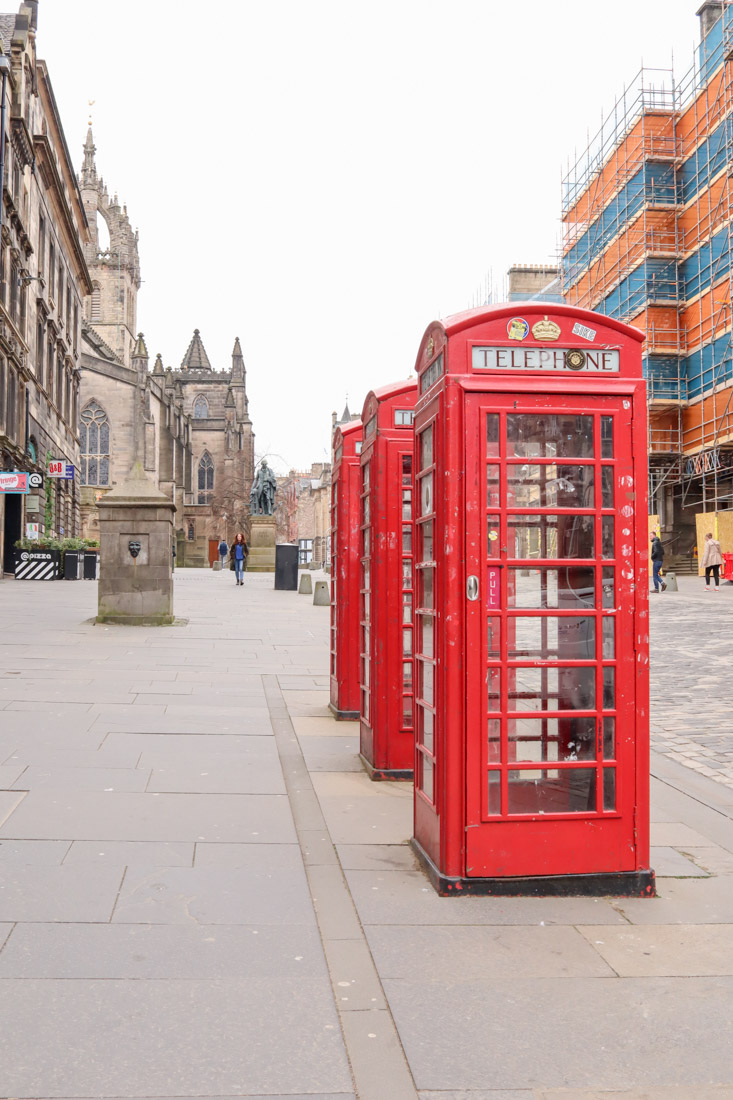
Tourist Information in Edinburgh
Tourist information in Edinburgh, aka Edinburgh iCentre, is located at 249 High Street in the Old Town.
Best Time to Visit Edinburgh
There is no wrong time to visit Edinburgh, but each season and month offers something different regarding weather and activities.
Summer (June, July, and August) is the most popular time to visit, and prices for accommodation are at their highest during this season.
Attractions are at their busiest, and Edinburgh Festival Fringe takes over the whole of the City Centre for three weeks.
Accommodation can be 3 x more expensive during the Fringe and if it does sell out so book ahead to avoid disappointment.
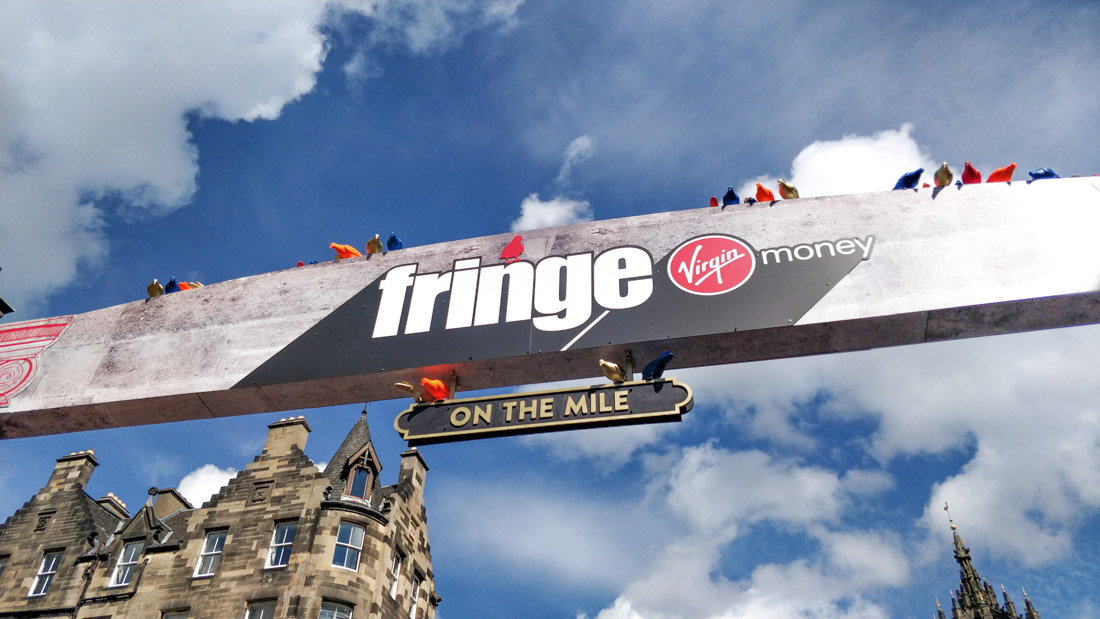
There is lots of light, with sunrises starting around 4:30 and sunsets about 22:00.
In the UK, we use Celsius to measure temperature.
Sometimes, it reaches 78.8 Fahrenheit/26 degrees Celsius during summer (July) in Edinburgh, and other days, it can be as low as 46.4 Fahrenheit/8 Celsius (June).
We’ve detailed highs, lows and average temperatures in this guide on the best time to visit.
Light coats are recommended, as well as waterproof jackets and shoes.
Find out more about what to pack for Edinburgh by season.
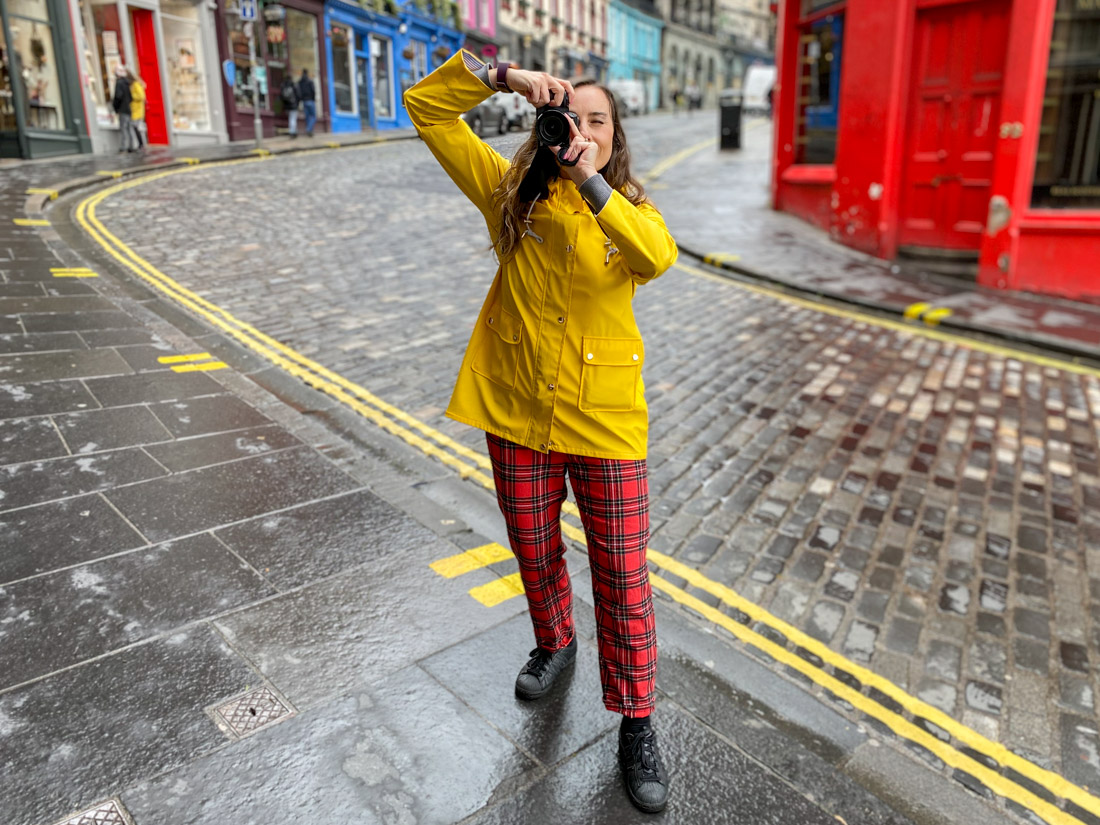
Autumn (September, October) is a lovely time of year to visit Edinburgh.
At the start of September, we can still see warm days, and the foliage turns orange and red come October.
Check out our guide to Edinburgh in autumn for things to do during this lovely season.
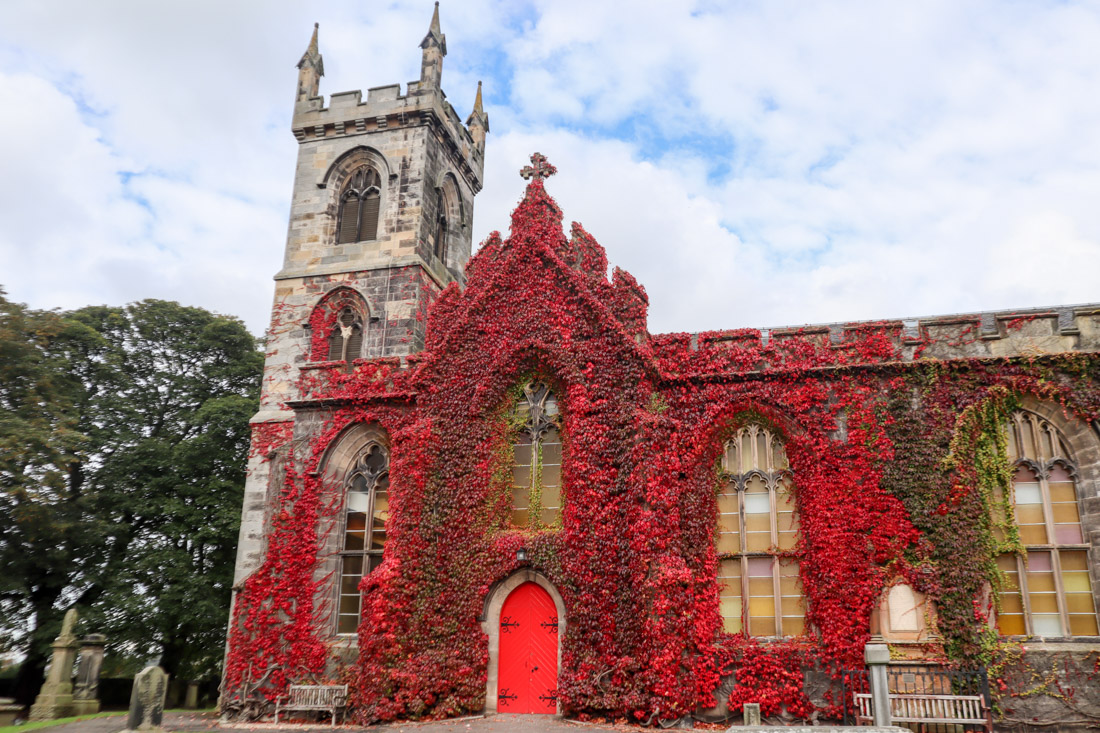
September can still enjoy highs of 69 Fahrenheit/21 degrees Celsius, with a steady decline to lows of 39.2 Fahrenheit/4 degrees Celsius in October.
Nights get darker earlier, which is perfect for spooky tours.
Halloween on the 31st.
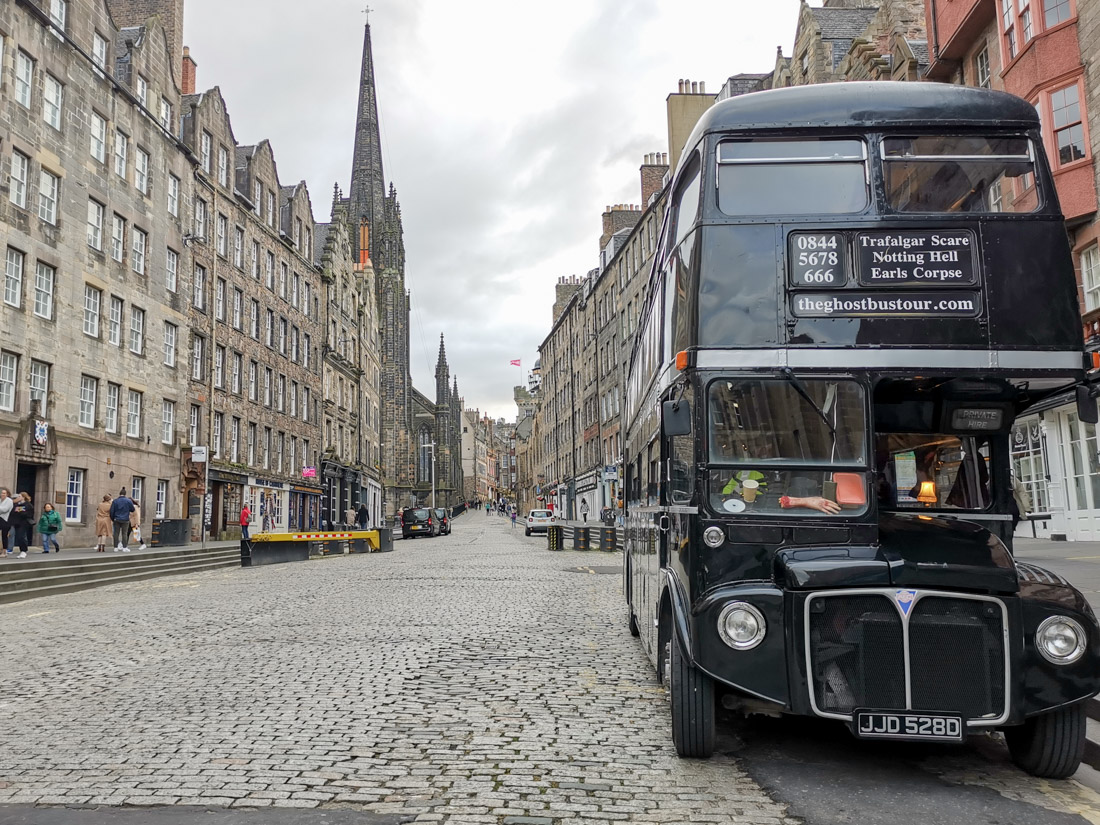
Edinburgh’s Christmas Market sees visitors flood the city to drink mulled wine and enjoy rides in November and December.
Bonfire Night, or Guy Fawkes, is another celebration that takes place in winter on the 5th of November.
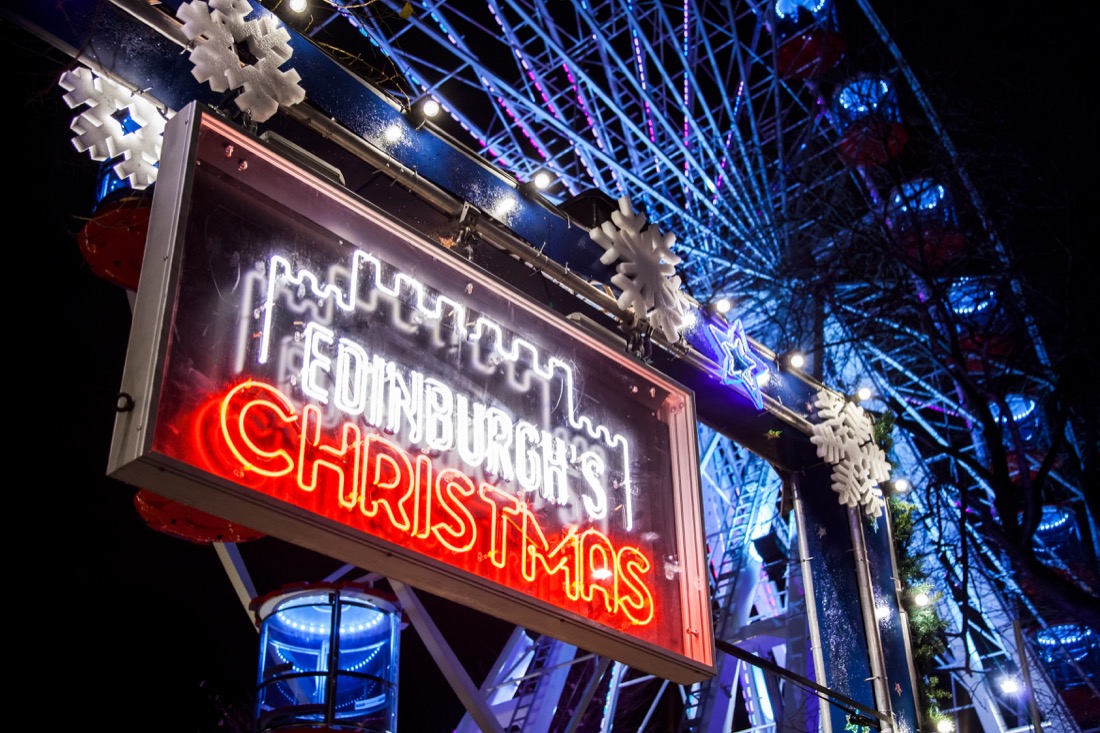
The biggest party of the year takes over from the 30th of December until the 1st of January, Hogmanay or New Year’s Night to non-Scots.
It can snow in Edinburgh, and it is magical, but like most cities, it doesn’t last.
November sees temperatures of 39.2 Fahrenheit/4 degrees Celsius, while February can take us into minus low numbers.
Some of the national attractions close for winter.
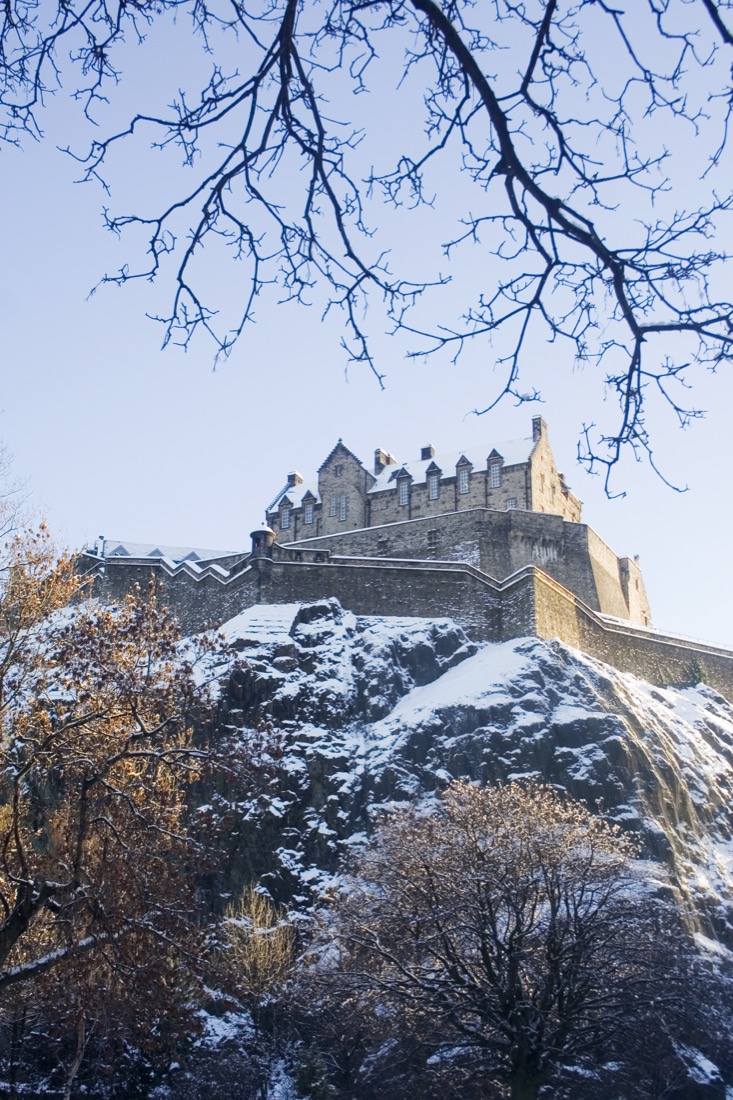
Our Christmas in Edinburgh Guides

After what feels like a long winter, we welcome spring in March, April, and May.
Mornings are lighter, temperatures increase, and nature is at its best with flowers blooming and showers nurturing our lush green gardens.
April into May is the best time to see the city’s stunning cherry blossoms, which are quickly followed by purple wisteria in the New Town.
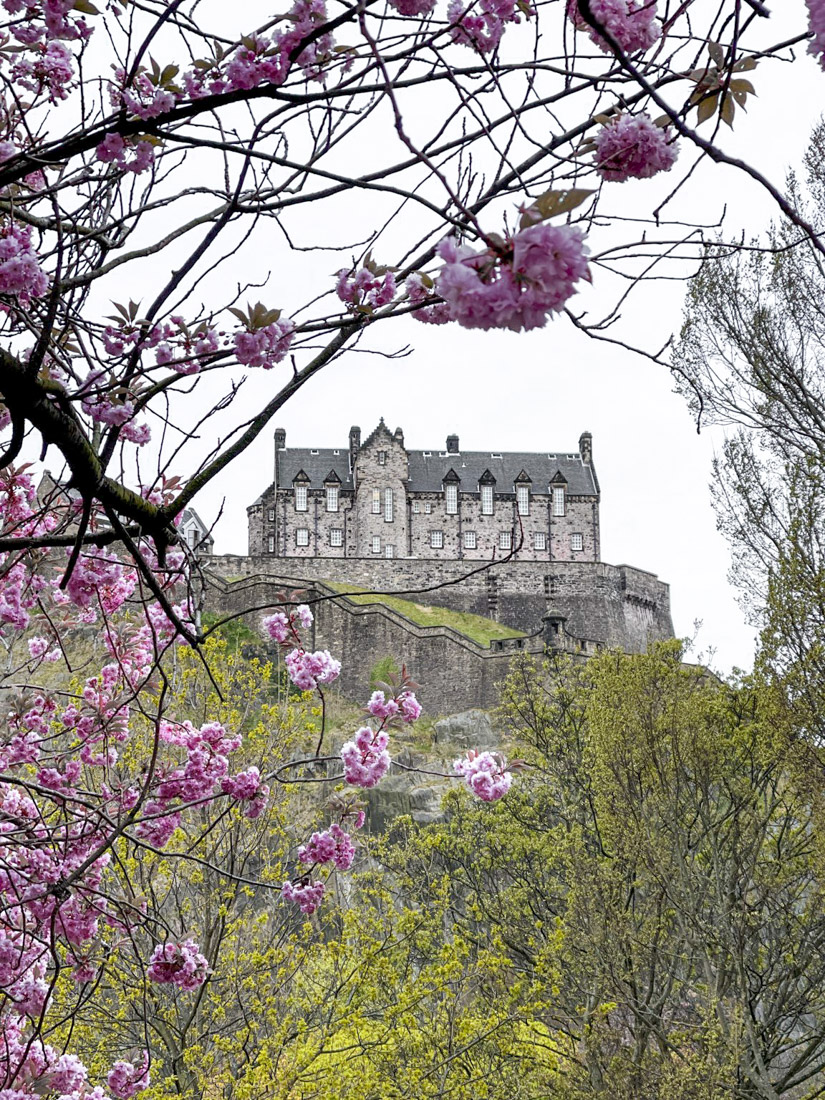
Expect highs of 64.4 Fahrenheit/18 degrees Celsius, but prepare for dramatic lows of 28.4 Fahrenheit/-2 degrees Celsius.
April and May can be hot and is often referred to as Scotland’s summer, although this hasn’t happened lately.
You must accept that Scotland’s weather is unpredictable and pack for all eventualities!
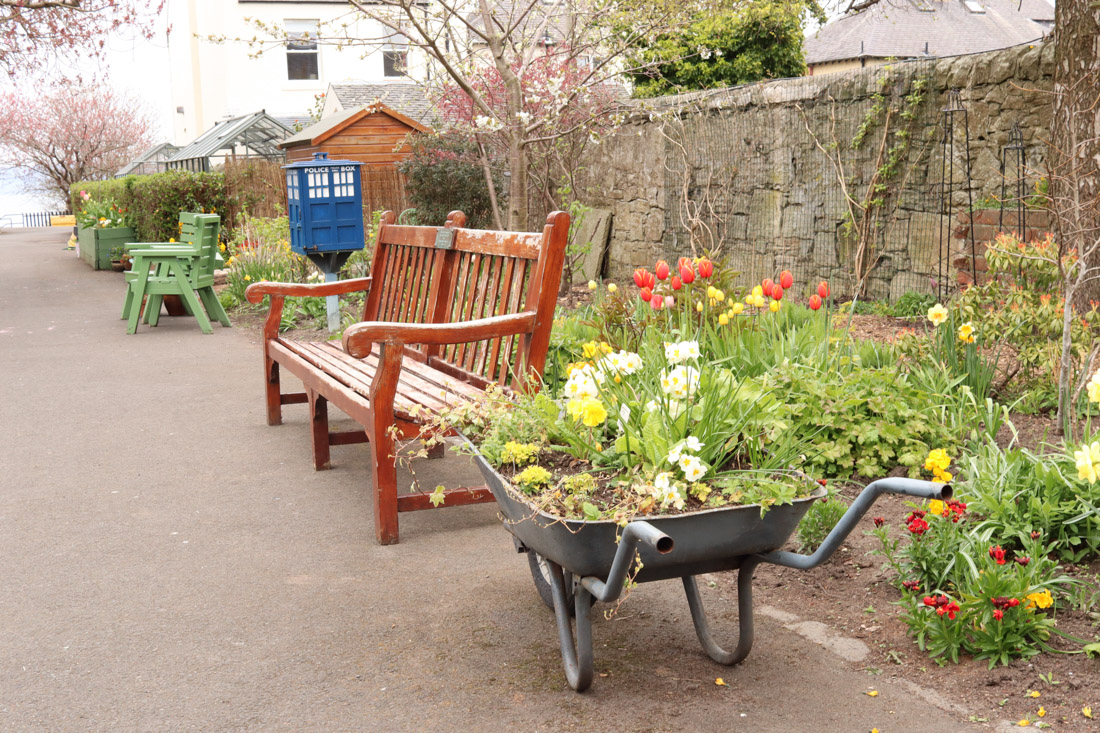
Money and Costs
Currency in Scotland
In Edinburgh and Scotland, we use the Scottish And British Pound (GBP/£).
There is an ongoing feud where some places in England don’t accept Scottish money, so try switching Scottish notes to British if you’re going down south after your Scotland adventure.
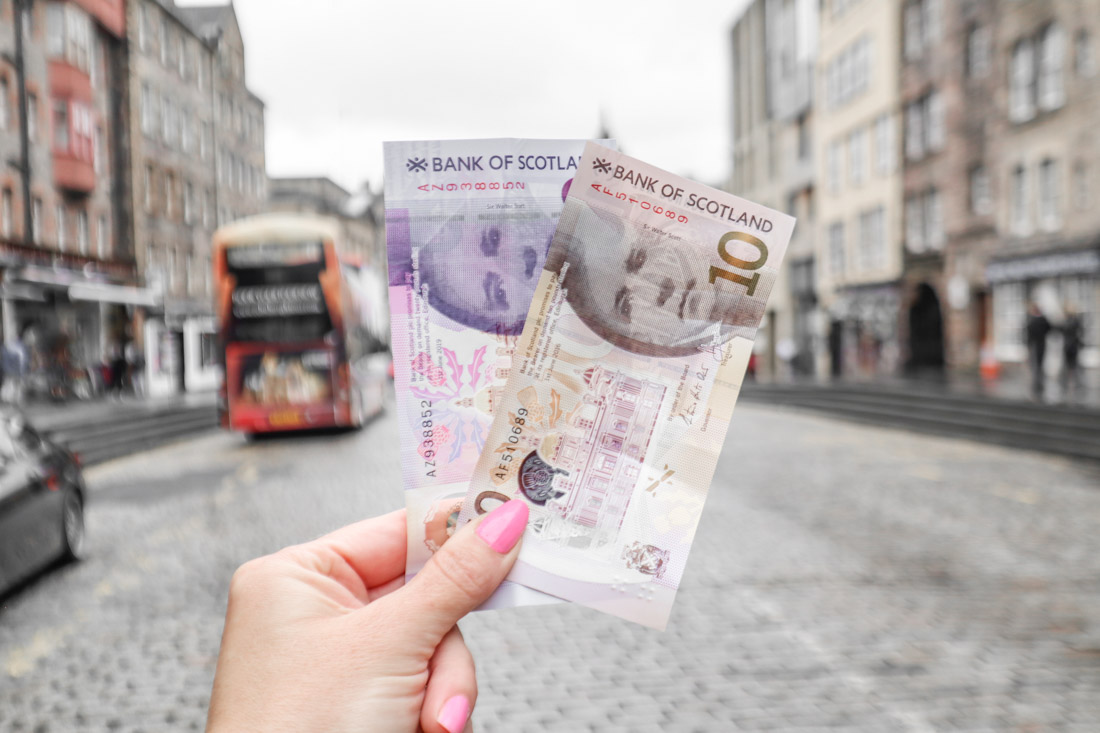
The most up-to-date exchange rates can be found here.
Currency comes in the following:
- Notes: £50, £20 (image above), £10 image above), £5
- Coins: £2, £1, 50p, 20p, 10p, 5p, 2p, 1p
You can see what £1 million looks like at the Museum on the Mound.
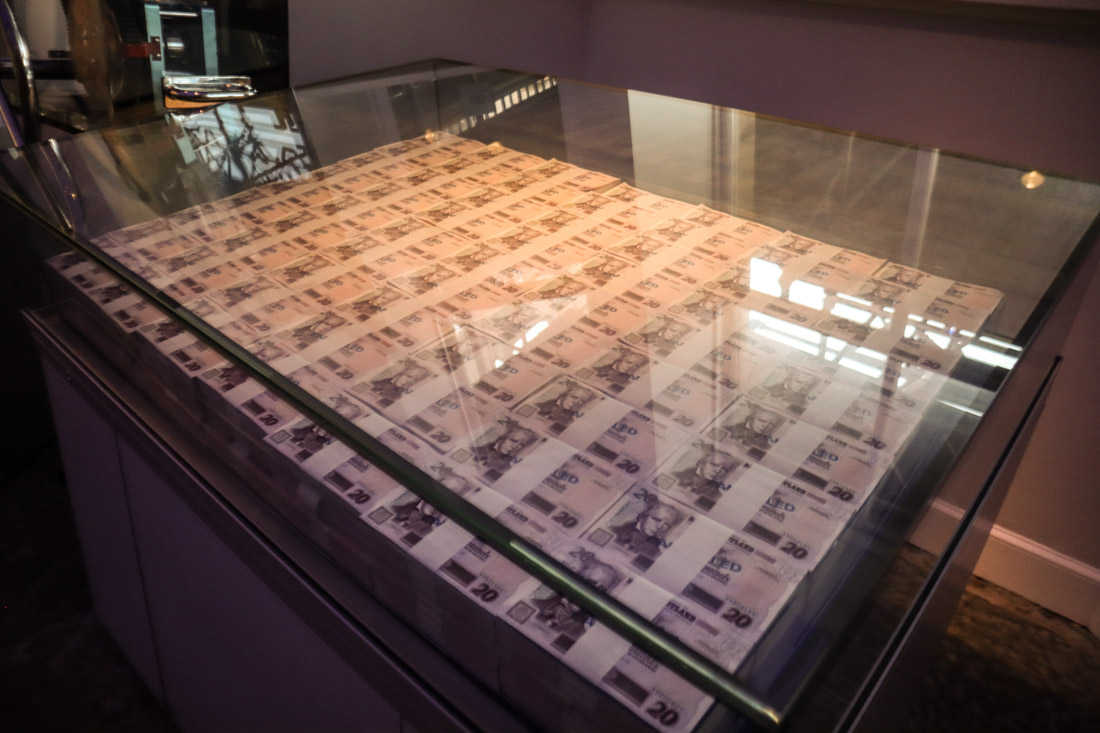
Credit Cards and ATMs
Most credit cards are accepted at hotels and attractions, but American Express is not widely accepted in cafes, restaurants, pubs, and shops.
To pay using a debit, credit card or phone payment app, tap the card on the machine to activate contactless payment for low amounts, use the chip and pin function, or sign for the payment.
The latter is used less.
ATMs and cash dispensers are widely available and mostly free to use at banks and outside of stores such as Tesco.
Avoid small corner shop ATMs as they often charge for use. An alert will tell you if this is the case.
Contact your bank to find out how much they charge for transactions abroad.
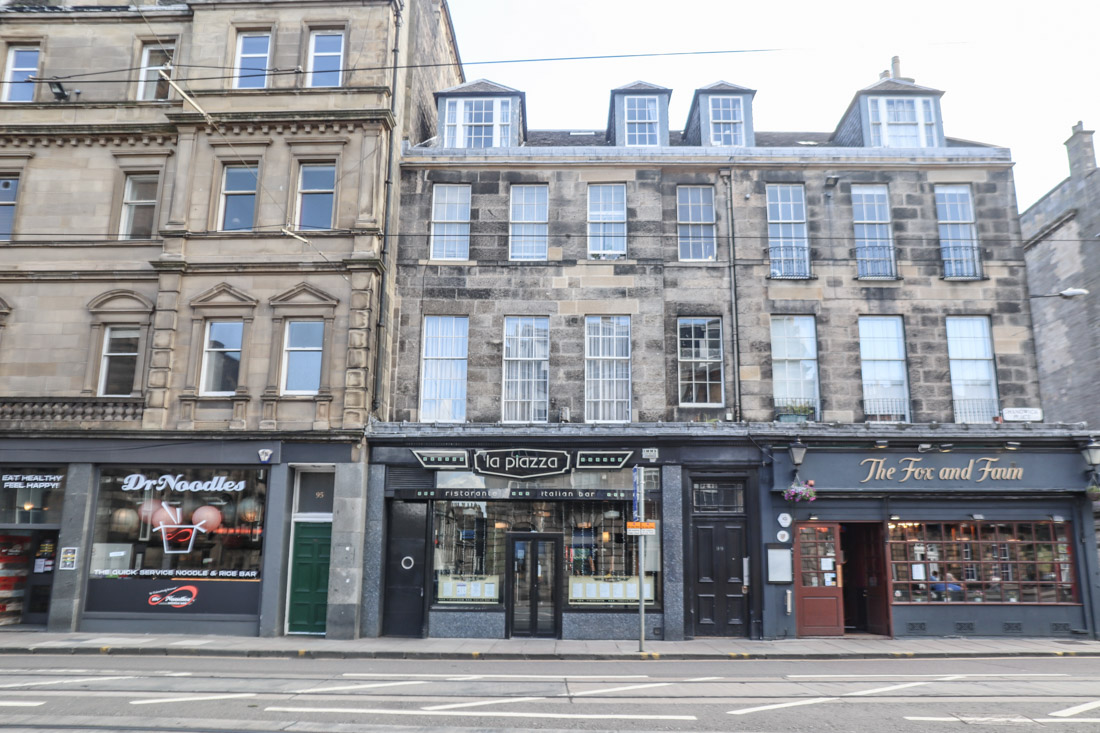
How Much Does A Trip To Edinburgh Cost?
The cost of a trip to Edinburgh really depends on what type of vacation you have planned.
Here is a selection of the prices. We have a full guide on Edinburgh prices here.
Food
- A takeout coffee: £2.50-4.50
- A pint: £4.50 – £7
- A cocktail: £8-14
- Breakfast roll: £3.50+
- Pub grub meal: £8-16
- Chocolate bar: 65p
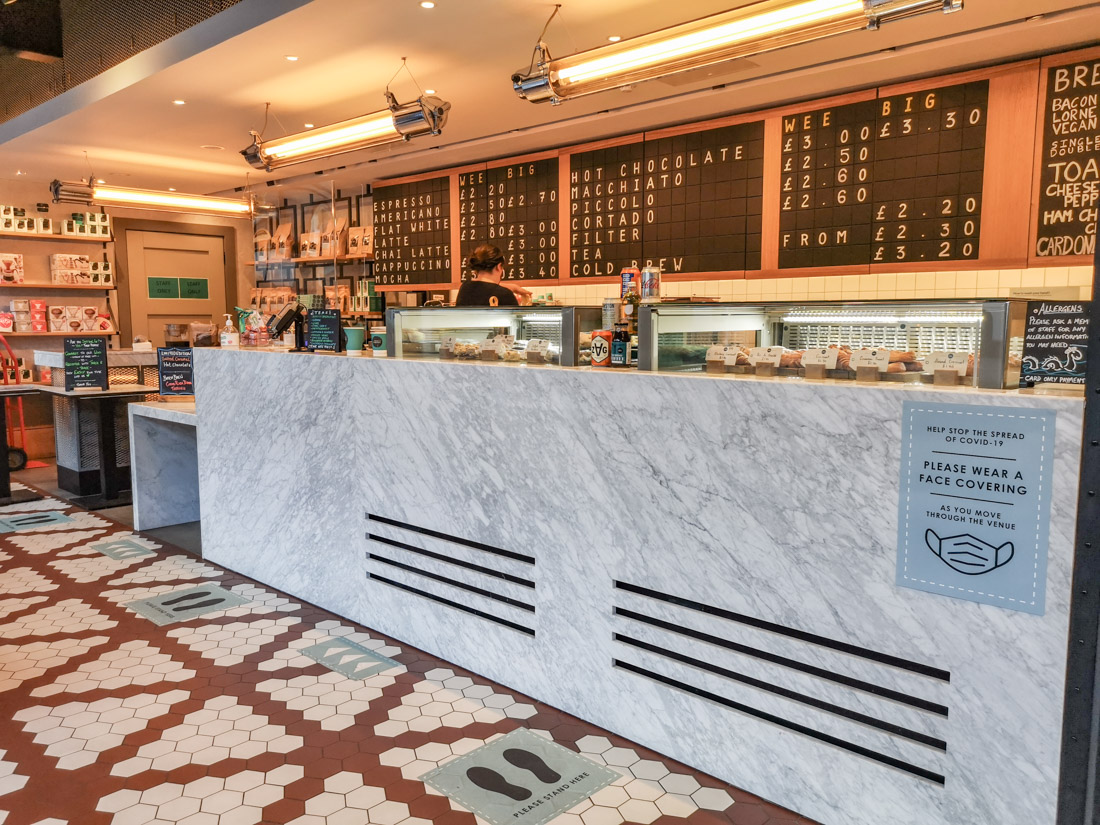
Accommodation Costs
Rooms will vary in price depending on when you visit.
If you are on a budget, avoid the Festival Fringe and Hogmanay/New Year and read our guide to budget hotels in Edinburgh.
Below are examples of prices for high-end and affordable accommodation.
- Balmoral Deluxe Castle View: £500-1300 (image below); read our review
- Ibis Hunter Square double room: £130-360 (image below)
- Leonardo Royal Hotel Edinburgh: £90-450
- Shared dorm: £19-53

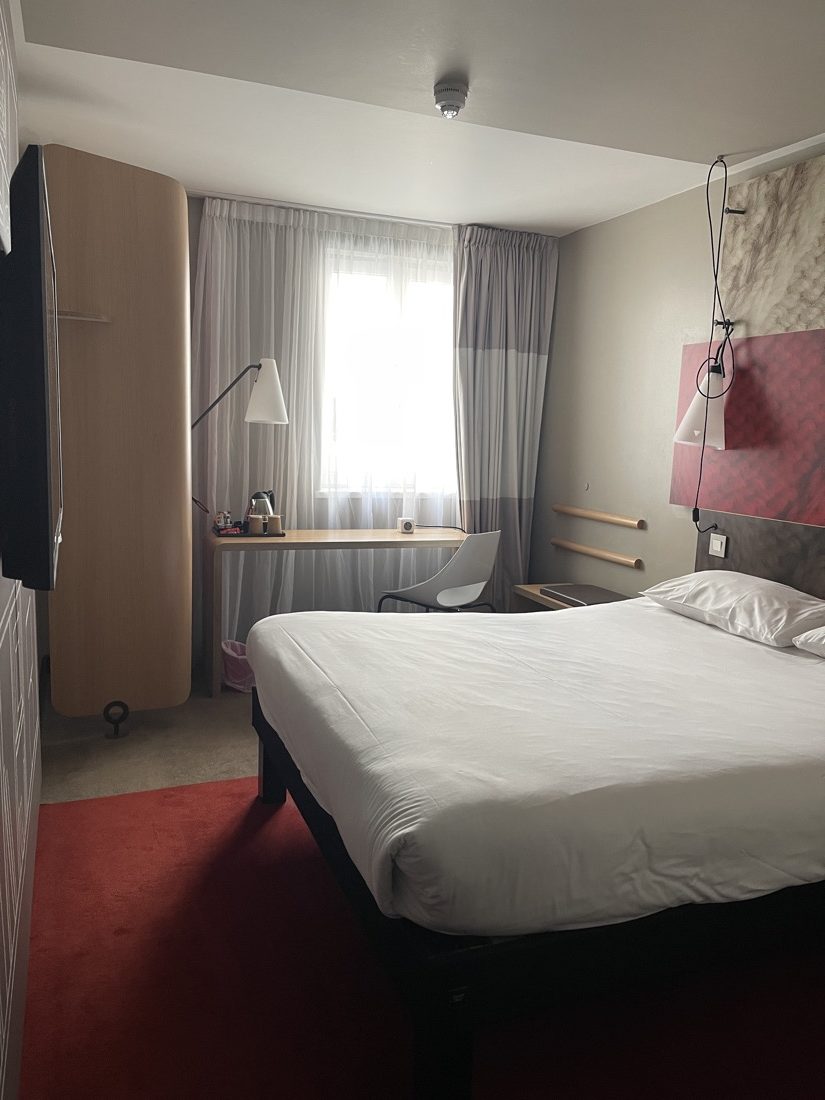
Activities and Attractions Costs
- Underground Vaults: £20 (review)
- Loch Ness Tour: £50 (review)
- Johnnie Walker Princes Street: £30 (review)
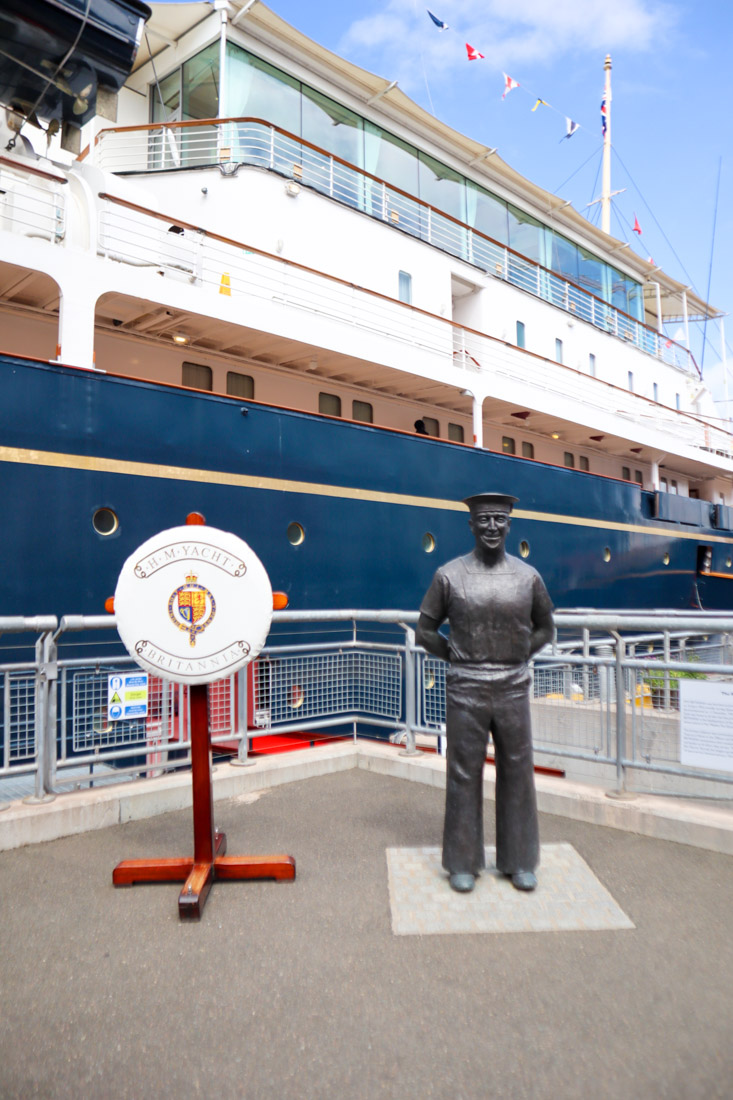
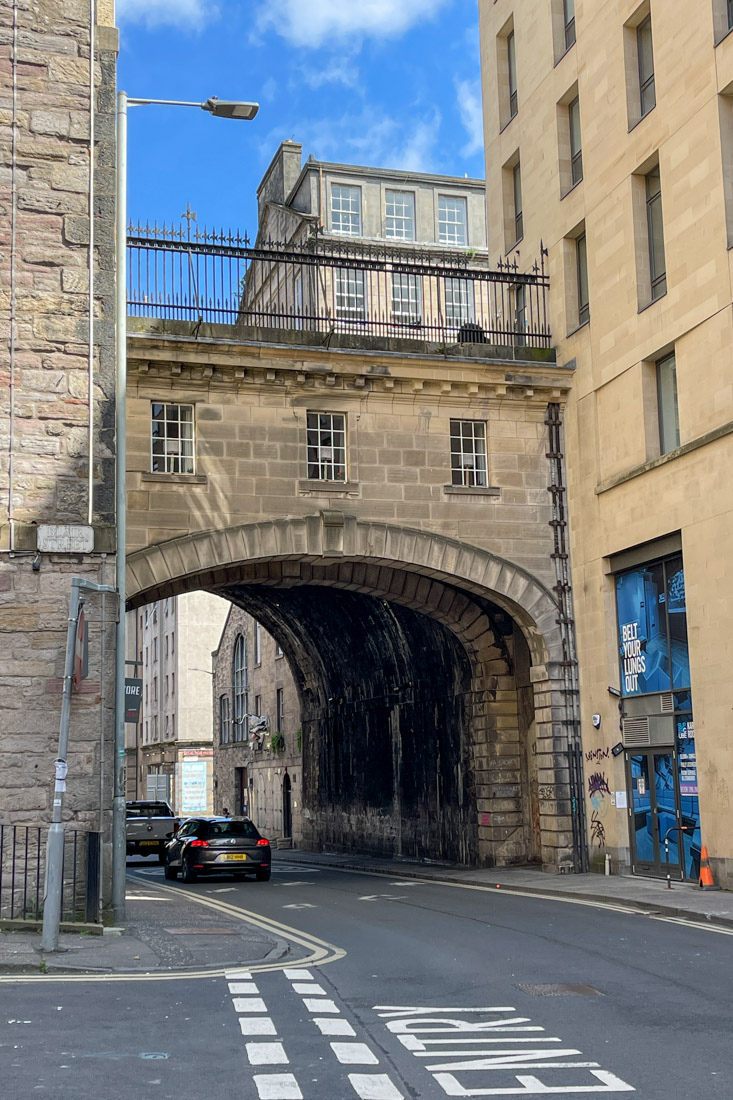
Tipping in Scotland
Tipping in Edinburgh is not mandatory but appreciated.
If you receive good service for food (table service), it is customary to tip 10%.
Some restaurants add on a service charge, so check the receipt before you pay.
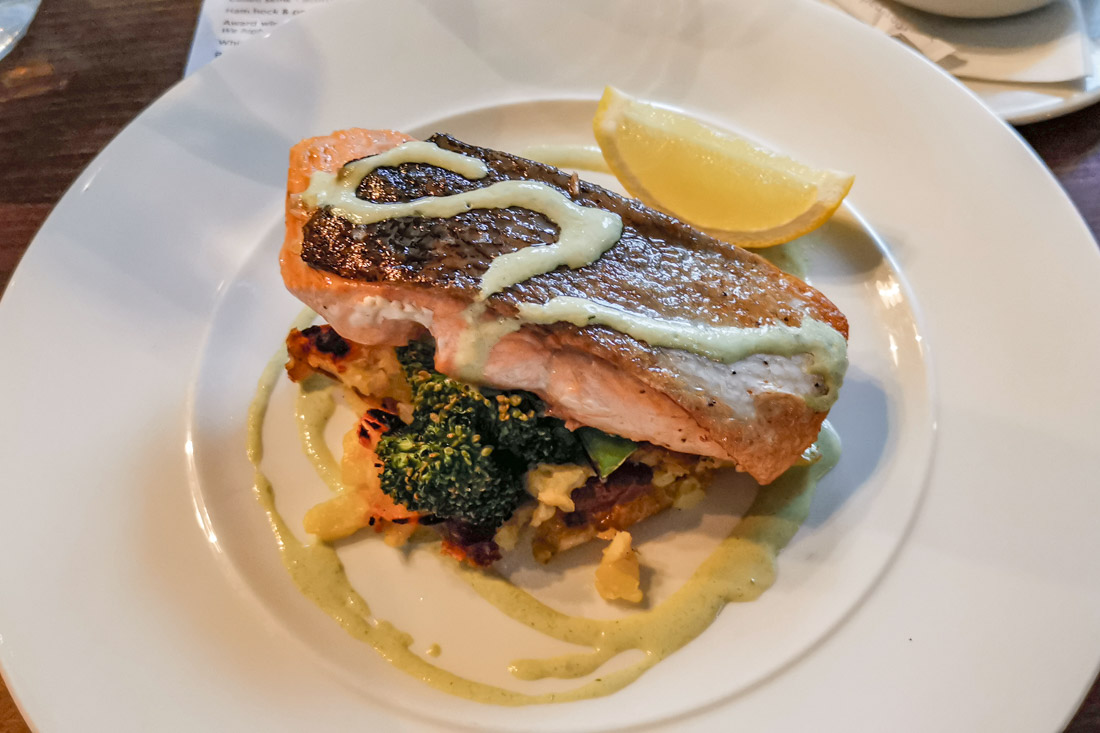
If a tour is “free” you should always tip at the end.
Some people tip guides on top of pre-paid tours.
If hotel staff help with luggage, tipping is expected.
It wouldn’t be expected to tip a taxi driver.
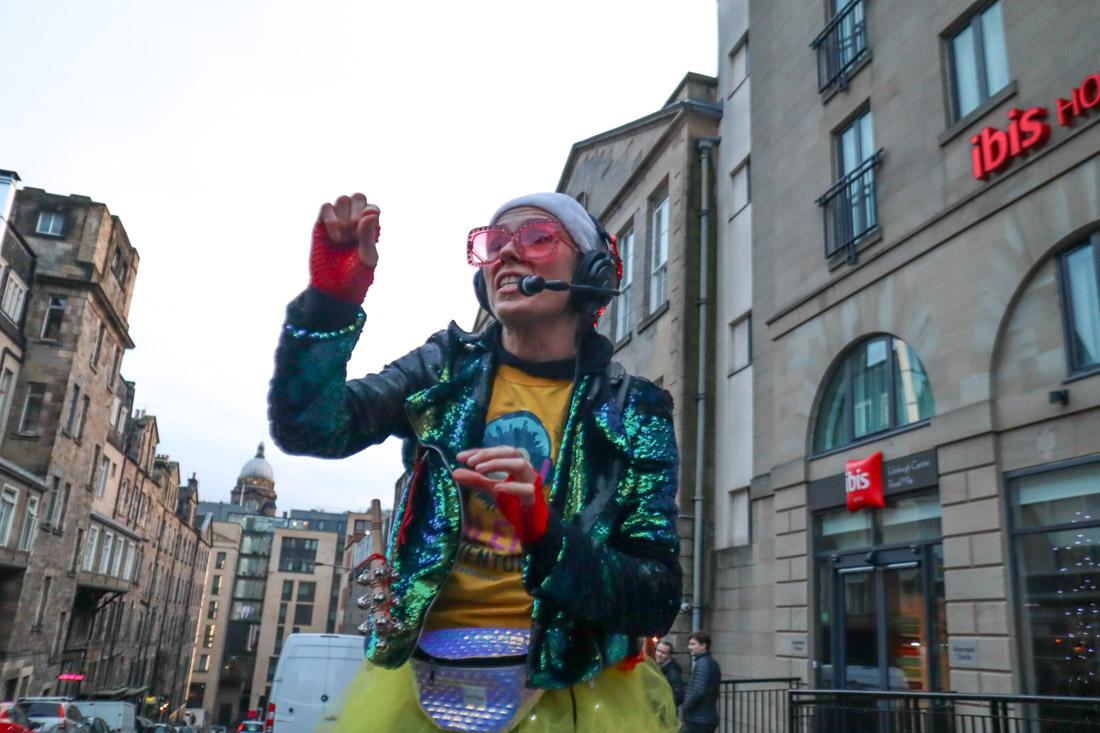
Free Things To Do In Edinburgh
So now we’ve discussed how much Edinburgh costs; let’s look at how to keep costs down.
A variety of free Edinburgh activities include:
- Gardens such as Princes Street, Starbank, and the Meadows
- Walks like Calton Hill (image), Arthur’s Seat and Waters of Leith (image)
- The majority of Edinburgh museums
- Self-guided Harry Potter tour
- Beach days to Portobello
You can find out more in our guide to free Edinburgh activities and may also like our post on family-friendly activities.
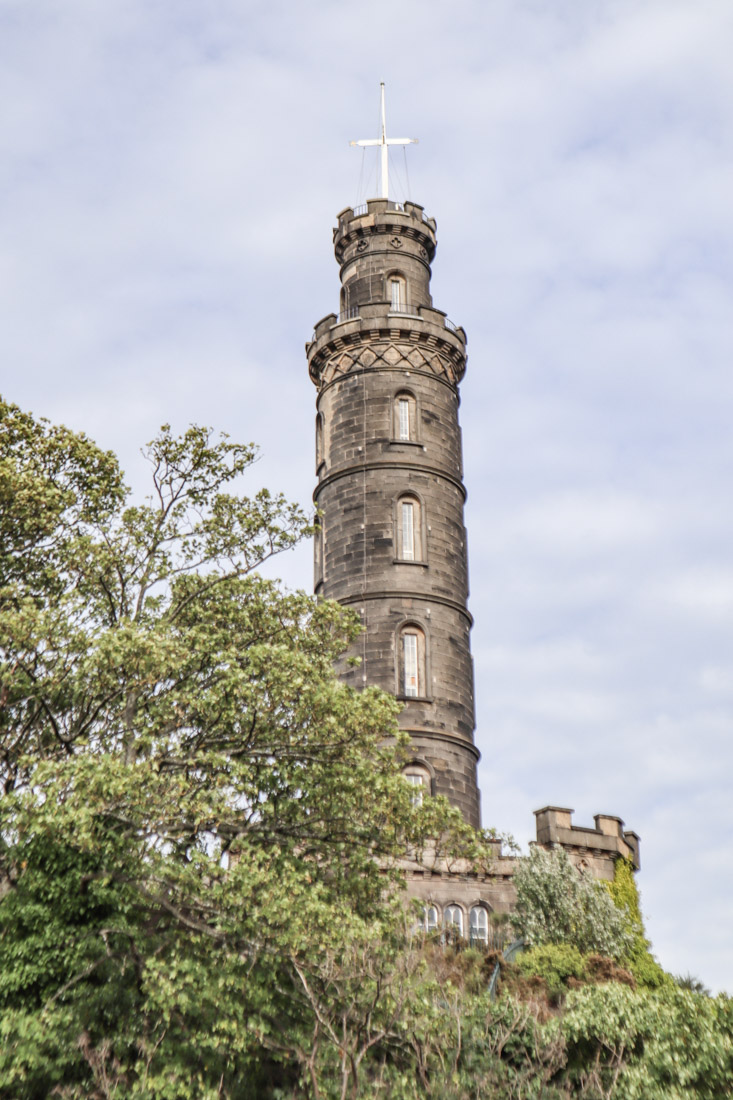
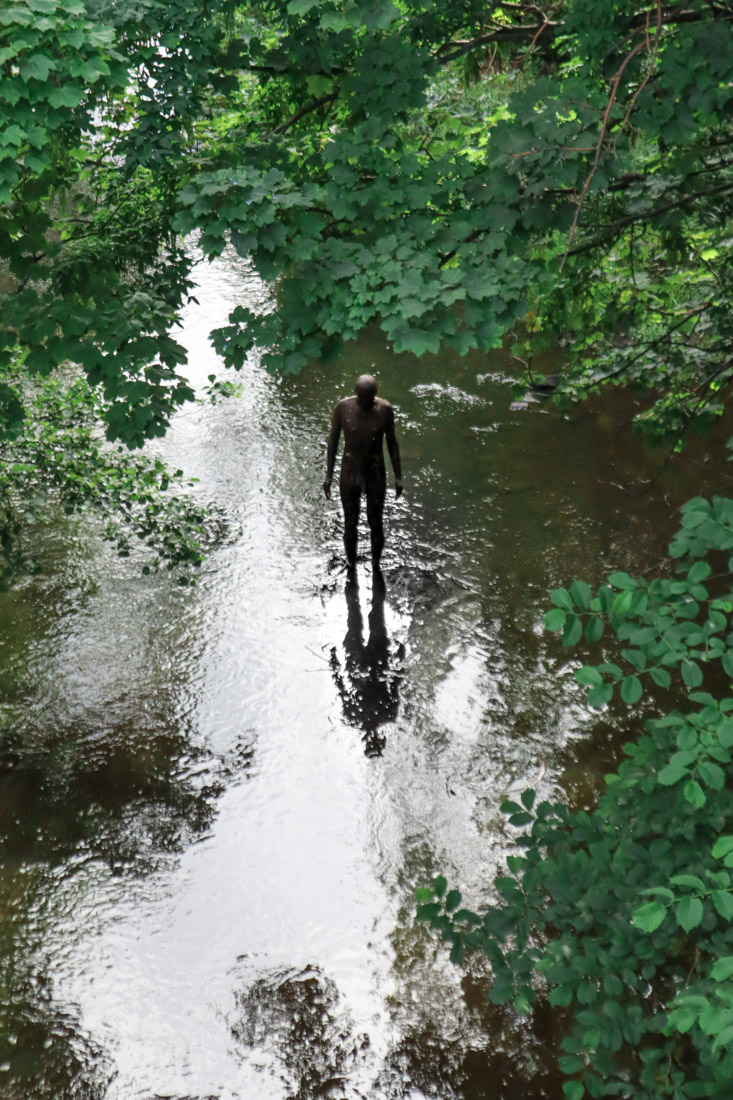
Health and Safety
Travel Visas
Follow government advice regarding visas to the UK.
Vaccinations
Follow government guidance for the most up-to-date advice.
Public Health England also recommends that visitors have popular vaccinations given to people in the UK such as MMR.
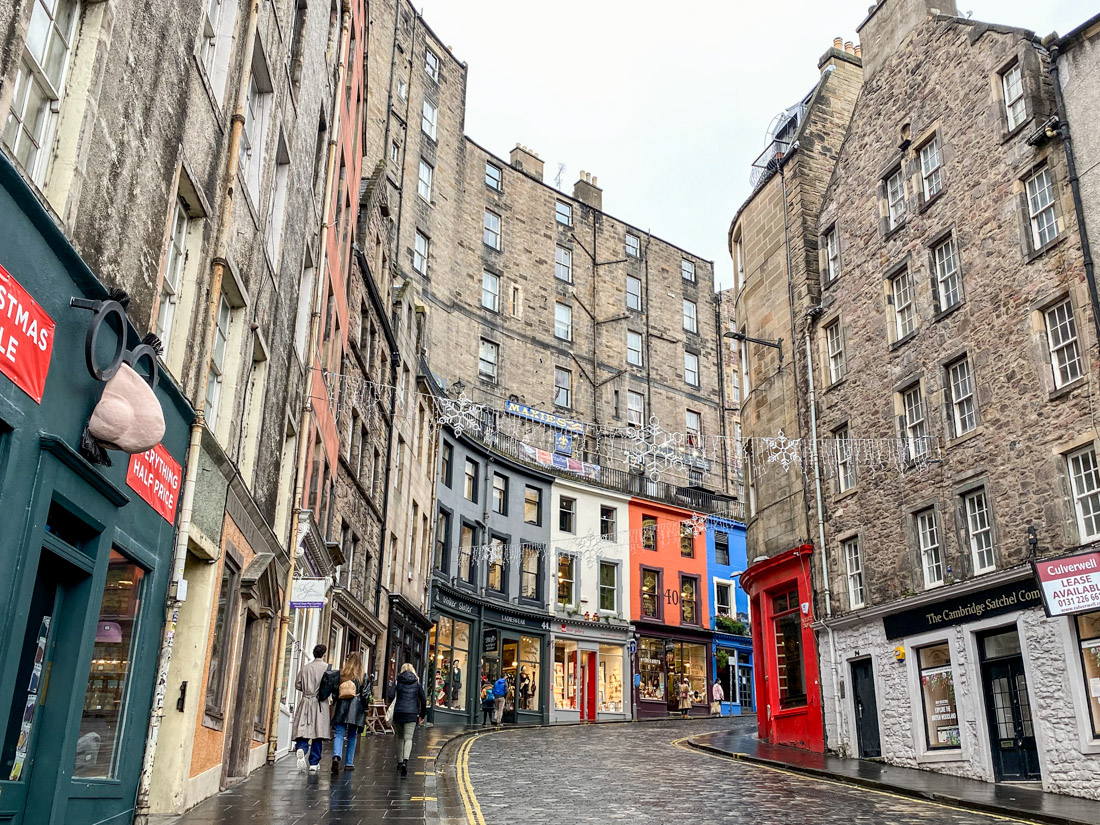
Feeling Sick in Edinburgh
If you feel sick and can self medicate, purchase over the counter medicine at pharmacies such as Boots.
You can also buy some medicines from a store.
Tesco, Asda or Sainsbury’s will have the biggest selection, especially in their superstores on the outskirts of the city.
If your illness is more serious, you should contact your travel insurance provider.
You may be able to receive free treatment from the National Health Service (NHS) for some services.
If your illness is an emergency dial 999 for an ambulance.
NHS24 is also a useful online resource.
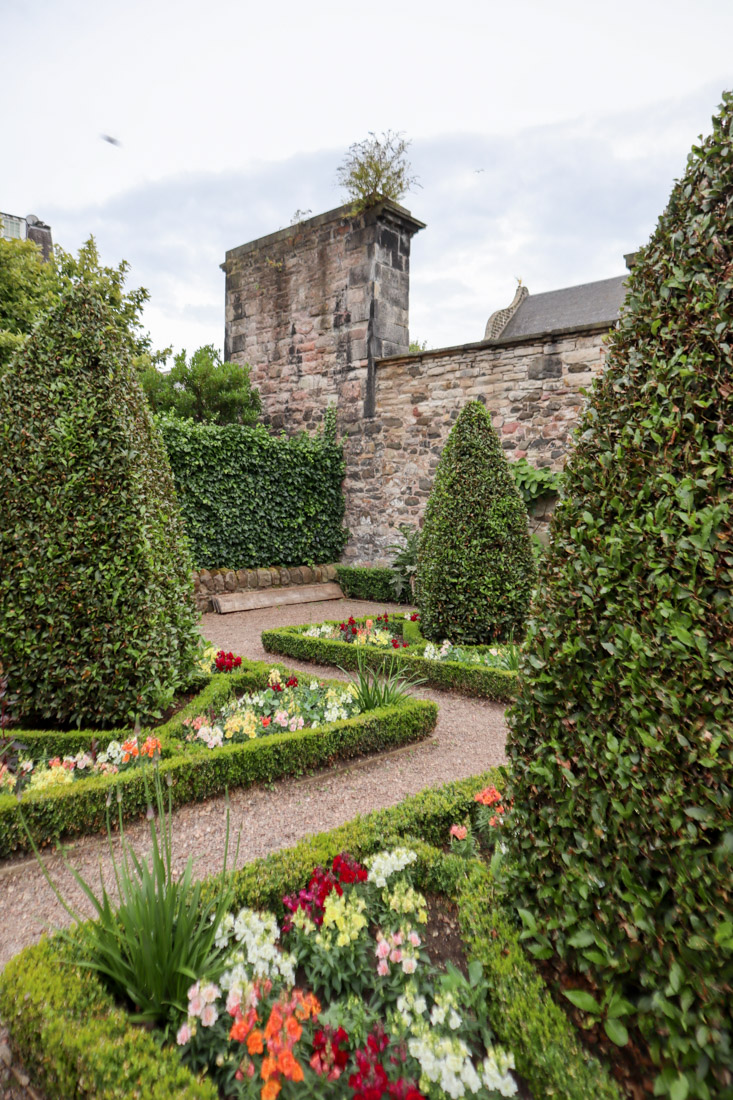
Travel Insurance
As with every trip abroad, you must purchase travel insurance before you arrive in Scotland.
Ensure that your coverage caters for everything you need and plan to do in Edinburgh and Scotland.
Also consider insurance for loss, damage and theft.
Is Edinburgh Safe?
Locals and tourists mostly find Edinburgh to be a safe city.
As with all cities, be cautious of your surroundings and only walk in the dark if you feel comfortable doing so.
If you don’t like crowds of drunk people, avoid the Cowgate and Grassmarket at pub and club closing time although these groups of revellers are probably more interested in their chips with salt n sauce than tourists.
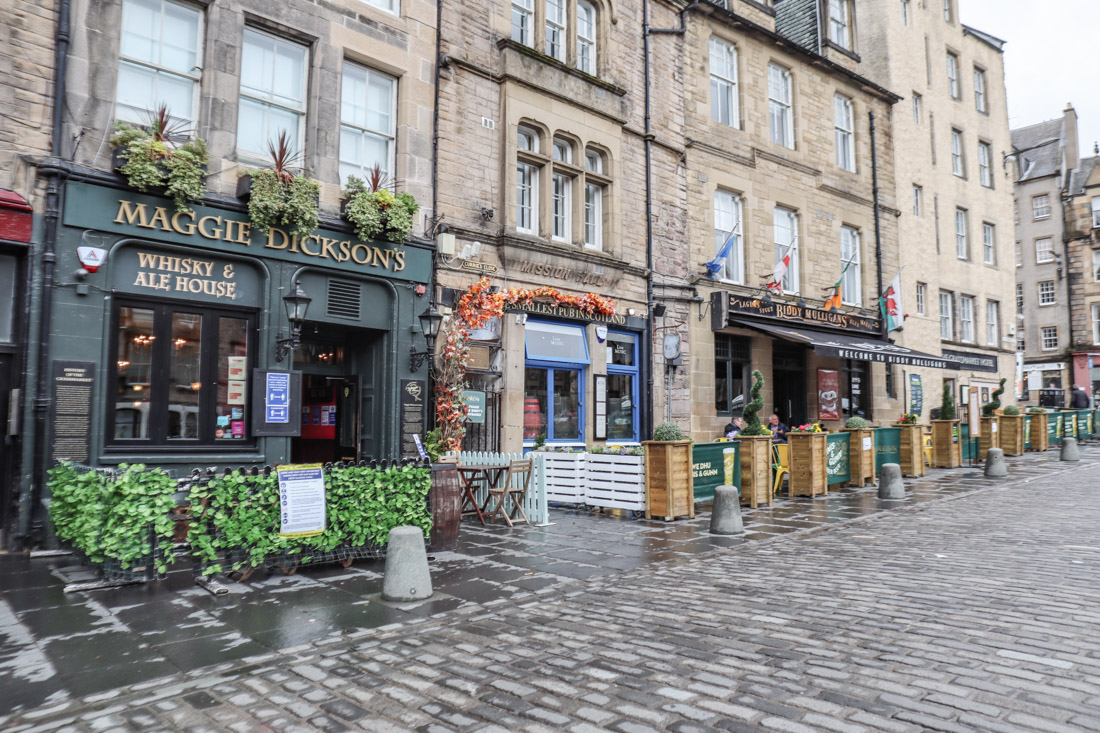
Save the dark alleys for during the day and skip walking through parks late at night.
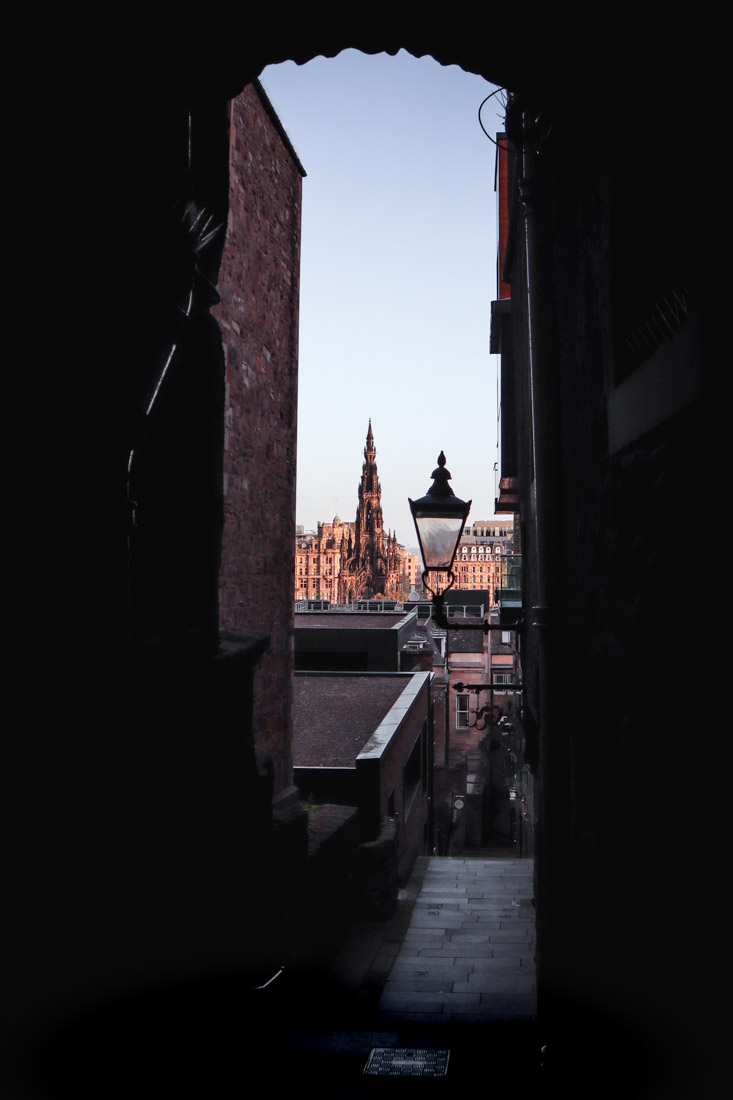
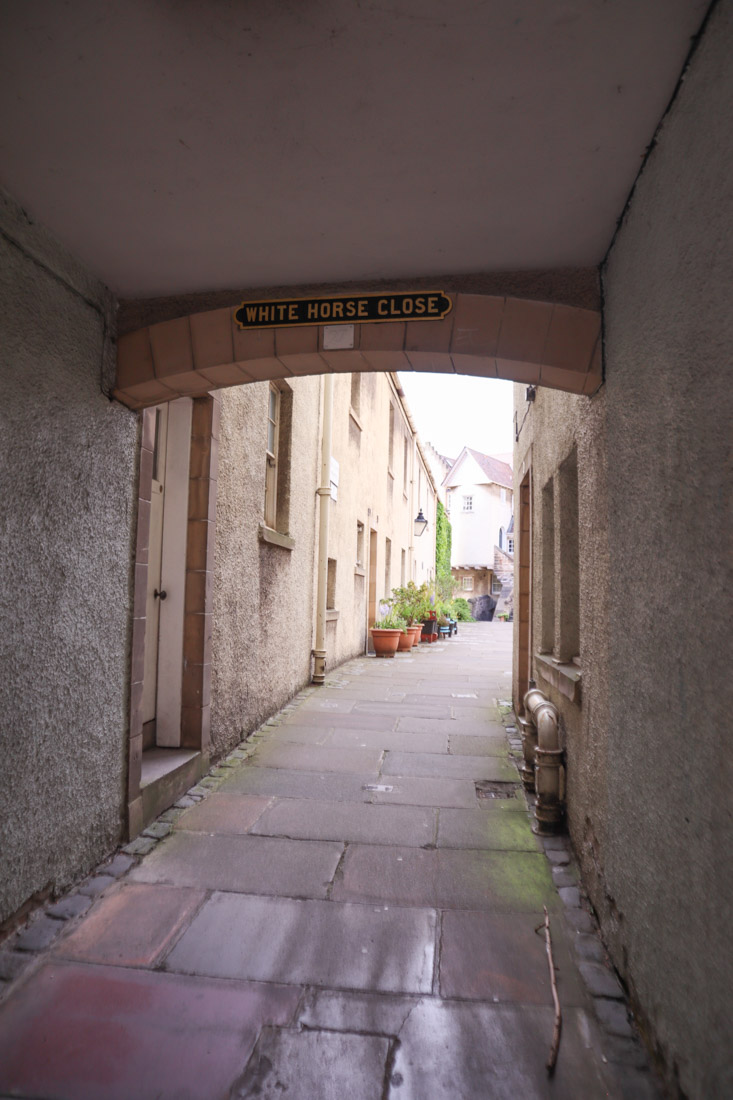
You may come across groups of merry teenagers during weekend evenings at/near parks, squares and McDonald’s.
If you need to call the police to report a non-emergency incident dial 101 and use 999 in emergencies.
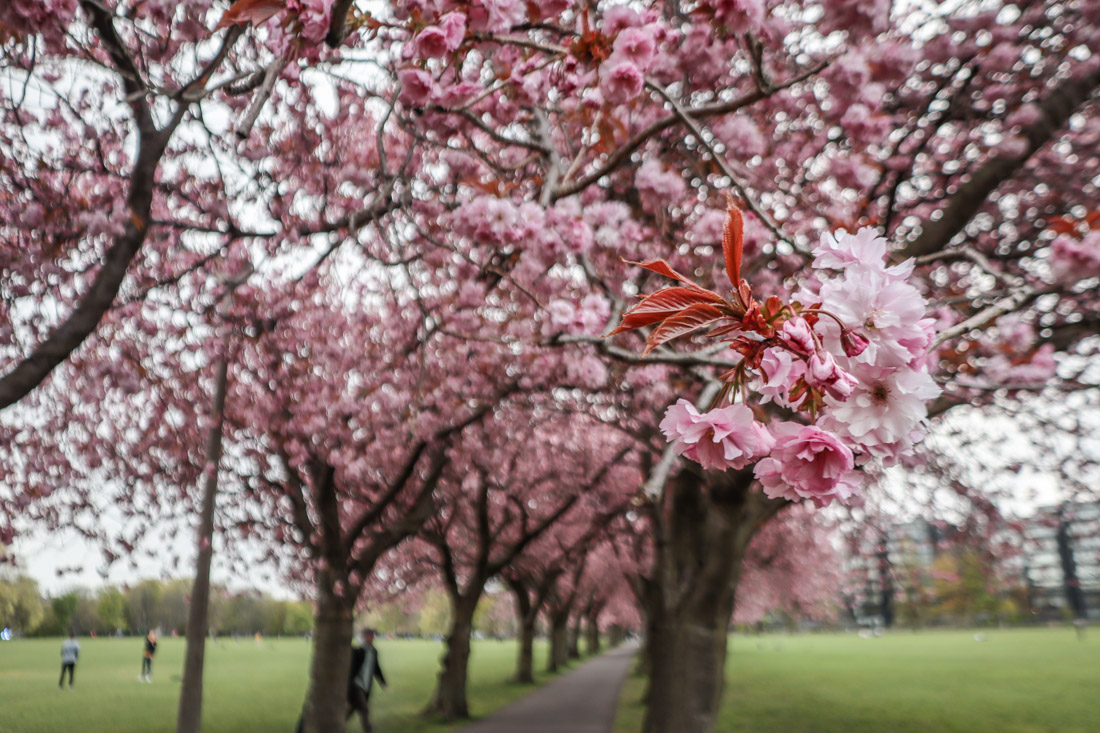
Drinking and Drug Laws
The legal age for alcohol consumption in Scotland is 18 years old.
Drinking is a big part of Scottish culture woven into the pub scene and sports games such as football and rugby.
Drinking on the street in Edinburgh is currently illegal and results in a fine but this may be lifted again soon.
To keep safe, only drink at pub beer gardens.
While drugs are illegal you will smell marijuana around some parts of the city.
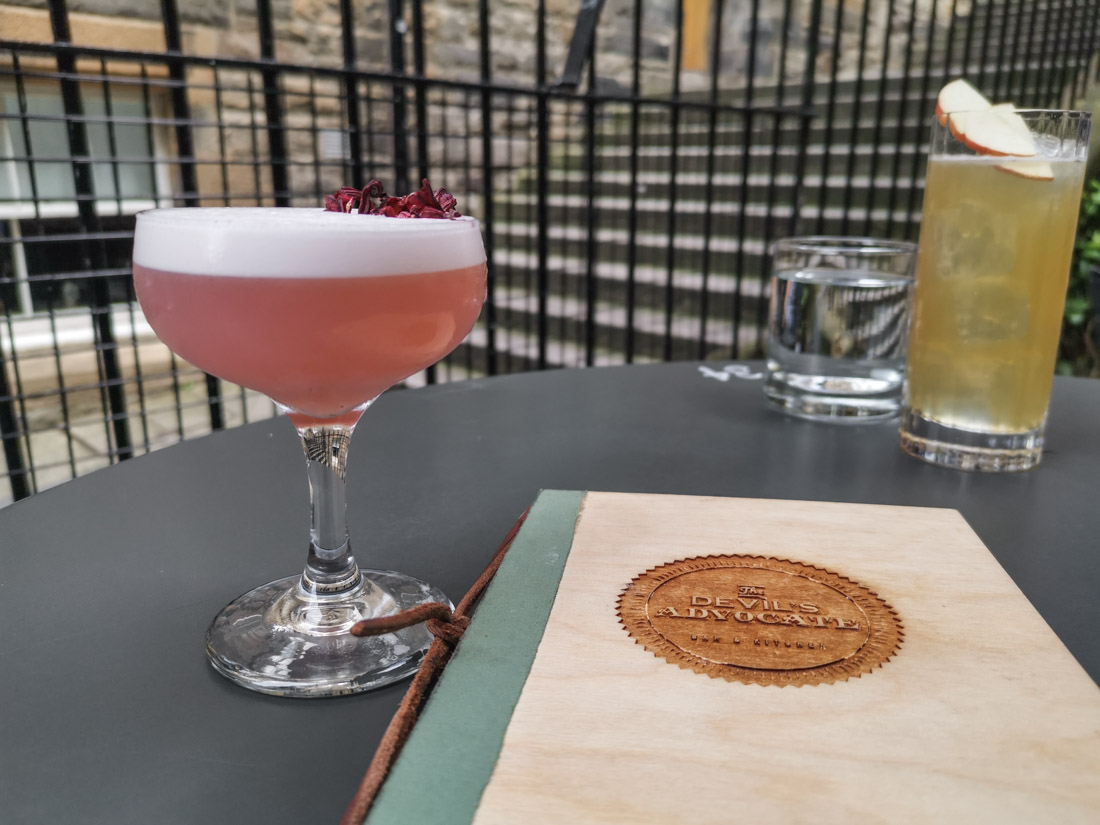
Contacting Emergency Services
The fire, ambulance and police service for emergencies can be contacted by dialling 999.
Non-emergencies for police should dial 101.
NHS24 can be contacted on 111.
Are There Strikes and Protests?
While strikes on the streets are less common and widely publicised when they do take place, protests tend to happen outside of the Scottish Parliament at Holyrood.

Drinking Water
Tap (faucet) water is suitable to drink and delicious.
A great way to save money and help the environment is to fill up reusable water bottles before you leave your accommodation.
The Scottish Government aims to be Net Zero by 2045 and asks everyone to contribute.
It is common for restaurants and cafes to provide tap water for the table if you ask, which differs from the US where water is often provided as soon as you sit down.
Tap water is free in restaurants and cafes, which isn’t always the case in other European countries.
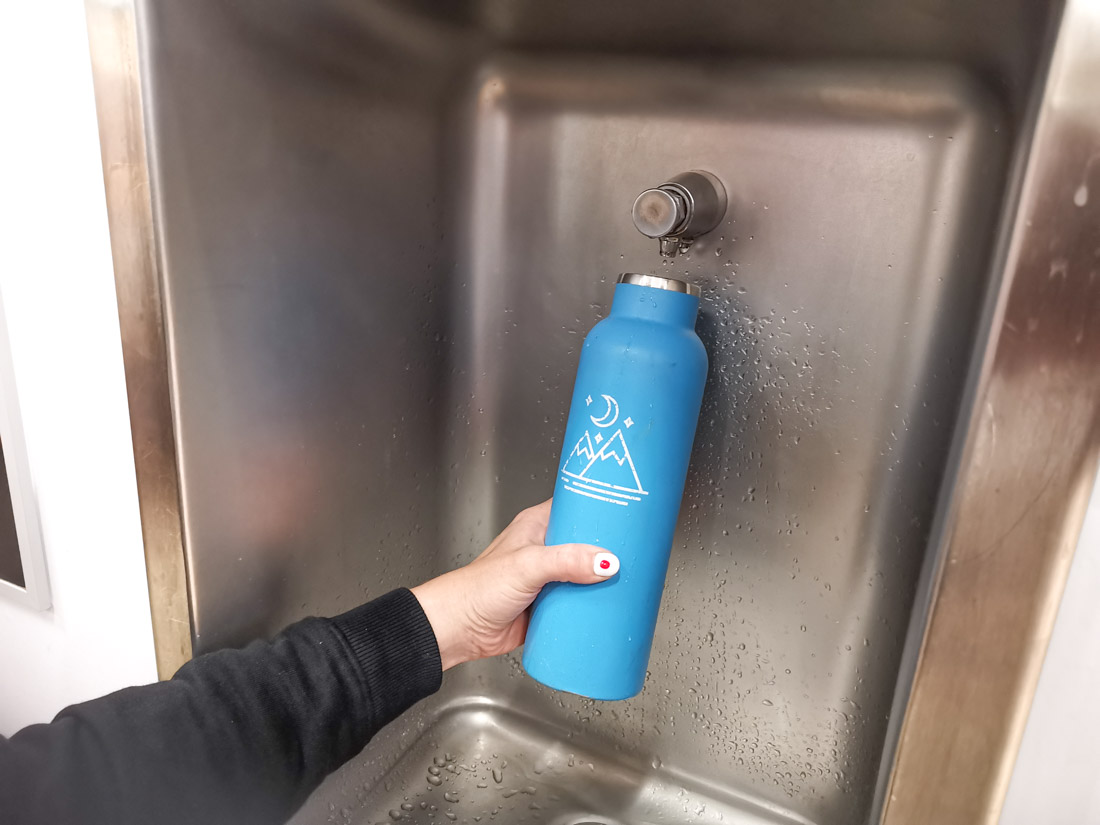
Toilets
Public toilets can be found in most parks, shopping centres (malls) such as Waverley Mall and St James Quarter and transport hubs.
There is often a small fee such as 30p. Cash is always accepted whereas cards are only sometimes accepted.
Some public disabled toilets require a RADAR key.
You should not use a disabled toilet unless you have a disability.
Not all disabilities are visible.
Department stores such as Harvey Nichols have free toilets for customers.
Some fast-food chains provide a code for customers to access restrooms.
Most public toilets are gendered.
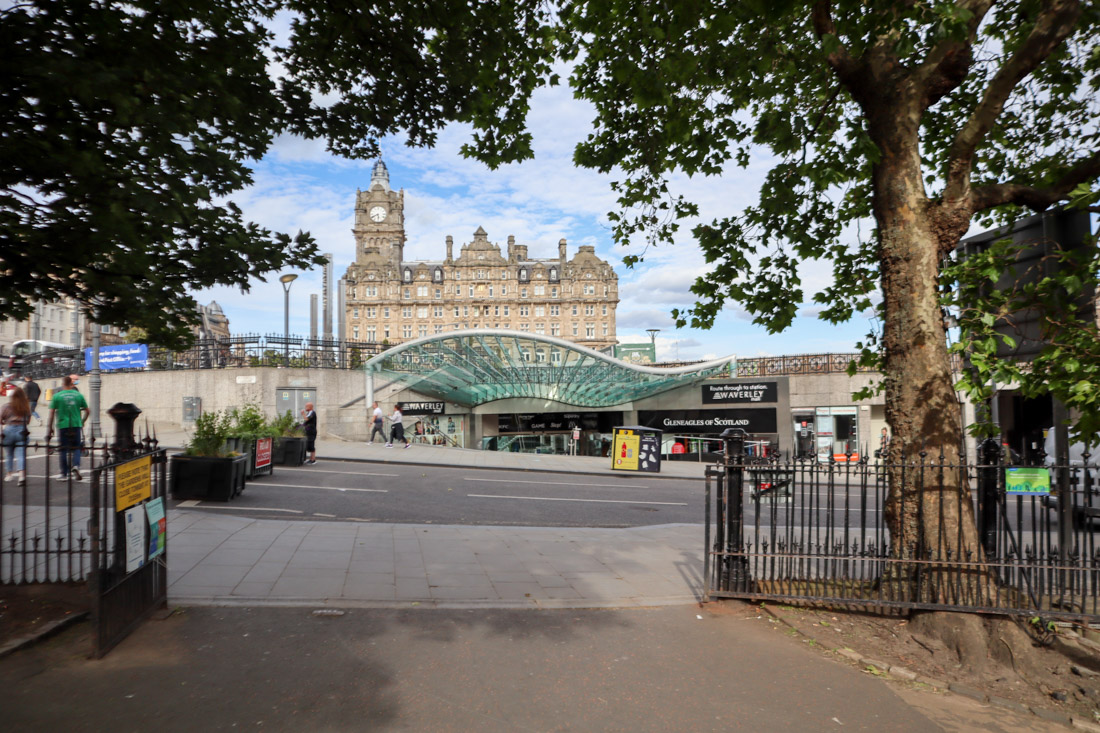
Accommodation in Edinburgh
There are many different types of accommodation to suit every budget and travel style or reason for visiting!
This includes suites for special occasions, affordable hotel rooms, private apartments, rooms in private homes, Scotland’s unique bed and breakfasts (B&B), hostel dorms and university halls rooms to rent.
Go to all of our accommodation guides.
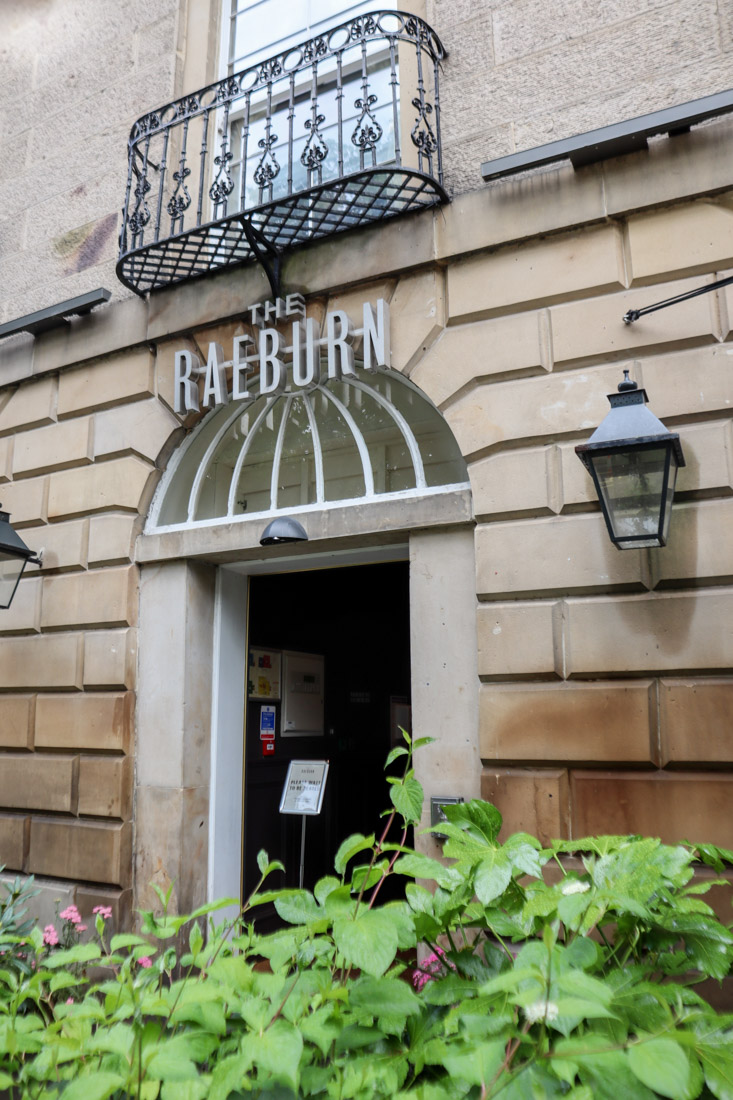
Edinburgh Hotels
Every area of Edinburgh has hotels that vary in price.
If visiting for the first time you’ll probably want to stay in the Old Town or the West End to be close to all the action.
For cool neighbourhoods which feel like villages go for hotels in Leith or Stockbridge.
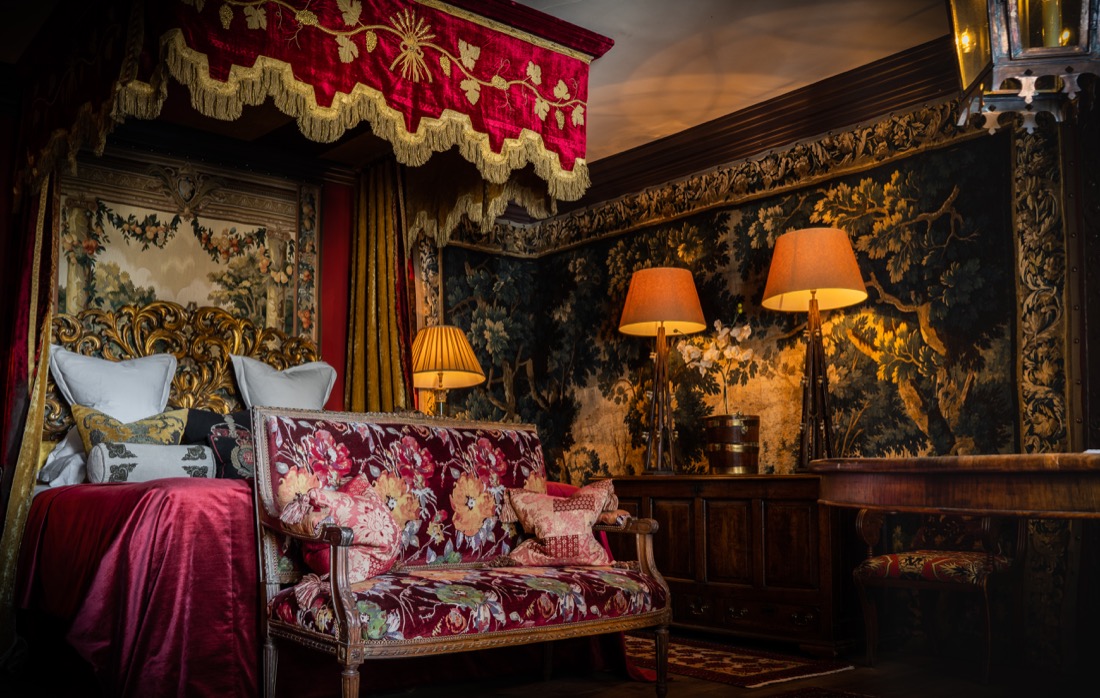
Edinburgh Bed & Breakfast
Staying in a B&B in Scotland can be a wonderful experience as you get to meet a local who works in hospitality and knows the area well.
Hosts also usually cook up a full Scottish breakfast or bowl of porridge to start off your jam-packed Edinburgh itinerary.
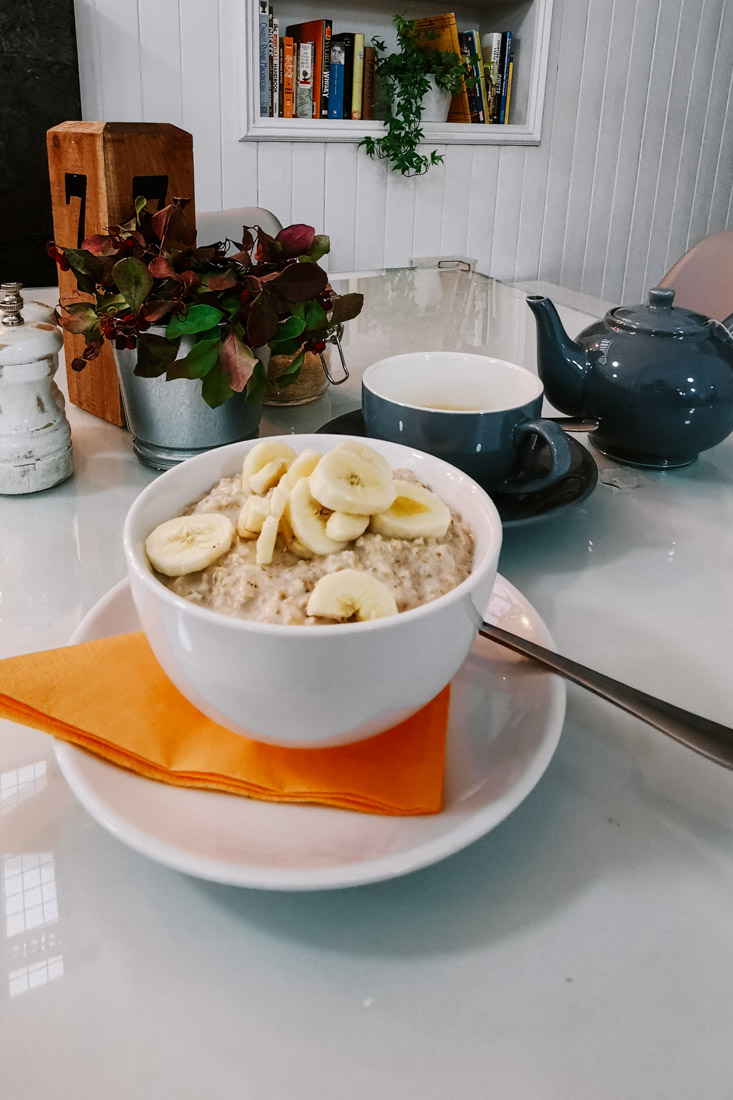
Edinburgh Apartments
You will find lots of apartments in Edinburgh around the Royal Mile which is an excellent location but can be a bit noisy.
Airbnb has been divisive in Edinburgh.
If you choose to stay in one, do your due diligence to research that the owner actually lives in Edinburgh and isn’t just an Airbnb mogul who snaps up apartments to rent out causing housing problems for locals.
Apartments can be ideal for those planning to stay long-term, in large groups, as part of a family, visitors with disabilities and/or those who prefer to dine at home.
Edinburgh has an extensive food and drinks delivery sector.
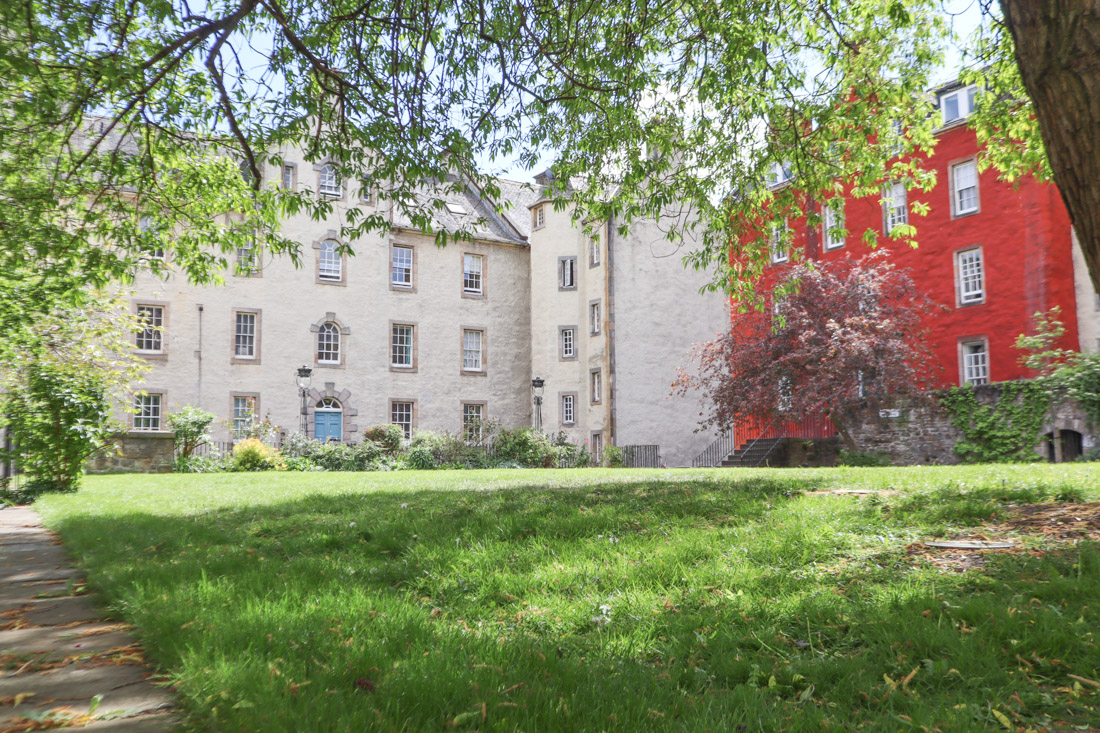
Edinburgh Hostels
Most of the popular Edinburgh hostels are located in the Old Town near the Royal Mile or lively Cowgate.
Hostels offer dorm beds in single and mixed rooms, pods for privacy and fully private rooms.
Some have shared bathrooms.
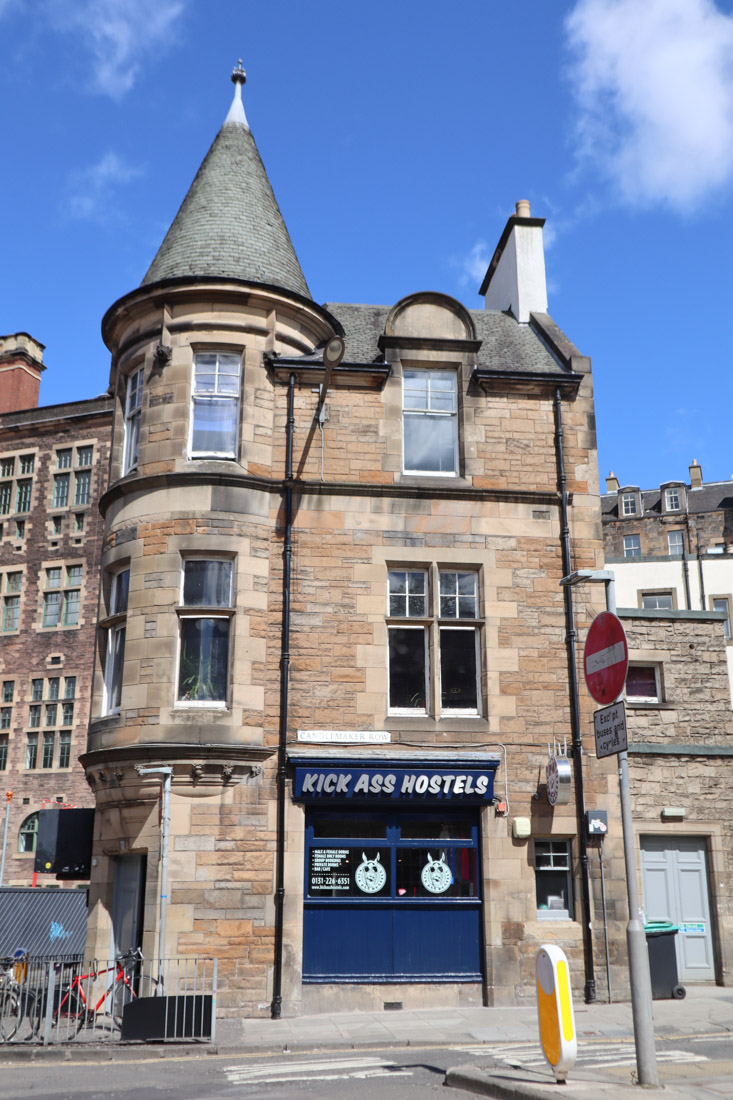
Especially Romantic Accommodation in Edinburgh
There are many romantic things to do in Edinburgh and perfect proposal spots.
Being a medieval city, there are quite a few gothic hotels that ooze sass and romance.
Read our full guide to romantic hotels in Edinburgh.
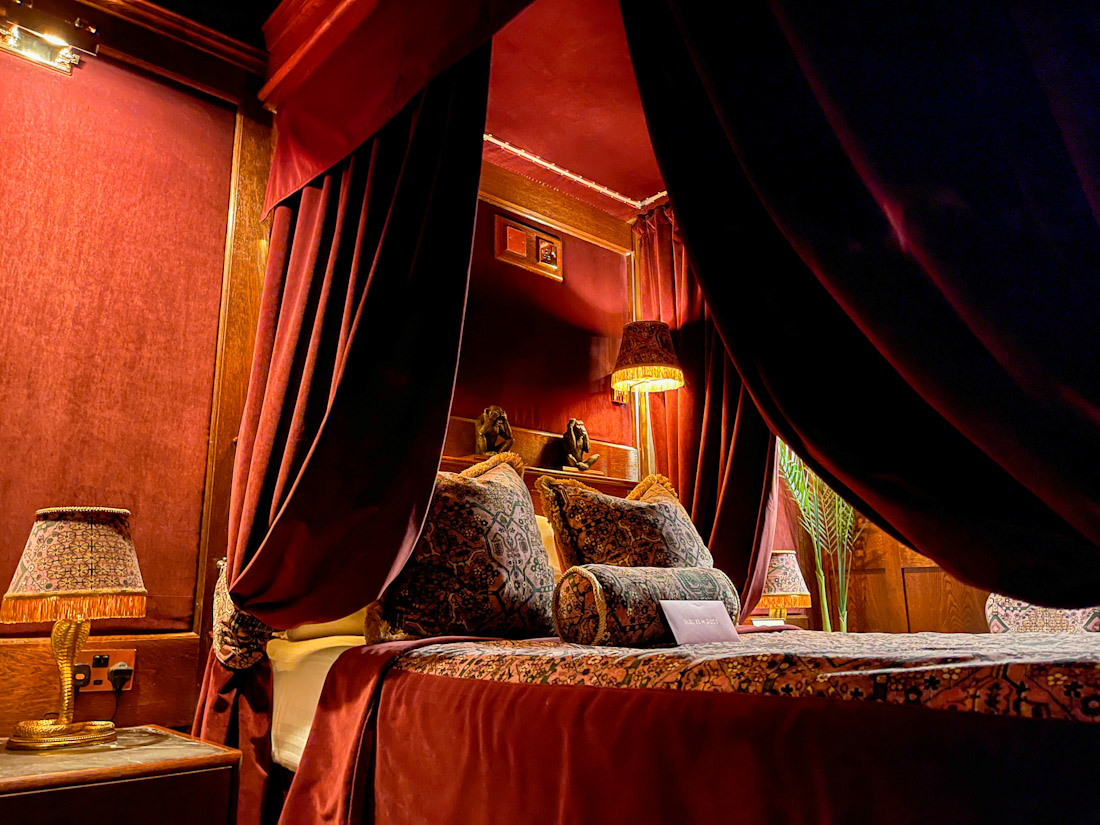
Stay in a Castle
While you can’t sleep overnight at Edinburgh Castle there is historic castle accommodation close to the city and beyond which take bookings.
Some have the traditional decor, others are modern, some have spas and most have restaurants.
Find out more in our guide to castles you can stay at in Scotland.
Hotel Guides By Type of Travel
- Hotels with parking
- Hotels that are romantic
- Hotels that are dog-friendly
- Hotels under £200
- Hotels with pools
- Hotels with Christmas decor
- Historic hotels in Edinburgh
- Hotels for the Fringe Festival
- Castle hotels in Scotland
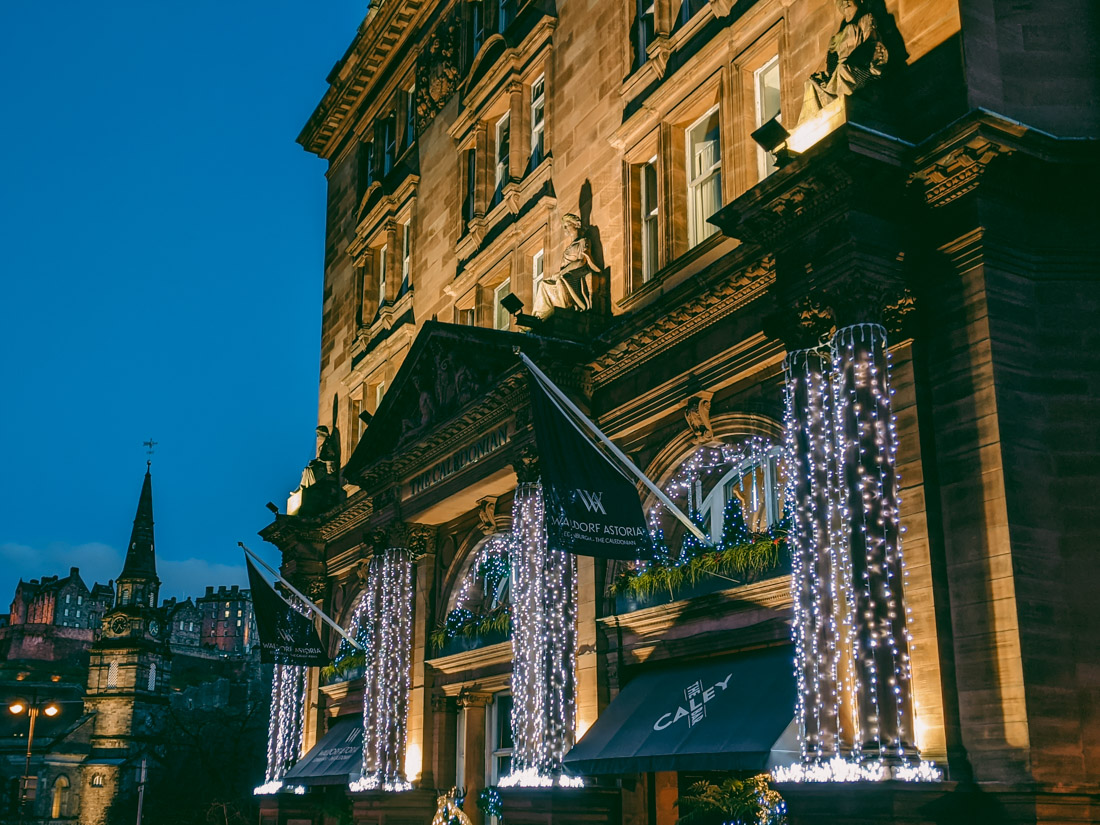
Hotel Guides by Location
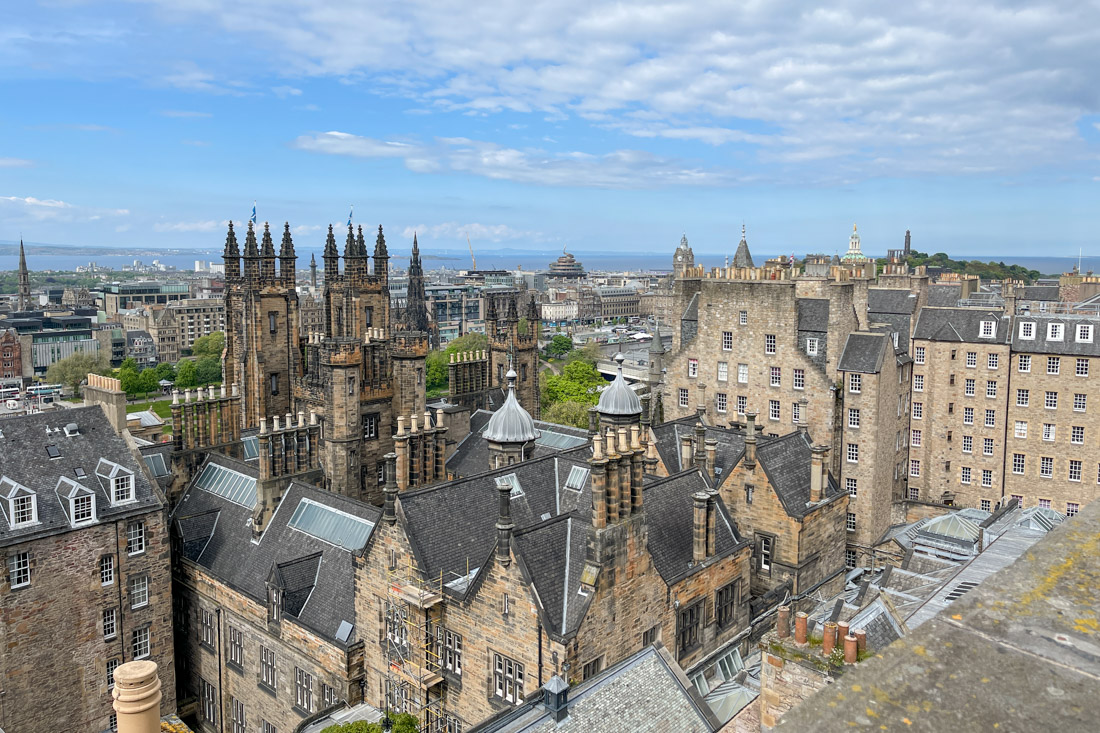
Where to Stay Guides
- Where to stay in Old Town
- Where to stay in the West End
- Where to stay in Stockbridge
- Where to stay in Leith
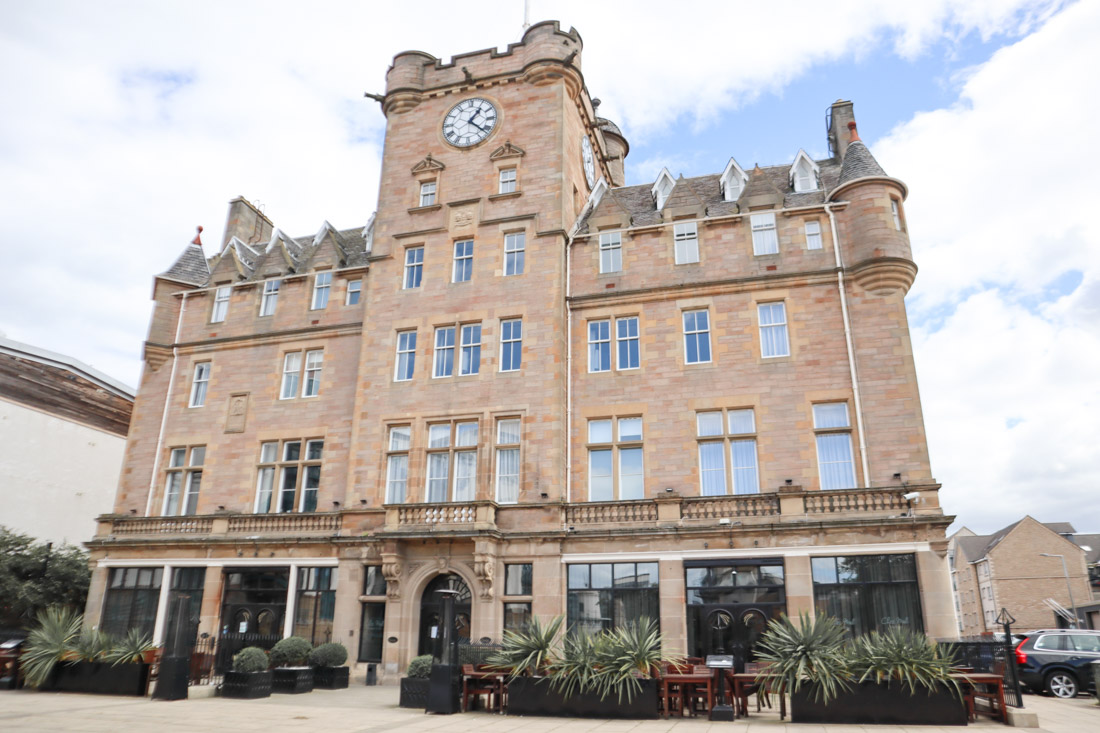
Eating Out in Edinburgh
Breakfast tends to start around 7am and brunch ends about 11am. Here’s our brunch guide.
Most hotels and restaurant breakfast menus will include a full Scottish breakfast of hot items such as haggis, black pudding, sausage, bacon, eggs and potato scones.
The city has lots of options if you prefer eggs benedict or pancakes such as Loudons where the below image was taken.
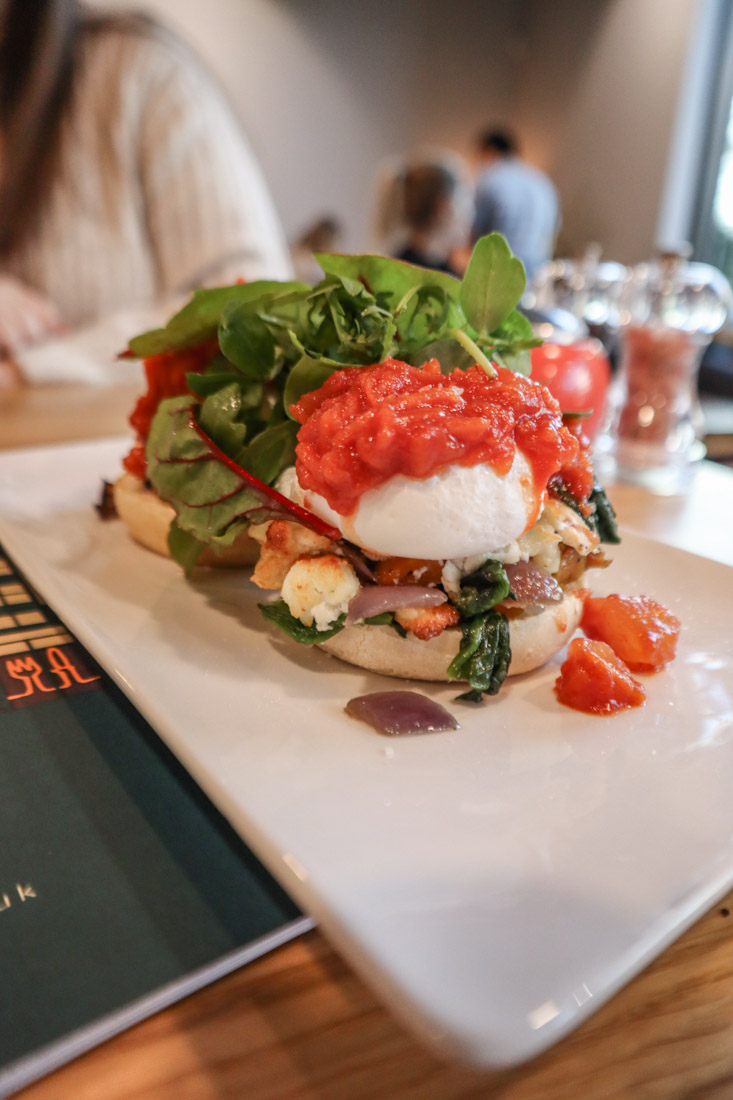
Lunch, or dinner as it’s referred to in some parts of Scotland, is enjoyed between 12pm and 2pm.
Some restaurants close between lunch and dinner.
Most cafes close for the day at 3pm.
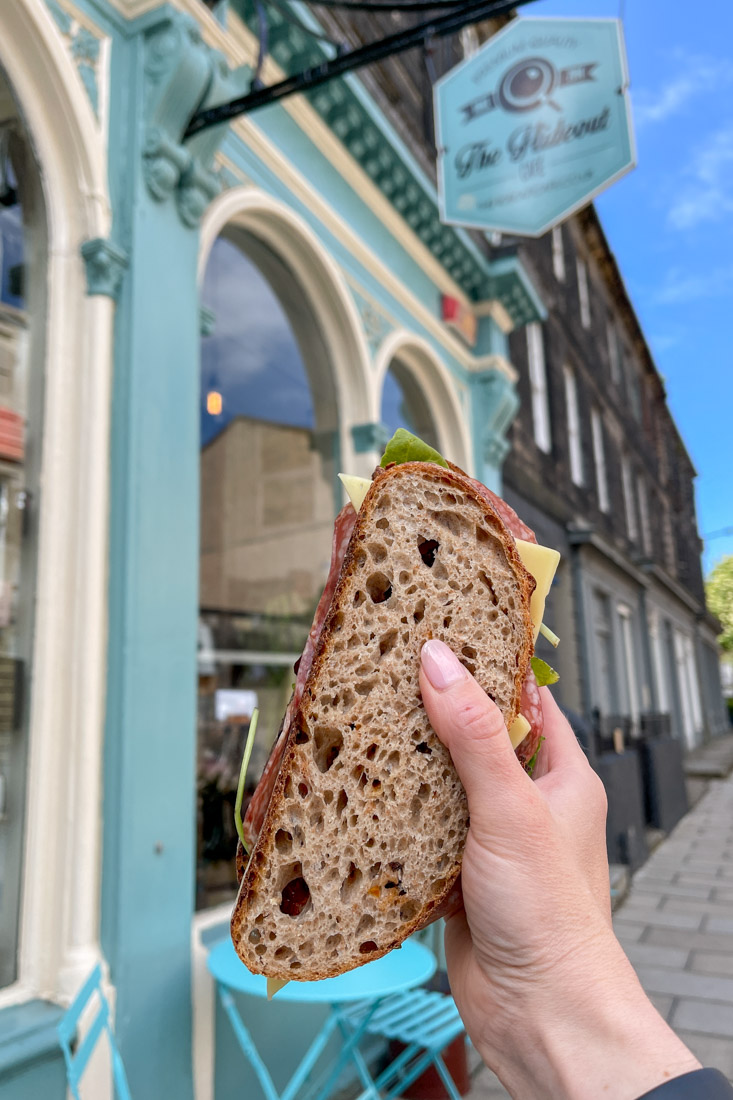
Enjoying a leisurely afternoon tea is a very popular thing to do.
Most hotels and upmarket venues such as The Signet Library cater for afternoon teas which include sandwiches, cakes, scones, tea and sometimes fizz.
Here’s our guide to the best afternoon teas in Edinburgh.
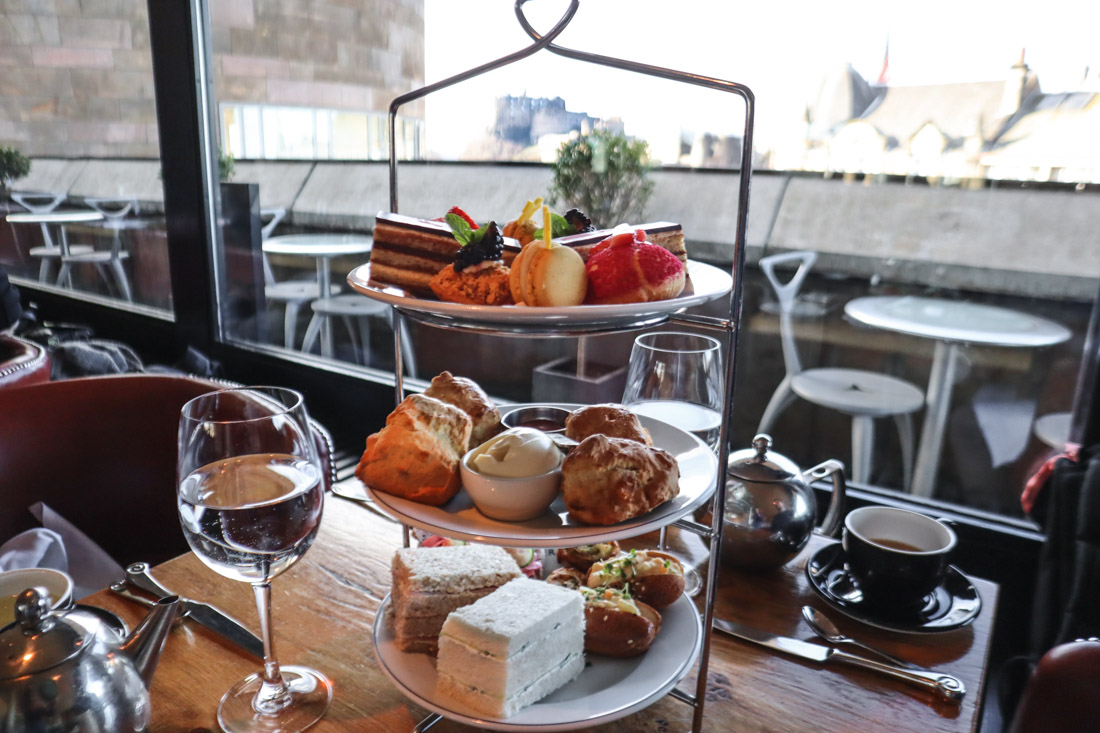
Some Scots call dinner “tea” and it is served from 5pm.
Restaurants will refer to the meal as dinner.
Tea is also a hot liquid drink served with milk.
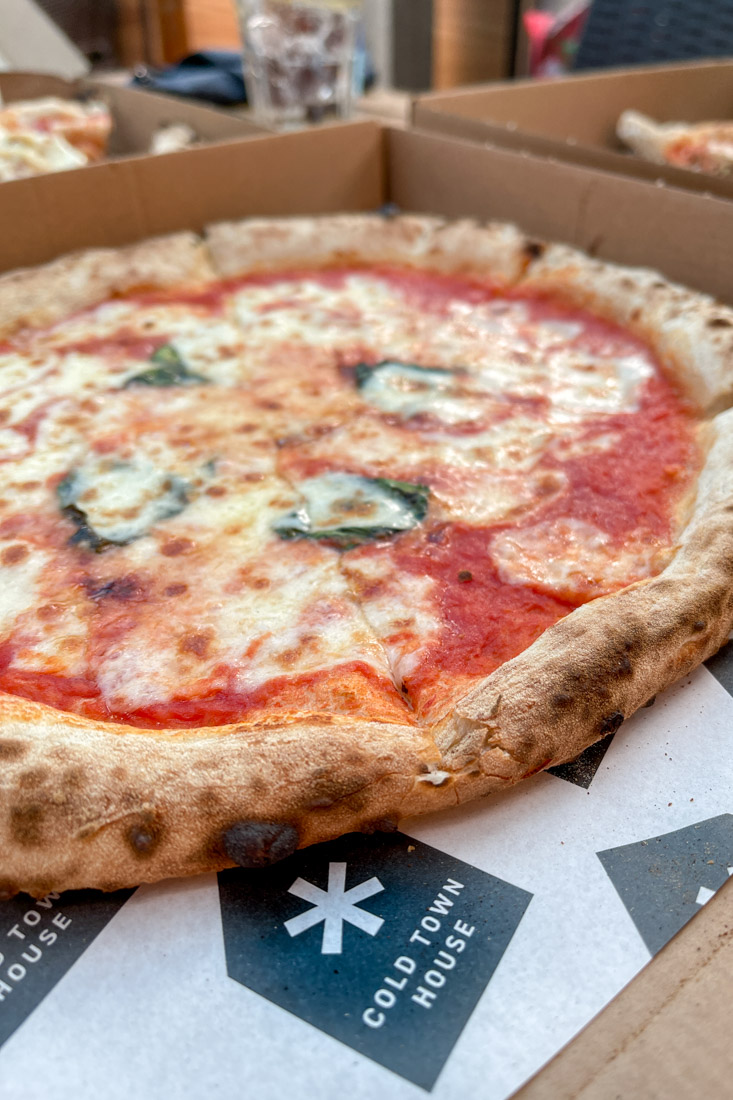
There are lots of takeaways serving pizzas, fish and chips, falafels and deep-fried Mars bars located around the Old Town.
They close around 1am.
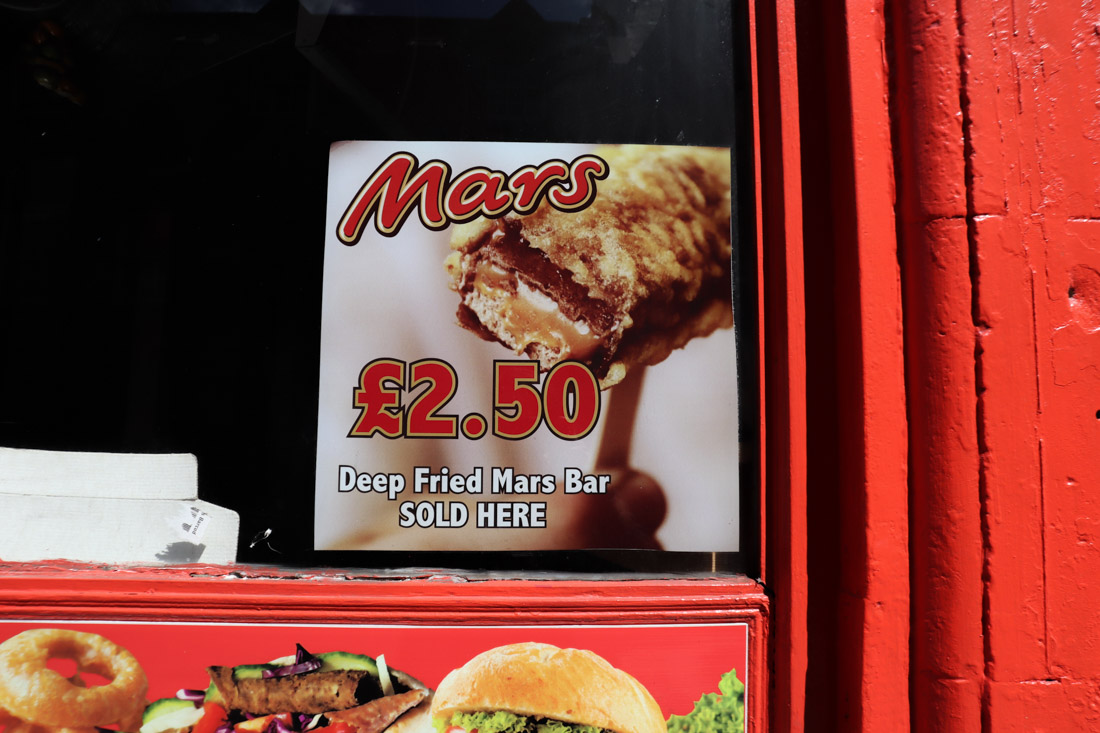
Edinburgh Farmers’ Markets
If you want to eat lunch on the go or pick up some local produce to cook back at your apartments check out the Edinburgh Farmers’ Markets located around the city.
- Castle Terrace: Saturday morning
- Grassmarket: Saturday 10am – 5pm
- Stockbridge: Sunday 10. am- 4pm
- Leith: Saturday 10am – 4pm
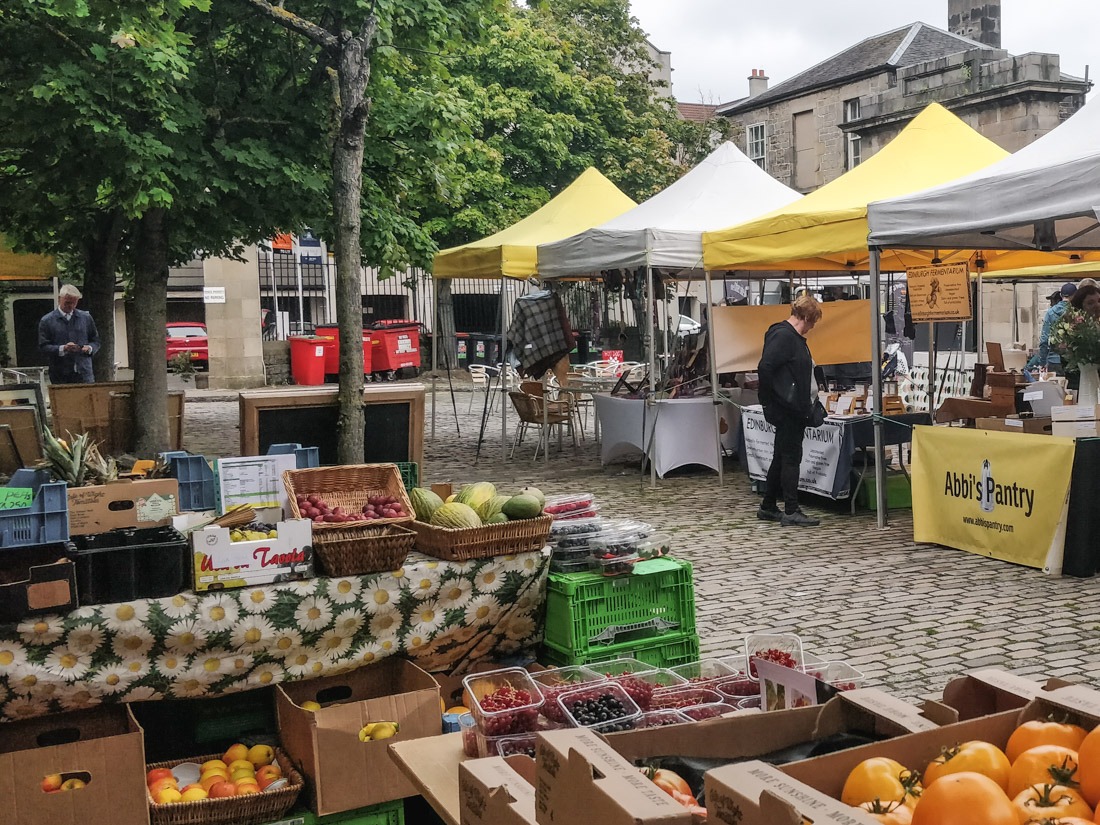
Our Food and Drink Guides
Edinburgh Packing List
One of the hardest parts of planning a trip to Edinburgh is knowing what to pack.
Since you can expect four seasons in one day, you need to pack lots of layers.
Comfortable shoes are also a must, you’ll be covering lots of steps!
Our extensive Edinburgh packing guide goes through what to pack for each season.

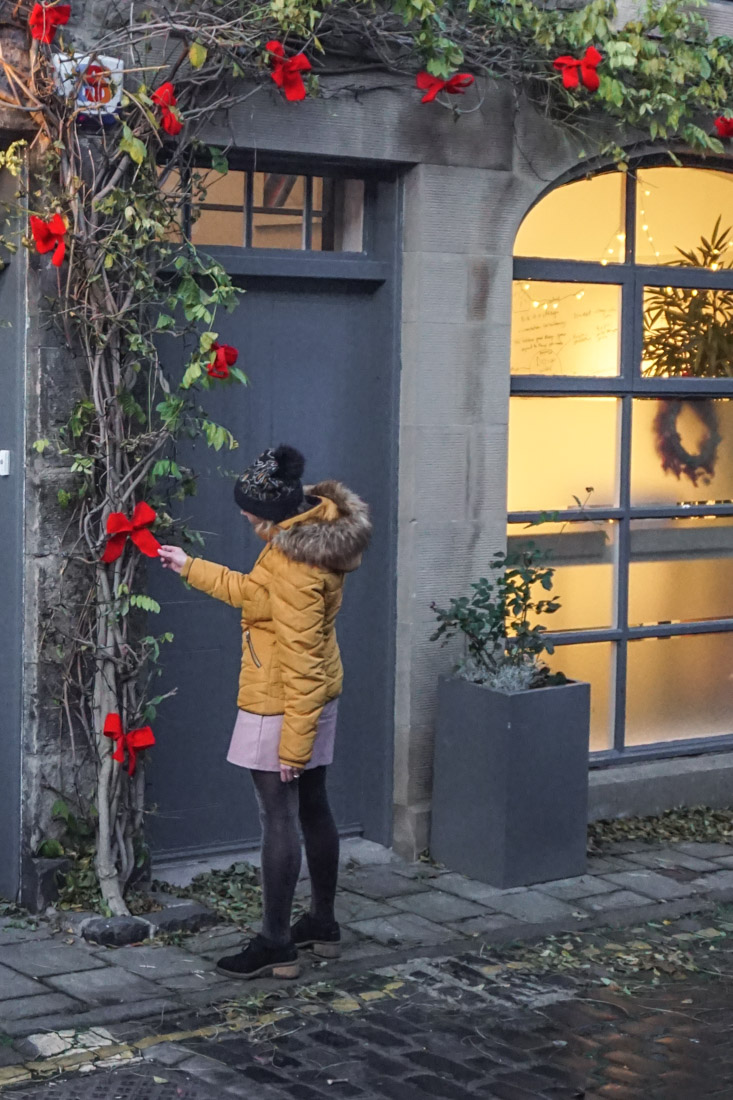
Electrical AC Plugs and Sockets
In Scotland, we use the UK plug which has three pins – one on the top and two on the bottom like a triangle.
We recommend this international travel plug which caters for all variations US/UK.
Most modern hotels will have USB charging slots.
Voltage is usually 230 volts. This is nearly double that of the US.
Sally Beauty Supply on the South Bridge deals with a lot of tourists with broken hair dryers!
Pack a dual wattage converter like this one.
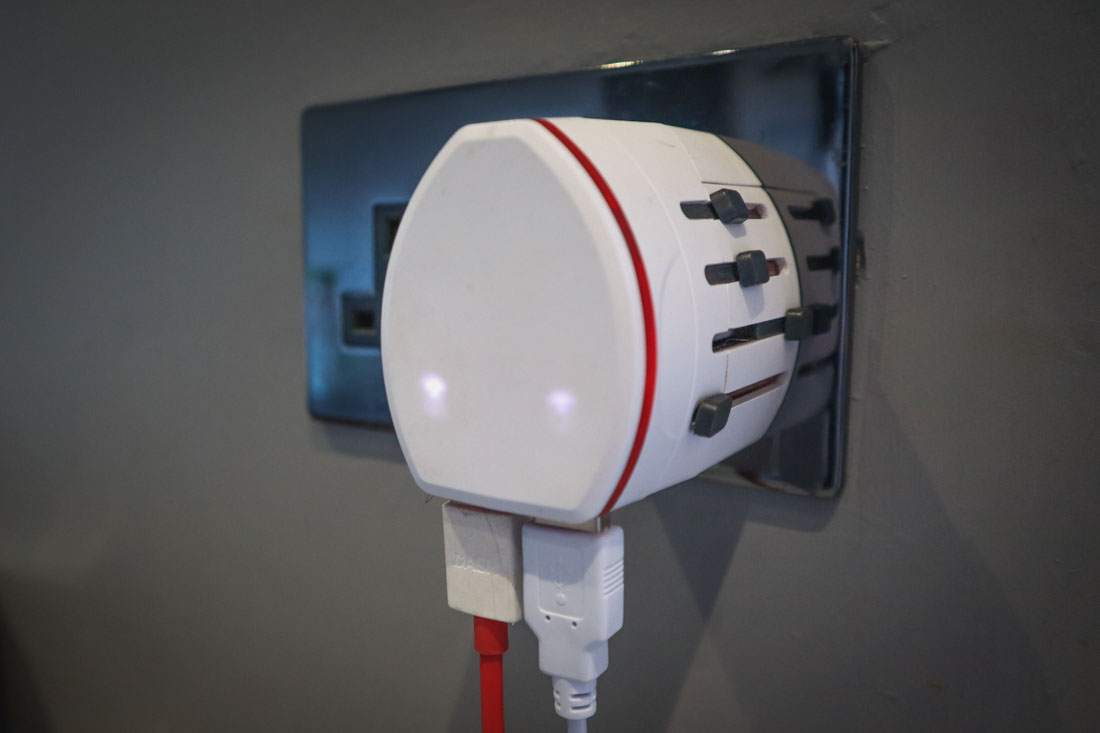
What To Buy In Edinburgh
The good news is that Edinburgh has lots of shops so even if you forget something you can just buy it in the city.
You may also want to pick up some Scottish souvenirs such as art, crafts, wool, tartan, whisky, gin or tablet.
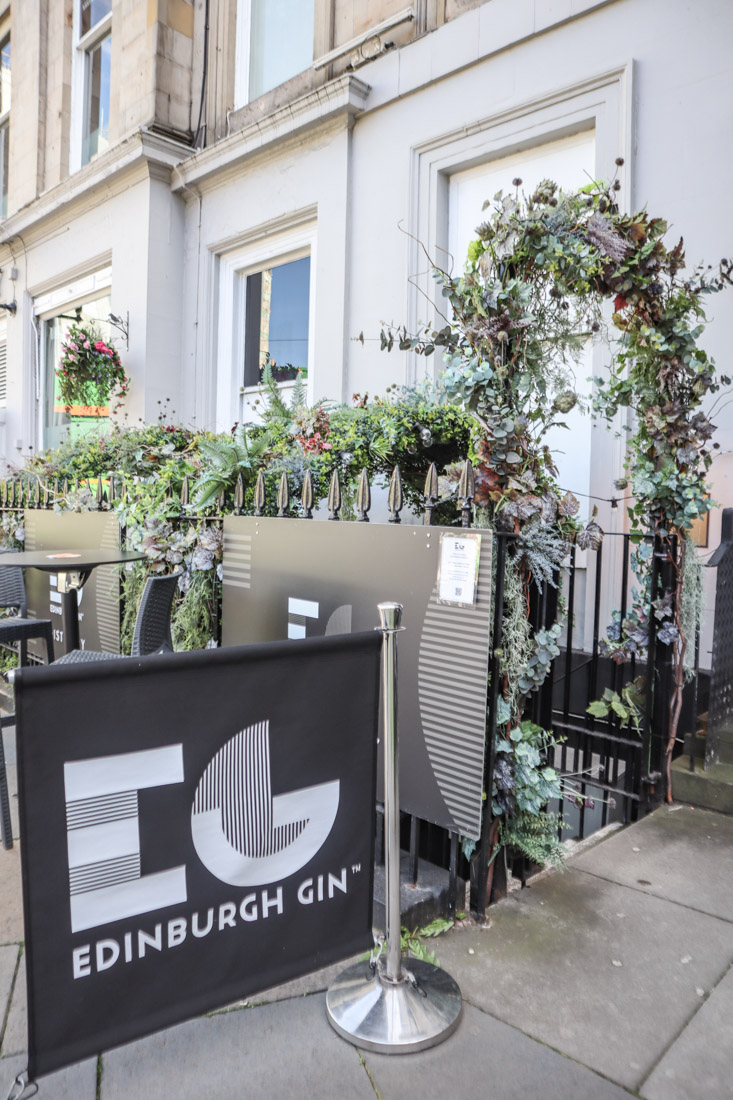
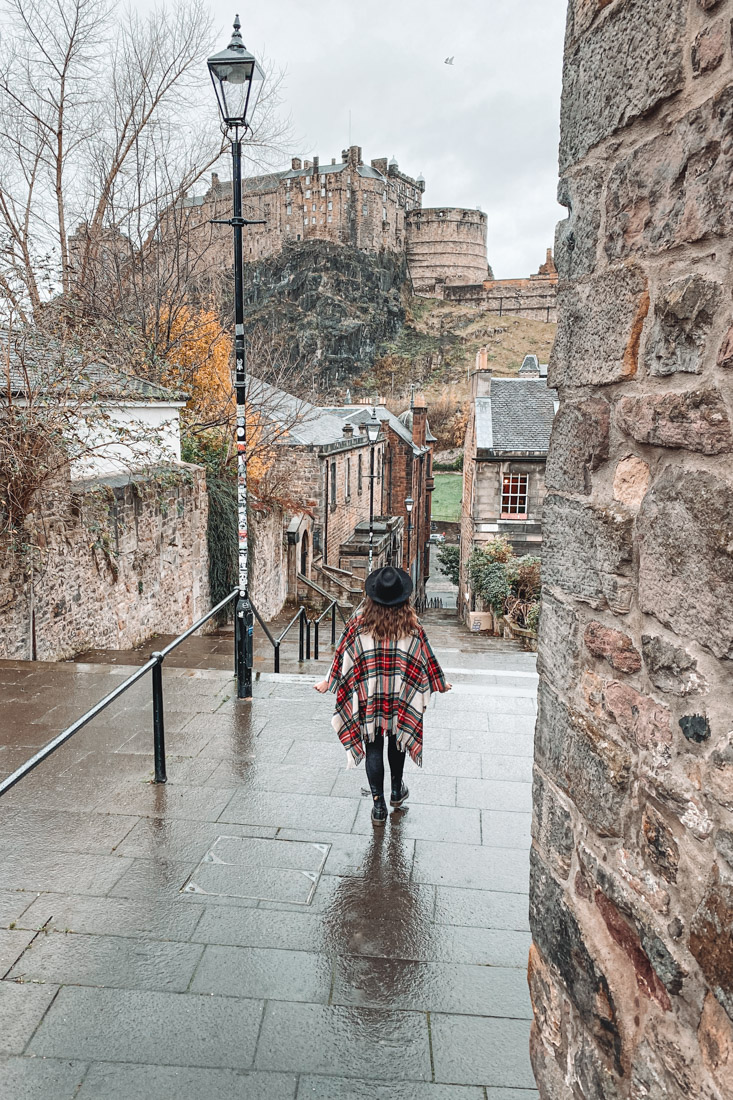
Shopping in Edinburgh
Here’s an overview of the shopping areas in Edinburgh.
- Princes Street: Chain stores, Scotland shops & hotels
- Rose Street: Outdoors gear & pubs
- George Street: Upmarket shops & bars
- West End: Independent shops, restaurants & bars
- St James Quarter: Modern shopping mall
- Waverley Mall: Mix of chain and independent shops & food court
- Cockburn Street: Independent stores & coffee shops
- Royal Mile: Wool, tartan, souvenir shops, restaurants, bars & attractions
- Leith Walk and Shore: Local craft shops, hip bars & fine dining
- Ocean Terminal: Chain shops, restaurants & Royal Yacht Britannia with free parking
- Stockbridge: Cafes, bars, cheese, wine & upmarket thrift stores
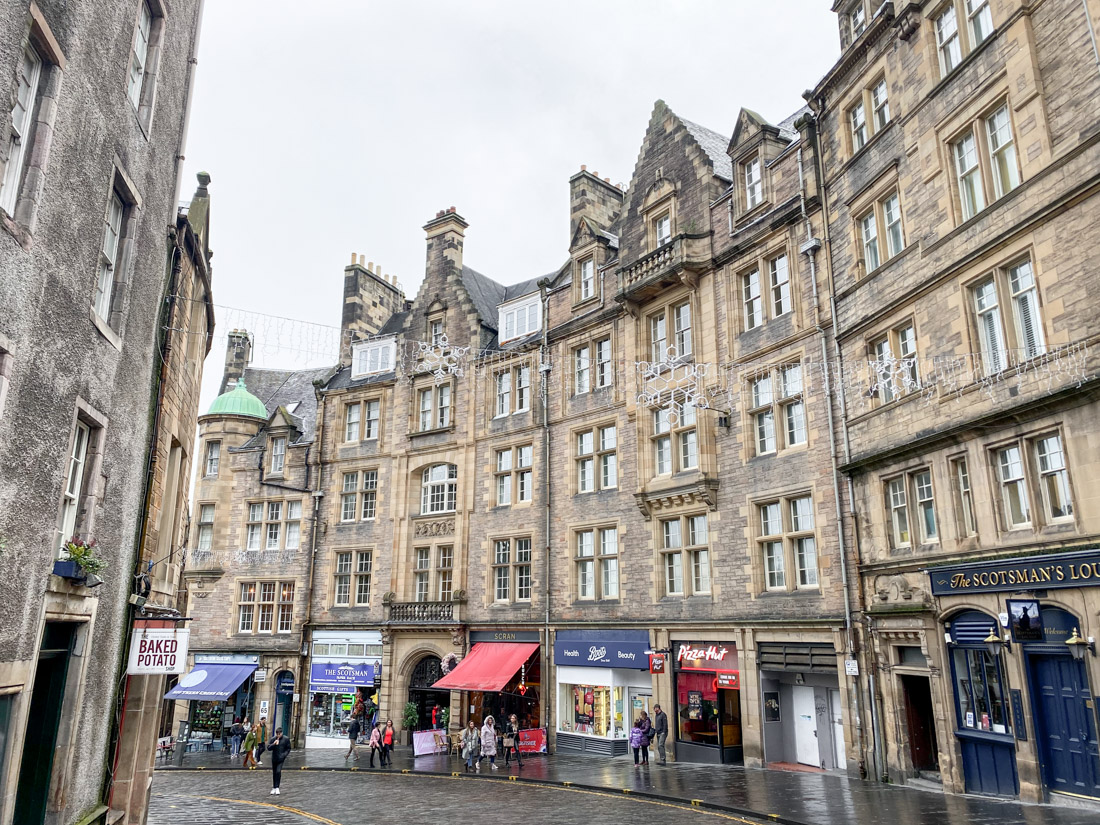
Out of Town
- Edinburgh Gyle: Chain shops, free parking, tram stop
- Edinburgh Fort: Popular shops and furniture stores
- Edinburgh Craigleith: Handful of clothes shops, Sainsbury’s supermarket/grocery store
- Livingston: Short train ride, 40 min drive to indoor shopping centre and designer outlet

Frequently Asked Questions
Where Can I Find Live Music?
While Edinburgh isn’t Glasgow when it comes to live music, there are a handful of decent venues!
- Whistle Binkies: Free live music
- Stramash: Free live bands at Cowgate
- Sneaky Pete’s: Compact and loud, ticketed
- Cabaret Voltaire: Cab Vol, cave, international artists
- Liquid Rooms: Music acts, ticketed
- The Voodoo Rooms: Local hands, ticketed
- Usher Hall: Large, traditional music hall, ticketed
- Leith Folk Club: Folk, Blues and Country music
Ceilidhs in Edinburgh
The most popular place for a weekly ceilidh dancing experience is the Ghillie Dhu in the West End.
Expect a high energy night filled with music, laughs and lots of swinging people about to Scottish tunes.
Guided dances take place every Friday.
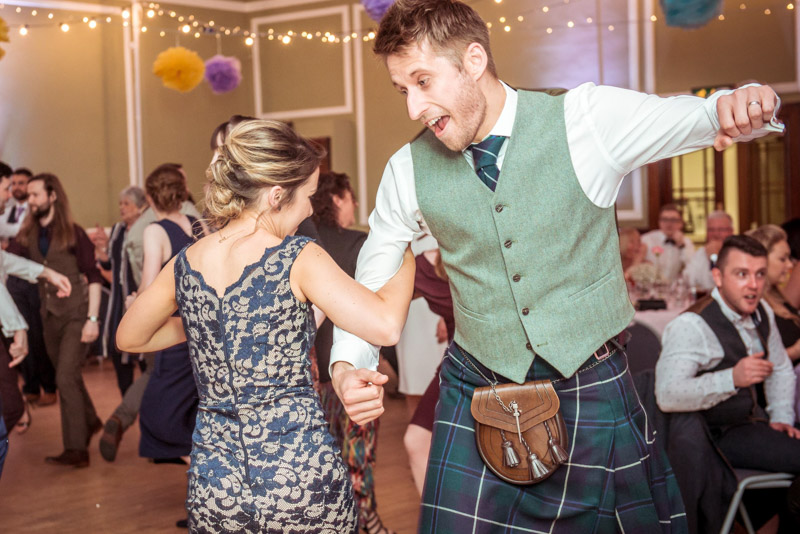
Where Can I Meet a Man in a Kilt?
At the Ghillie Dhu ceilidh although he might be part of the band!
You might see a man in a kilt on the Royal Mile, throw him a coin as he blasts a tune. That’s a piper.
Other options include attending a rugby game or a Scottish wedding.
If you do fall in love with a man or woman in a kilt, here’s how you move to Scotland and tips for making that huge life change.
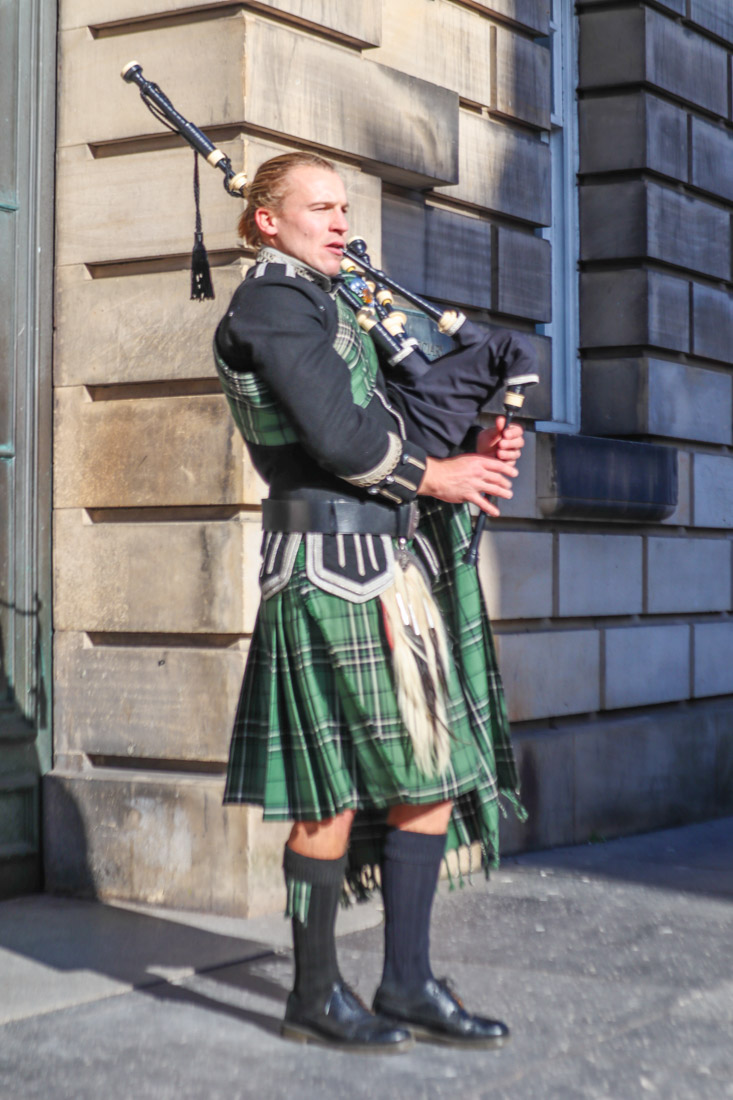
Where Can I Eat Haggis?
Haggis is ‘lamb, beef, oats, onions and spices, nothing more, nothing less. Haggis is basically like an oaty, spicy mince and a great source of iron, fibre and carbohydrate with no artificial colours, flavourings or preservatives.
There is no shortage of the Scottish national dish, haggis, in Edinburgh.
Every Old Town pub and restaurant has it on their breakfast and dinner menu.
At breakfast time, you’ll see haggis as part of a full Scottish breakfast or on a bread roll often with potato scone.
At dinner, it is usually served with turnip and potatoes and is called haggis, neeps and tatties.
Haggis is also stuffed into chicken and served with a cream sauce as part of a dish called Balmoral Chicken.
Haggis bonbons, which is haggis rolled in breadcrumbs, is a popular starter and a nice intro to the dish if you don’t want to go deep into a main meal on your first try.
You also get vegetarian haggis which is lighter on the taste buds.
Where To Find a Heilan Coo aka Highland Cow?
One of the closest places to Edinburgh to see a Highland cow is at the Pentland Hills where Swanston Farm is located.
This is a working farm so you can’t visit the cow but you can see it.
Head to the Swanston Restaurant and request the Highland Cow leaflet for directions and advice on how to spot the cow without disrupting farm business.
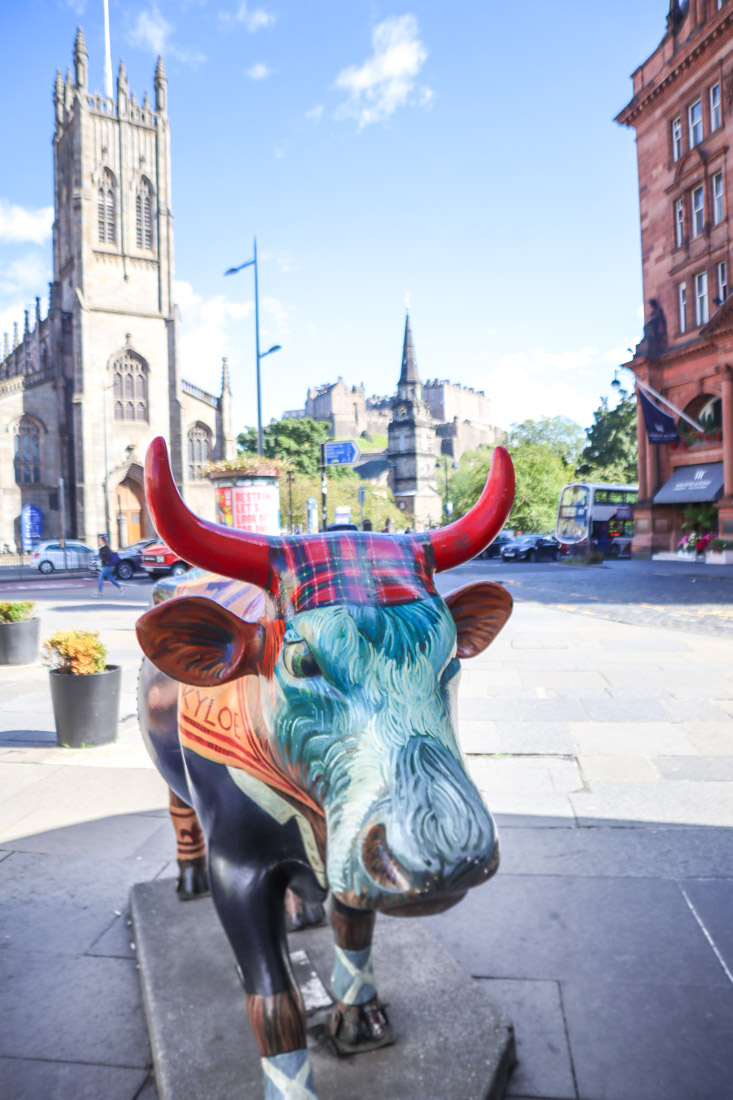
Prestonfield House, one of our most romantic restaurants in Edinburgh, has two Highland cows and peacocks too!
You can enjoy a meal at Rhubarb, an afternoon tea in the garden or a round of golf then an overnight stay at this country house.
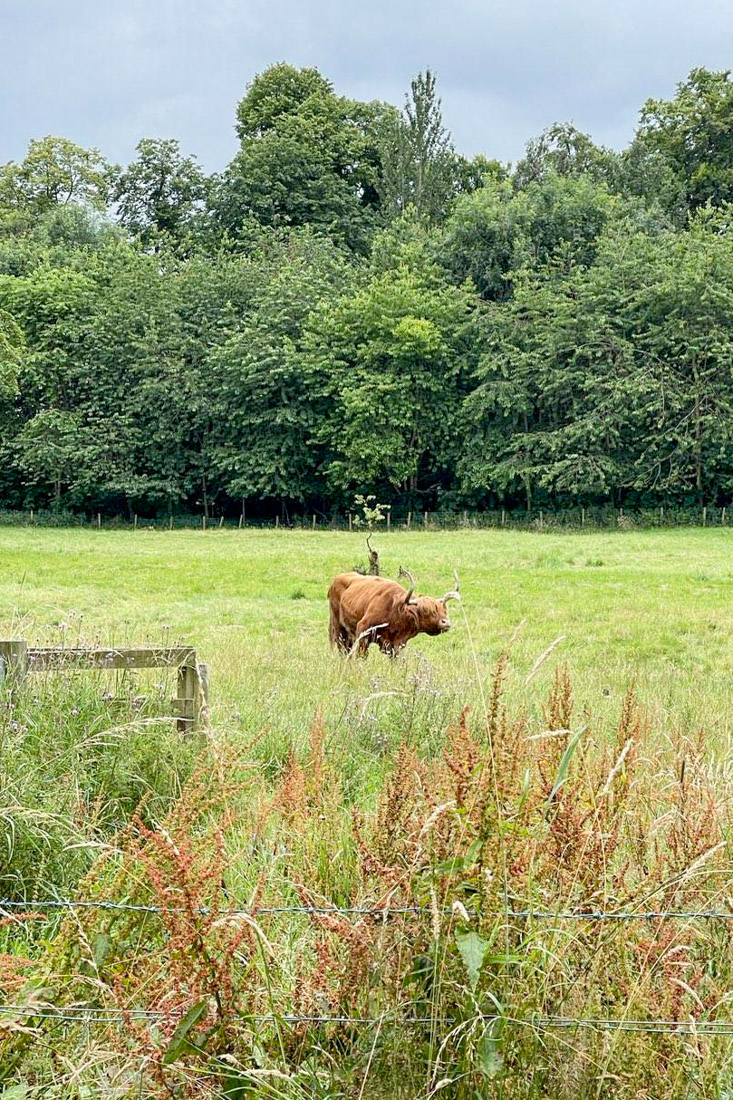
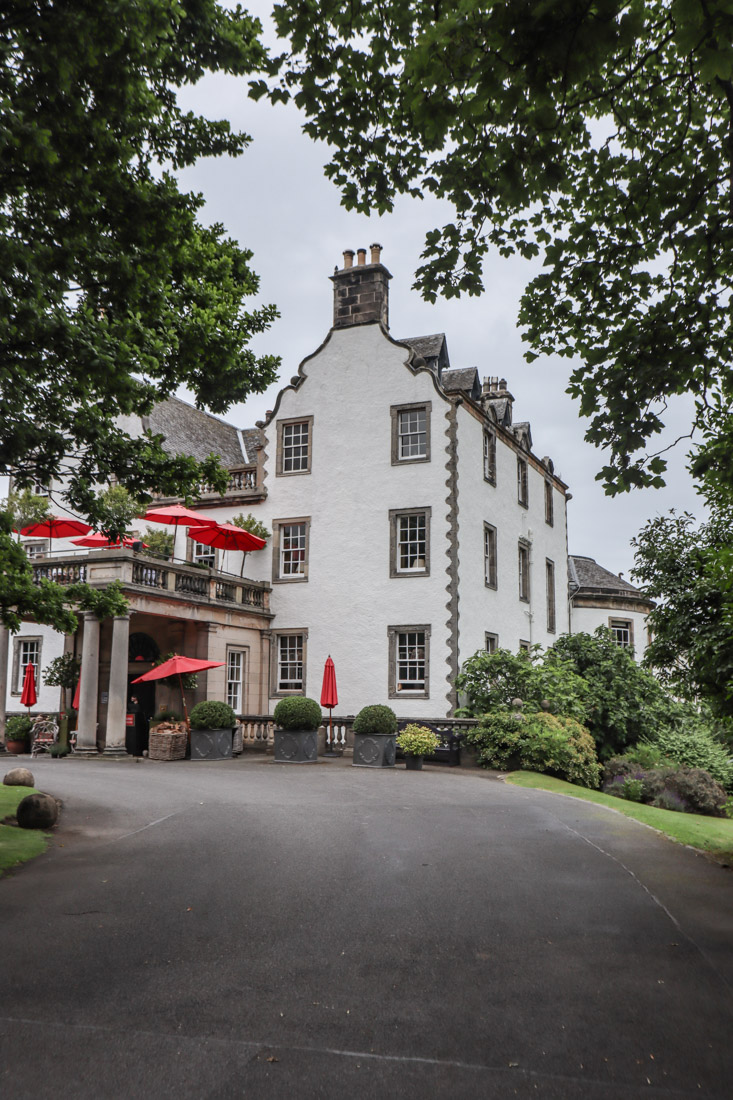
Can I visit the Highlands from Edinburgh?
Yes, you can visit the lochs and glens of the Scottish Highlands from Edinburgh.
There are a number of tours that leave from the capital and last for 1-4 days.
You can read about them all here.
Or, read our guide on how to get to Loch Ness.

Where is Harry Potter in Edinburgh?
There’s no denying that Harry Potter draws in muggles from around the world who want to see the street that inspired Diagon Alley, where the last book was written and to leave their mark like thousands of others in Dumbledore Army on a popular cafe toilet wall…
Everything you need to know about Harry Potter locations can be found here.
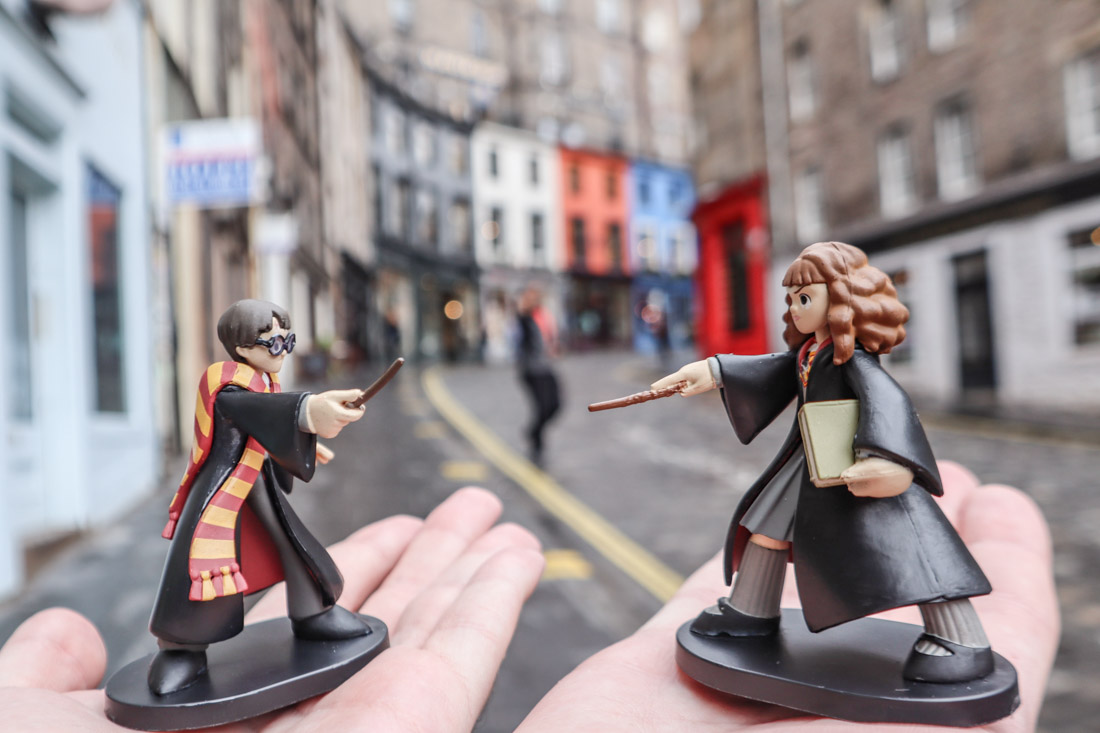
Where is Outlander in Edinburgh
Another TV show that encourages a pilgrimage to the city is Outlander.
Visit Castle Leoch, Cranesmuir and Inverness from the 1940s on these days trip from Edinburgh!
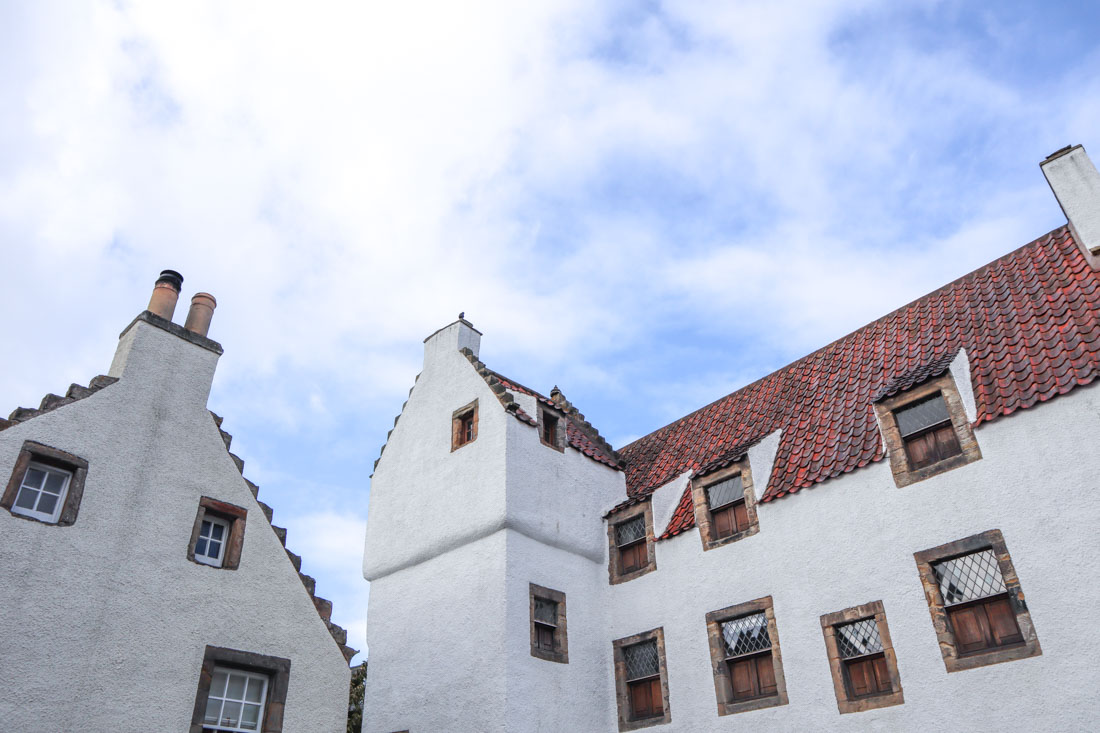
Where are the Best Views in Edinburgh?
Photography fans will love the following viewpoints.
- Calton Hill
- The Vennel
- Advocate Close
- National Museum of Scotland
- Chaophraya Thai restaurant
Here’s our guide to dreamy Instagram spots in Edinburgh.
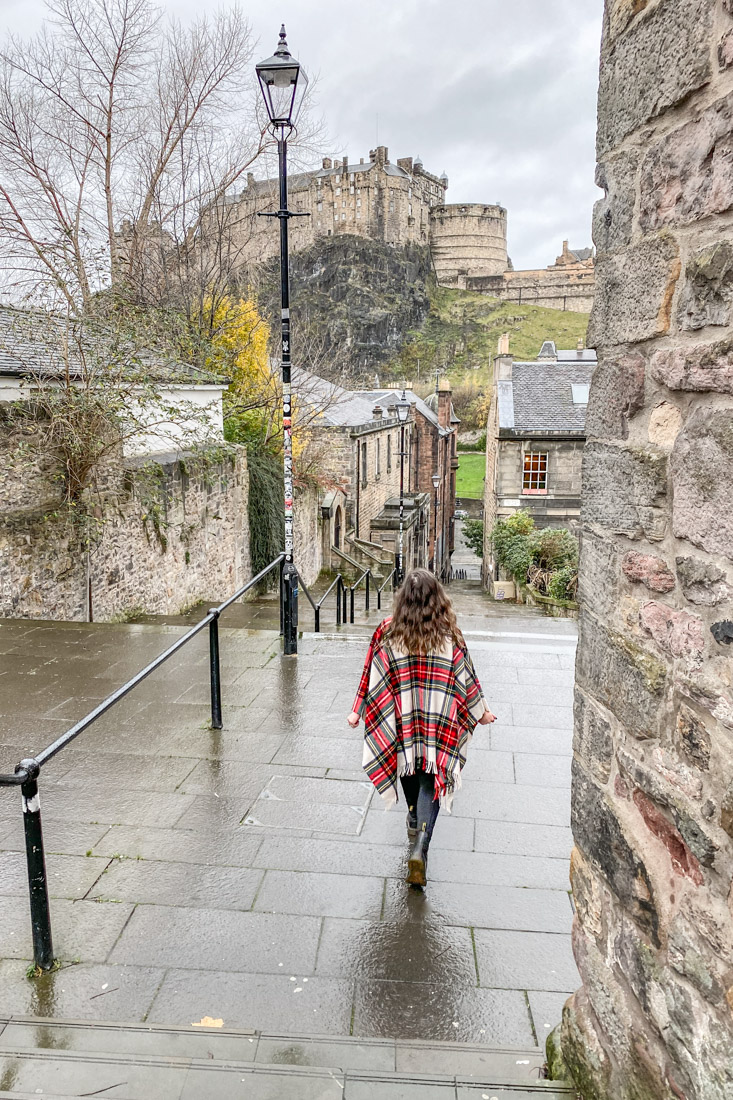
How To Spend 1-4 Days In Edinburgh
We’ve curated a series of free itineraries to help plan your trip to Edinburgh.
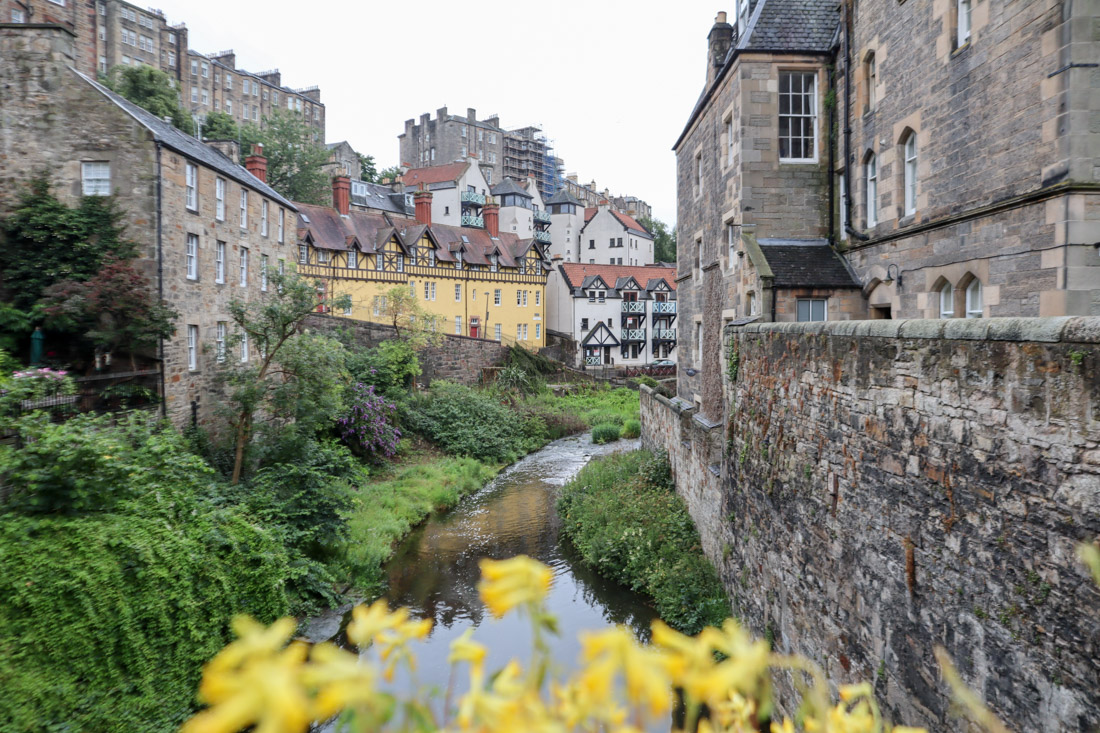
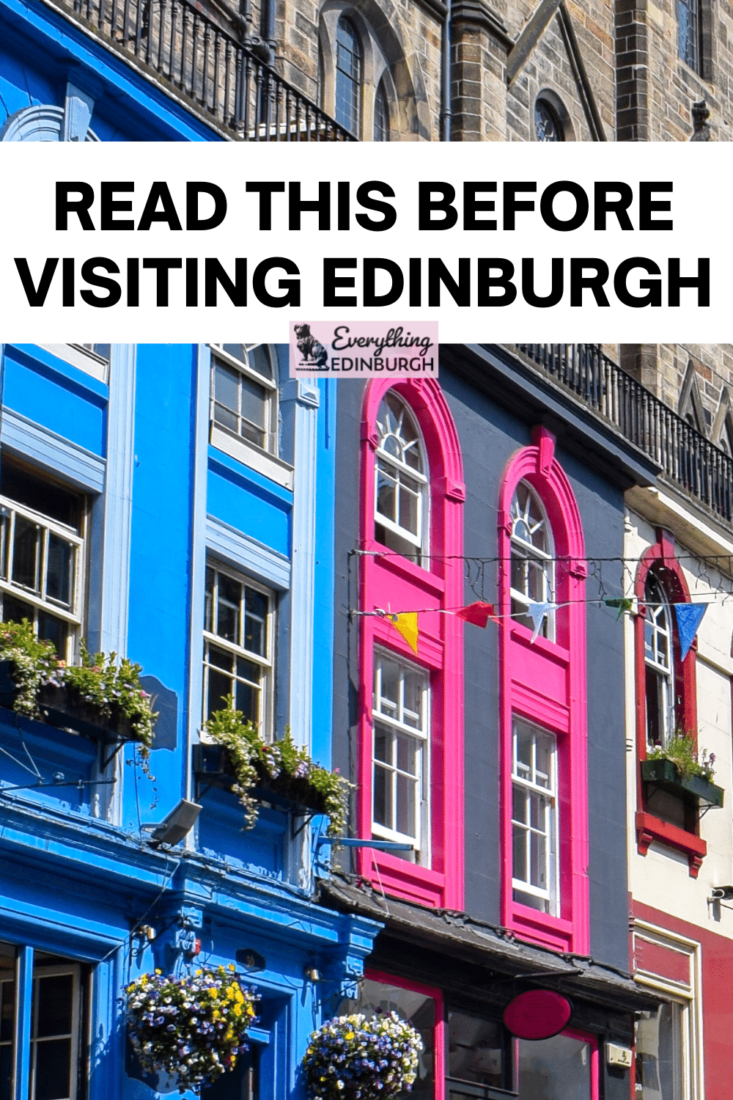
Any questions or comments?
Let us know below.

